
After the storm: what the floods have taught us


We can help you create sustainable waterways for generations to come






After the storm: what the floods have taught us


We can help you create sustainable waterways for generations to come




The use of groundwater is one area Australia needs to focus. As the population grows and more pressure is placed on existing water resources, we must consider how to keep our groundwater clean and refresh it. Fascinating research suggests that millions of farmers in Bangladesh have been mitigating flood damage by pumping vast amounts of groundwater. The groundwater is completely replenished during the monsoon seasons because of the permeable rock that contains and transmits groundwater.
While I do not recommend such an approach for Australia, understanding how those farmers have used groundwater to irrigate their rice paddies, boost their agricultural yields, and protect against excess flood damage, could be helpful for authorities worldwide. Understanding groundwater resources, their protection and replenishment will be vital for future generations.
As we approach the end of 2022, it is an excellent opportunity to look at how quickly things have grown for Inside Water. This publication has grown rapidly since the beginning of the year, and now we are publishing our third edition.
In 2022, we have seen thousands of people read our articles and subscribe to our magazine. The industry has welcomed this publication, and I am proud to be a part of it.
Further, corrosion management continues to be essential for water utilities, local councils, and other groups across the country. With the ageing infrastructure in almost every point around Australia, millions of dollars are being invested in pipes, valves, sensors, and meters that
reduce water leakage and ensure the high quality of drinking water.
A new regular feature starts in this issue, called Young Professionals. It is an opportunity to highlight young researchers, scientists, engineers, and staff across the water industry that are making a difference. Both are at the cutting edge of their fields, and I am excited to introduce more exciting individuals from across the sector to readers of Inside Water.
Along with our regular contribution from media partner VicWater, we also spoke to the Chair of the National Committee for Women in Engineering (NCWIE), Zhenya Pavlinova. NCWIE is an Engineers Australia community group that aims to make engineering more inclusive by valuing, supporting and celebrating the contributions of female engineers.
Getting the insight of an academic is always fascinating, and Professor Stuart Khan from UNSW has a broad interest in how the new federal government addresses a range of water challenges.

As we head out of 2022 and into 2023, all of us here at Inside Water and Prime Creative Media wish everyone the happiest holidays and the best for the New Year!
Chief Executive Officer
John Murphy john.murphy@primecreative.com.au
Chief Operating Officer
Christine Clancy christine.clancy@primecreative.com.au
Group Managing Editor
Sarah Baker sarah.baker@primecreative.com.au
Managing Editor
Mike Wheeler mike.wheeler@primecreative.com.au
Editor Chris Edwards chris.edwards@primecreative.com.au
Design
Daz Woolley/Tom Anderson
Head of Design Blake Storey blake.storey@primecreative.com.au
Design Production Manager
Michelle Weston michelle.weston@primecreative.com.au
Business Development Manager
Chelsea Daniel-Young chelsea.daniel@primecreative.com.au p: +61 425 699 878
Client Success Manager Glenn Delaney glenn.delaney@primecreative.com.au
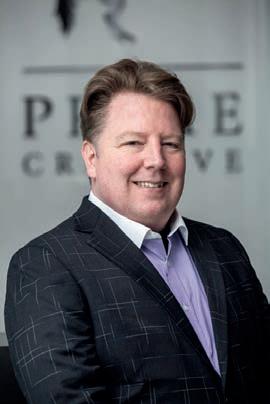
Head Office
Prime Creative Pty Ltd 379 Docklands Drive, Docklands, Victoria 3008 p: +61 3 9690 8766 f: +61 3 9682 0044 enquiries@primecreative.com.au www.insidewater.com.au
+61 3 9690 8766 subscriptions@primecreative.com.au
Inside Water is available by subscription from the publisher. The rights of refusal are reserved by the publisher
All articles submitted for publication become the property of the publisher. The Editor reserves the right to adjust any article to conform with the magazine format.
Inside Water is owned by Prime Creative Media and published by John Murphy.
All material in Inside Water is copyright and no part may be reproduced or copied in any form or by any means (graphic, electronic or mechanical including information and retrieval systems) without written permission of the publisher. The Editor welcomes contributions but reserves the right to accept or reject any material. While every effort has been made to ensure the accuracy of information, Prime Creative Media will not accept responsibility for errors or omissions or for any consequences arising from reliance on information published. The opinions expressed in Inside Water are not necessarily the opinions of, or endorsed by the publisher unless otherwise stated.

Cover Story – Xylem
Xylem knows that groundwater is a valuable resource. Governments are investigating new ways to manage as climate change stretches this resource. How technology supports groundwater management is part of Xylem Analytics’
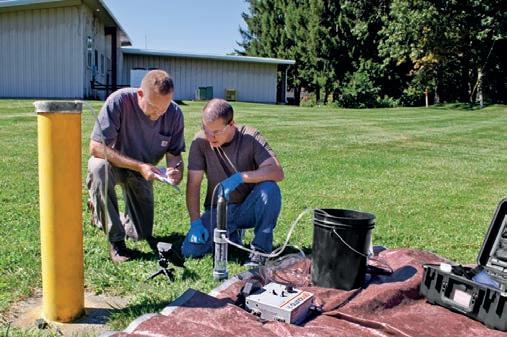
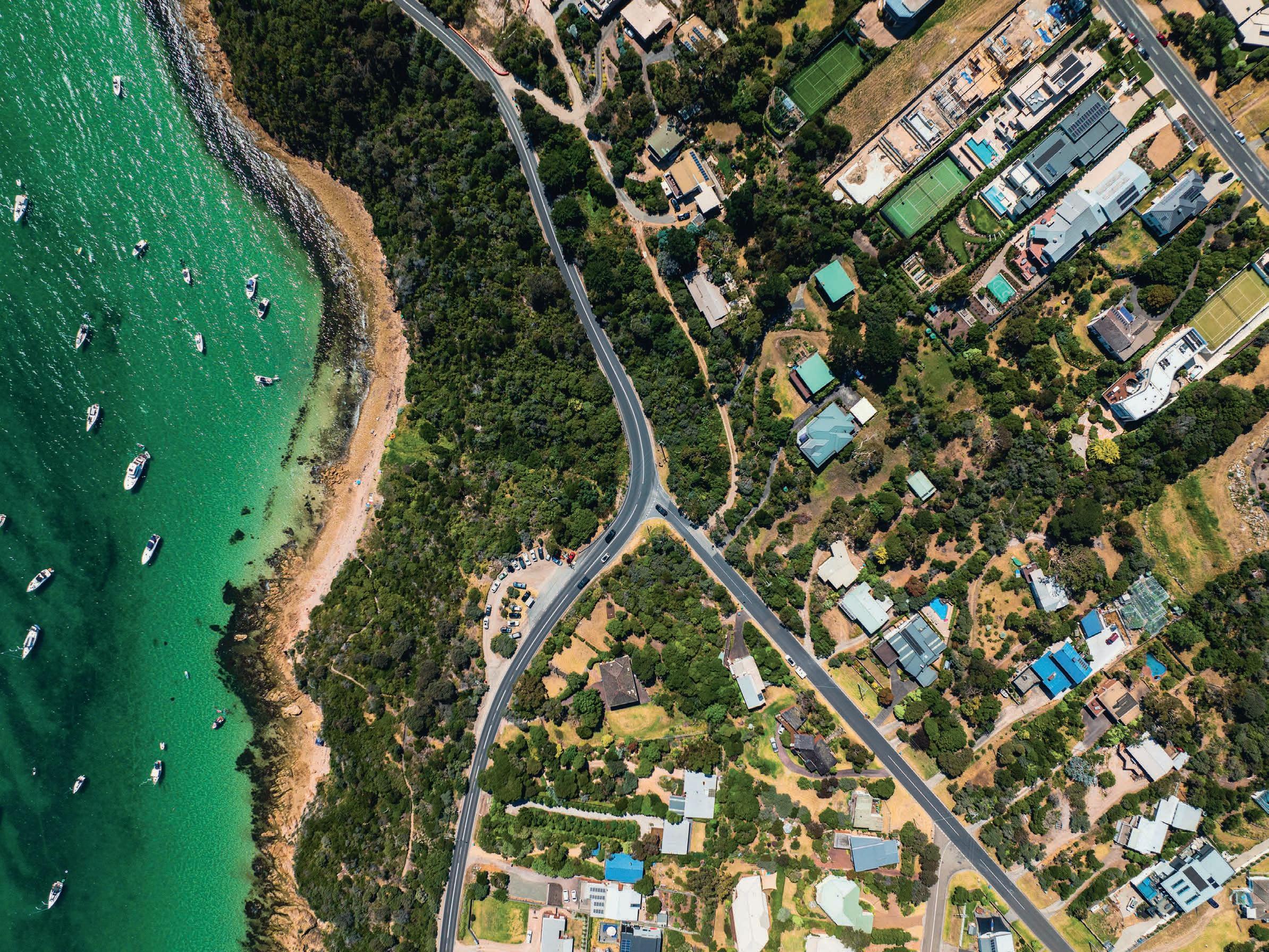
Young Professional Cheng Zhang is a young researcher at the University of Queensland. He has created a reusable substance that could help remove forever chemicals like PFAS from our waterways. Inside Water spoke to him to find out more. Pages 16-18.
Huan Liu is a PhD student at the University of Technology Sydney (UTS). Her cutting-edge research uses a byproduct from wastewater treatment for sludge disposal. She has developed a new treatment technology that would reduce the amount of waste by 15-40 per cent and recover energy from the
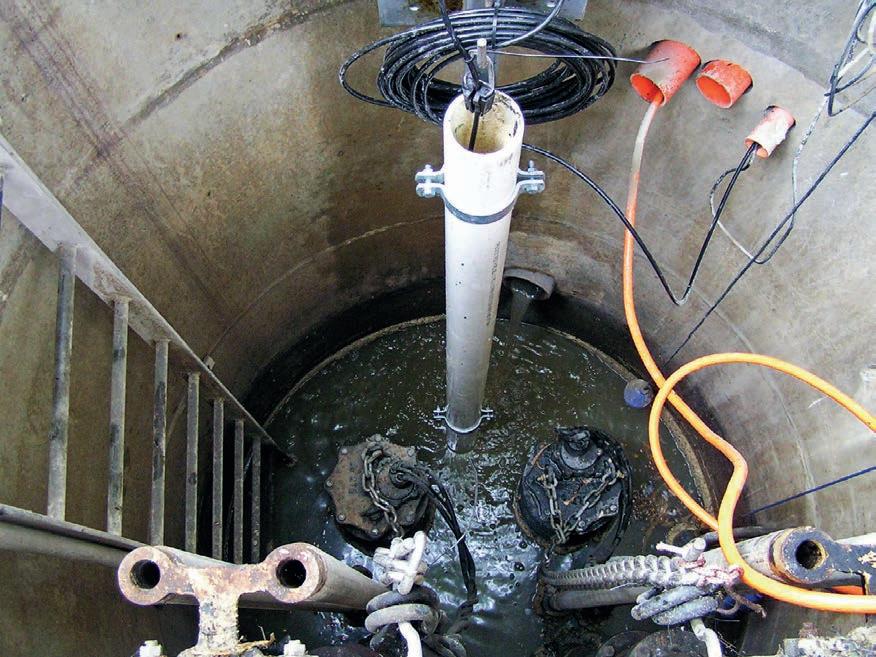

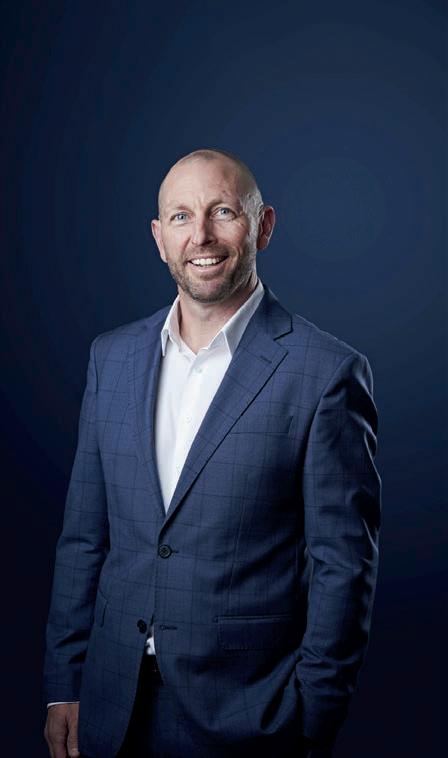
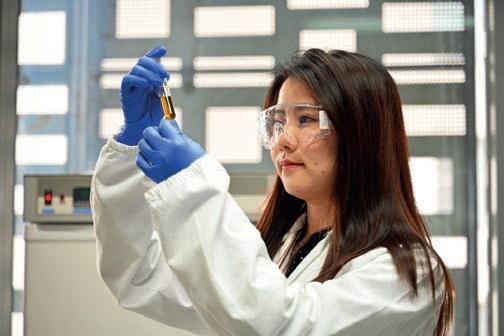
undertook a deliberative engagement process with 32 members of the community that represent a crosssection of customers and their views. Pages 24-26.
SUEZ has been delivering essential water and wastewater services that protect and improve peoples’ quality of life for more than 160 years. With local roots and proud history in Australia, the company has carved out its place as a leader in water infrastructure. It is creating cycles for life for its people, customers, and communities. Pages 28-30.
Maxibor has taken steps to overcome the environmental challenges facing society today. It aims to be a leader in the HDD industry and be part of the global impetus to achieve better environmental outcomes. Pages 32-33.











Taggle Systems has seen the largest flock of its Cockatoo telemetry devices installed in Leeton Shire Council. They can monitor water pressure, lift station levels, river height and rainfall. Leeton Shire Council wanted to monitor water pressure in its reticulation network and issue early warning alerts in response to rising levels in lift stations. It also pairs rain gauges with ultrasonic levels sensors to provide an additional early warning for rising water levels during heavy rainfall. Pages 38-39.
prepare for the future. The feedback from water managers around recent flood events has been characterised by shock and awe. There is no single solution for issues resulting from
spill containment. It is a reusable, magnetically fastened polymer patch. It provides a cost-effective and instant repair method for steel equipment. Pages 50-51.
VicWater has always been committed to providing members with opportunities to come together for thought leadership, professional development, and networking events. With that in mind, it held an Audit and Risk Symposium in early September to cover governance, risk, and assurance practices. Pages 52-53.
ifm efector understands the challenges of having pumps and sensors spread over a great distance. That is when troubleshooting can require long trips to disparate places. What if data from those remote critical assets could be collected and monitored before setting out? Pages 40-41.
Interflow Australia is conscious of the need to understand how floods impact assets and their management. There is no such thing as a one-size-fits-all solution to the floods experienced yet again in Australia. But a common approach can help mitigate risk and
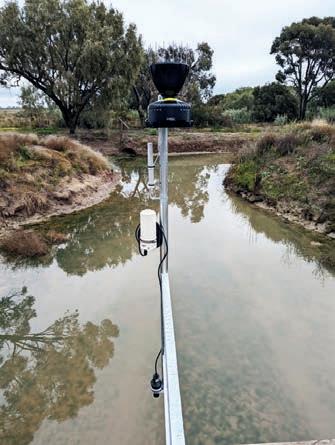
The Plastic Industry Pipe Association of Australia (PIPA) is the peak industry body representing manufacturers and suppliers of plastics pipe and fittings, plastics resin suppliers, plastic fabricators, pipeline installers, rubber seal ring manufacturers, and training and certification bodies. Pages 44-45.
Chesterton provides a deeper understanding of common corrosion patterns. Operators of wastewater systems can choose the right surface coating to extend component life. When components of wastewater systems corrode prematurely, the consequences can be costly. Pages 46-47.
Iplex has commenced the construction of Stage 2 of the Haughton Pipeline Duplication — one of Queensland’s most significant water projects. It will provide water security to Townsville and its surroundings for the next 50 years. Pages 48-49.
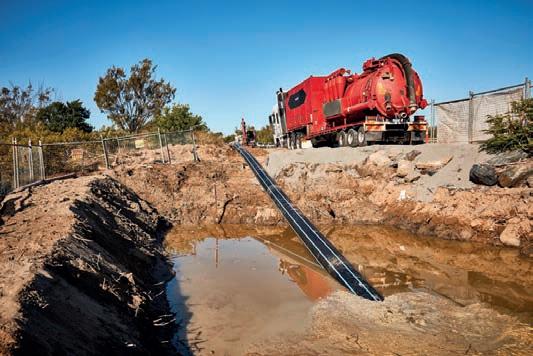
Kinder Australia has the K-Magnaplug, a highly visible product optimal for emergency responses and
Engineers Australia is the peak body for the engineering profession in Australia. They were founded in 1919 and have about 115,000 individual members. We spoke to the chair of the National Committee of Women in Engineering (NCWIE), Zhenya Pavlinova, about the creativity of engineers, education and mentoring.. Pages 54-55.
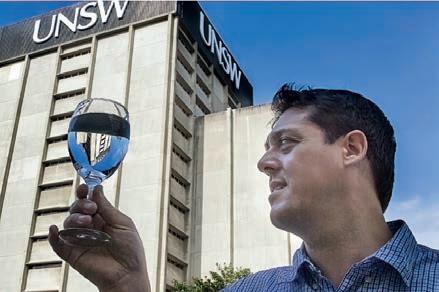
Stuart Khan has explained that the new Australian government needs to focus on six specific areas to fix Australia’s big water problem. According to Khan, Water Minister Tanya Plibersek has an enormous task in front of her that is vital for securing Australia’s future. Pages 56-57.
If people understand their water use and volumes, they can change their behaviour accordingly.
“Taggle Systems PIPA PIPA
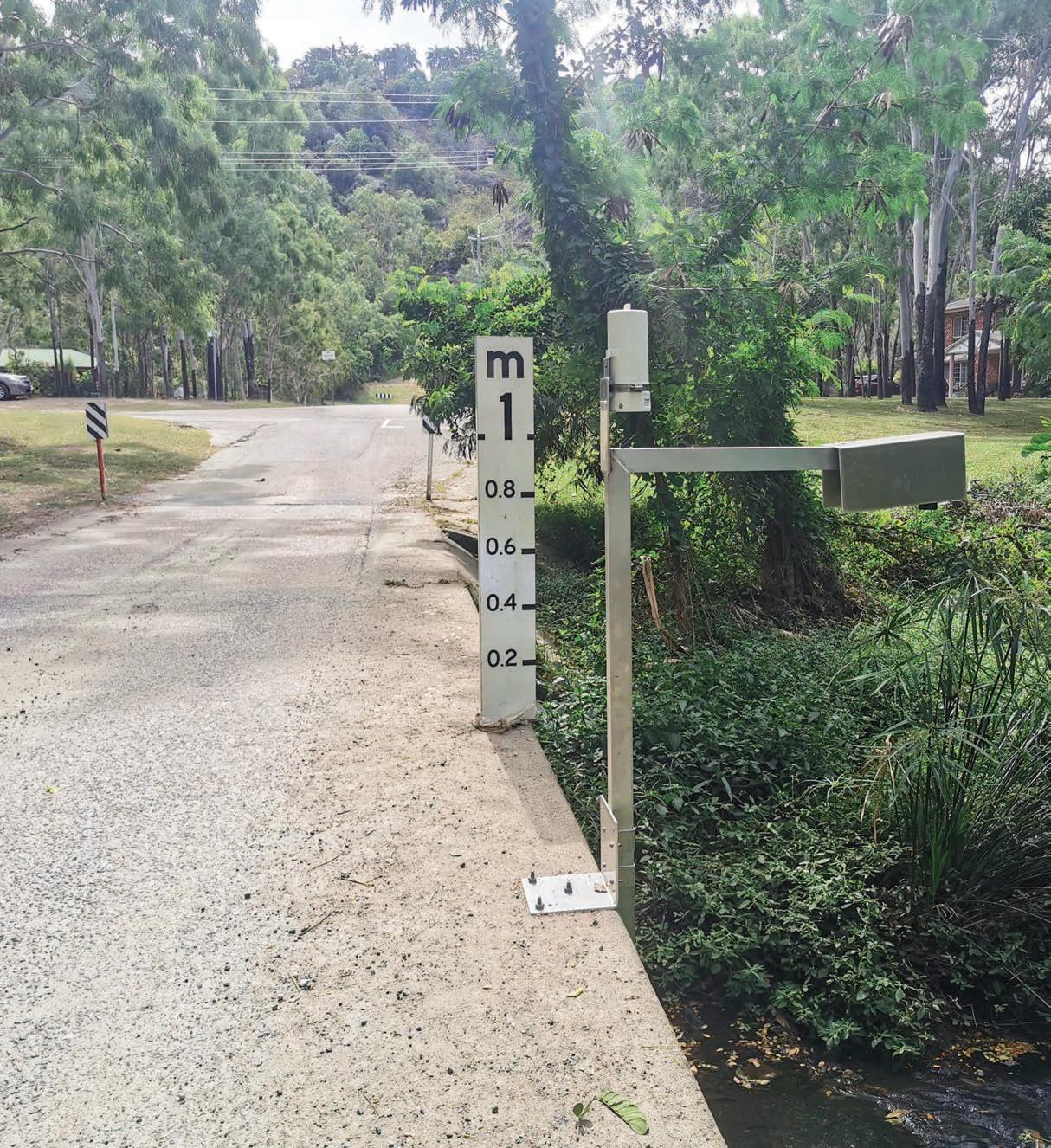
Your infrastructure partner for delivering customised water solutions for open-trench and trenchless pipeline projects.
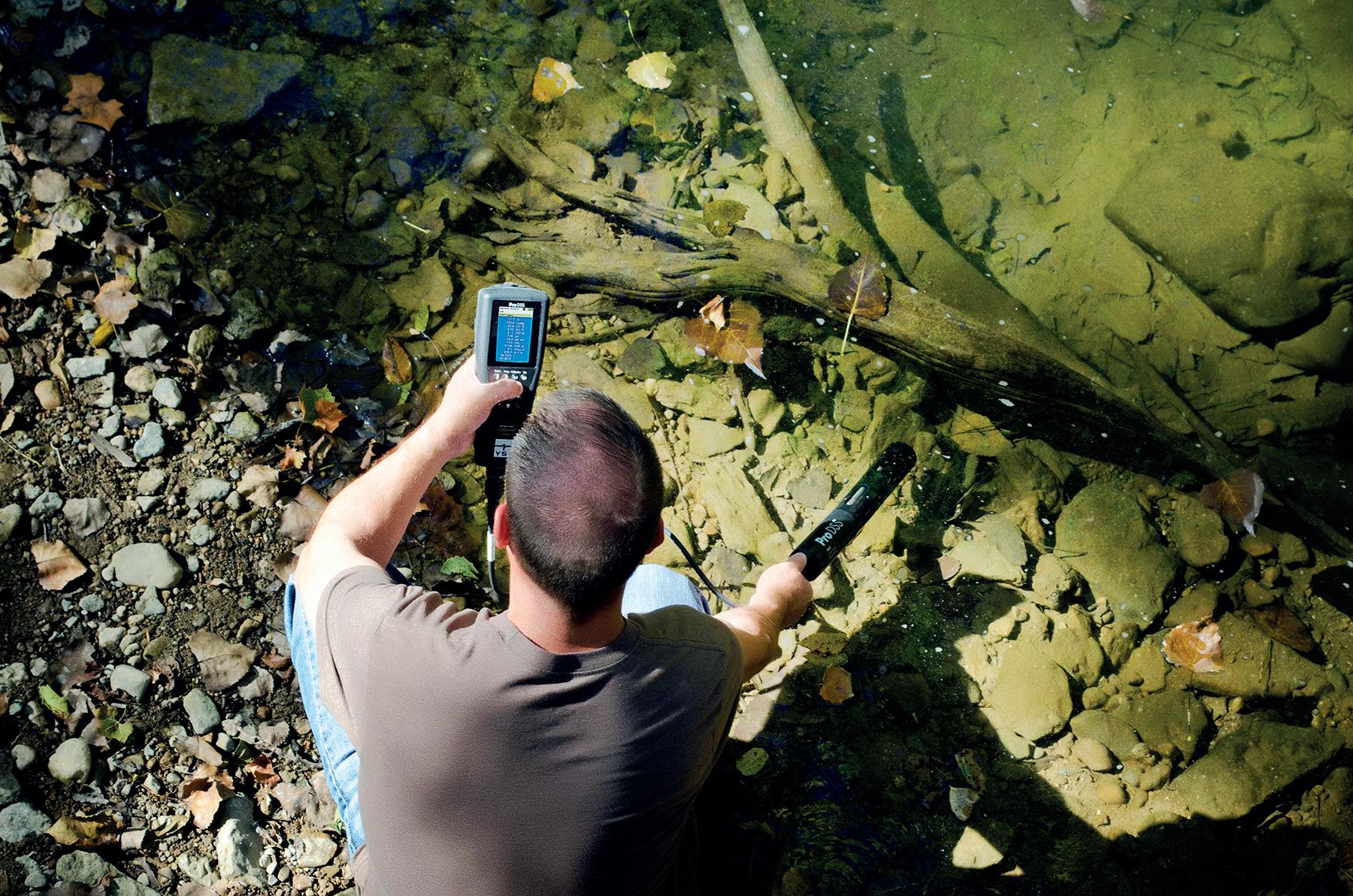
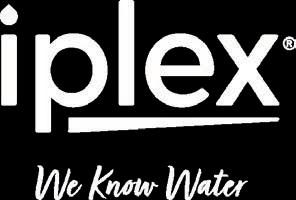
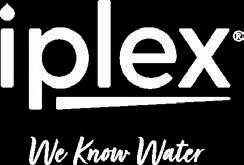
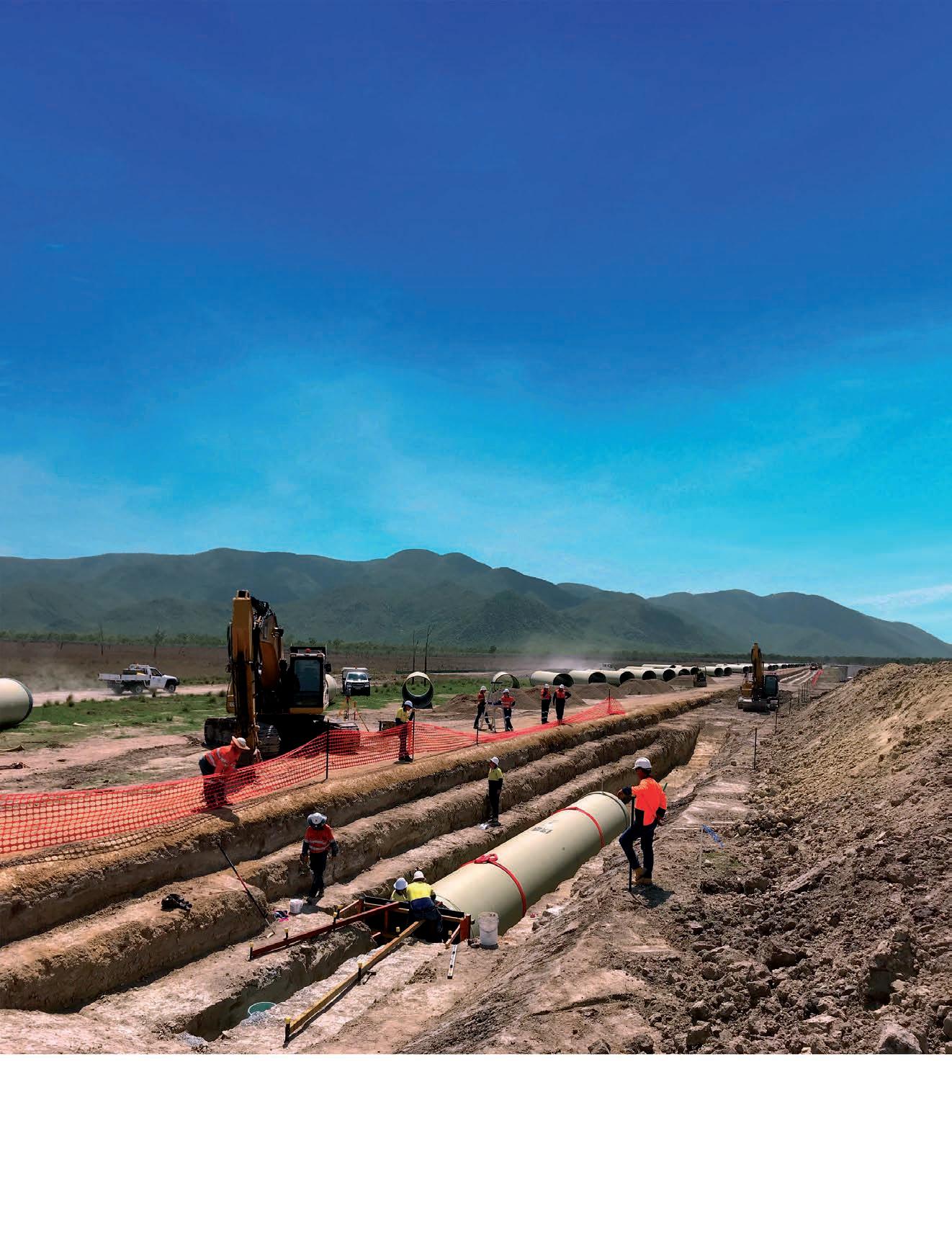
How technology supports groundwater management is part of Xylem’s thinking as a responsible corporate citizen. Inside Water looks at what it has to offer.

When Xylem goes out and works with a partner, it aims to be a leader in high-quality instruments for the water resources market. Xylem is a leading provider of premium field, portable, online and laboratory analytical instrumentation for water and wastewater, ocean/coastal, food and beverage, environmental, chemical and pharmaceutical industries. With its constant stream of innovative products, it connects with its Australasian customers and wants to ensure that high-quality data is collected reliability.
BMT is a maritime-orientated, highend design house and technical consulting firm driven by a passion for solving complex, real-world problems. It delivers design, engineering, and consulting solutions in a world of ever-increasing change: growing compliance, new global
competitors, the pressure to do more with less, ever-faster innovation cycles and less time to exploit market positions or new technologies. It supports customers at every stage of the project life cycle. BMT’s customers worldwide seek cost-effective solutions to business problems requiring technical excellence, independent thinking, and innovation.
With approximately 1,300 professionals in 27 offices in the Americas, Asia, Australia, and Europe, it draws upon a range of experience and expertise to provide high-quality, high-value products and services.
YSI ProDSS preferred technology
When BMT undertakes their sampling programs, it predominantly use the YSI ProDSS, a product manufactured by Xylem.
The YSI ProDSS (digital sampling system) is a portable water-quality

The YSI ProDss can be used for many different types of water.
multiparameter instrument for measuring several critical parameters. Users can measure dissolved oxygen (optical), total algae, turbidity, pH, ORP, conductivity, specific conductance, salinity, TDS, resistivity, TSS, ammonium, ammonia, chloride, nitrate, depth (optional), temperature and GPS coordinates.
It is designed for surface water, groundwater, coastal/estuarine, aquaculture, and wastewater. The rugged ProDSS allows for measuring water quality parameters with digital sensors. The water quality meter uses intelligent sensor technology to enable sensors to be automatically recognised by the handheld device while retaining calibration data.
Brad Grant is a Principal Environmental Scientist at BMT and has been there for nearly 14 years. He explained the importance of proper equipment and how the right gear is critical for groundwater management.
“At BMT, we need reliable equipment, especially when we undertake sampling programs in remote locations such as Papua New Guinea,” said Grant. “A lot of
time cost is involved in mobilising to remote sampling locations, so we need to know the sampling equipment is rugged and reliable, which is why we use the YSI ProDSS.”
The YSI ProDSS features an easyto-read backlit colour display, large memory capacity, simple calibration procedures, a rechargeable battery, and a robust data management program (KorDSS). All these features
combine to make BMT’s sampling experience more convenient.
The optional GPS and depth feature, along with a range of cables and sensors, allows for the complete customisation of the ProDSS. Military spec connectors, IP-67 waterproof rating, rubber overmoulded case and one-metre drop tests ensure durability to provide years of sampling even in harsh field conditions.
BMT measures several physical and
chemical parameters of the water it is testing at different levels. It often seeks data such as pH, electrical conductivity, salinity, turbidity, temperature, and dissolved oxygen.
Given the heavy workload of BMT, the company leans heavily on its instrumentation. The reliability of the YSI ProDSS means that many clients and authorities can rely on the data provided by BMT. Ultimately, instruments need to be accurate, dependable, and consistent.
Instruments must be hard-wearing to handle the demands of sampling in the field. Water-quality devices tend to be expensive, so rugged instruments that last longer are prized over fragile ones.
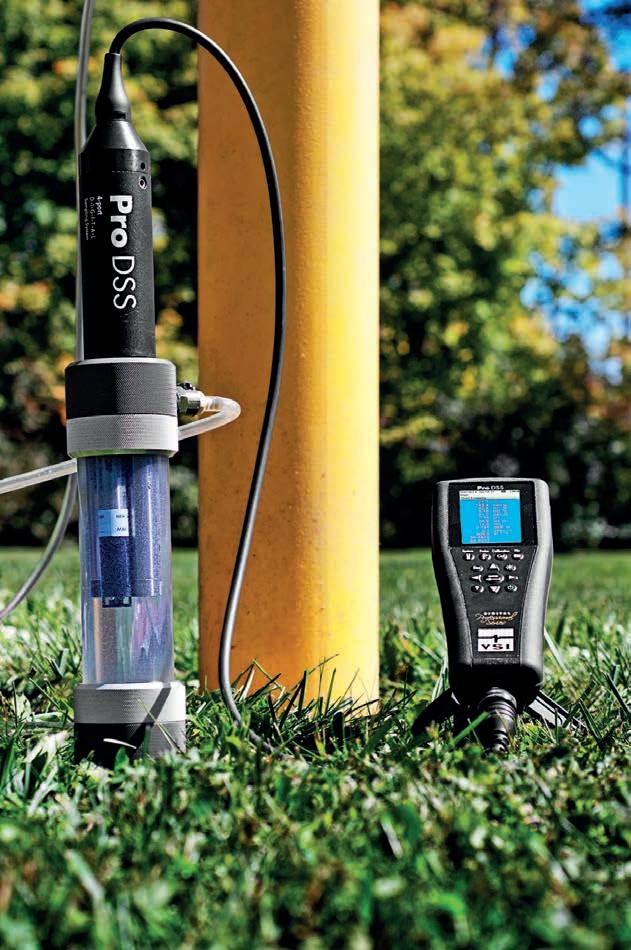
Grant said BMT sampling equipment can be expensive to purchase, but because the equipment is so rugged, it typically provides many years of trouble-free use. “Over the long term, it is more economical to use YSI equipment over cheaper, less rugged equipment that needs to be replaced more frequently.”
Following BMT’s role in assisting Stockland in environmental assessments and obtaining federal approval for the project, BMT was responsible for preparing and implementing the Water Quality Management Plan for Stockland’s Aura development.
The YSI ProDSS is a rugged and compact tool.
Aura is a master-planned, mixeduse community of more than 20,000 homes on the Sunshine Coast of Queensland, extending more than approximately 2,400 hectares. Located upstream of the internationally protected Pumicestone Passage, a holistic approach to water management is an essential element of the masterplanned community to ensure
that these environments are not negatively impacted.
BMT’s role at the Aura site, along with flood modelling and stormwater assessments, is the implementation of the Water Quality Management Plan, which includes monthly surface water and groundwater monitoring. BMT has been undertaking these monitoring activities on behalf of Stockland since 2008.
“At the Aura development, we regularly use the YSI ProDSS for monthly surface water readings and groundwater sampling,” he said. “The benefits of the ProDSS are that it’s simple to use, easy to calibrate, and the sensor readings are typically very reliable. Furthermore, the GPS comes in handy when a sample is logged to an incorrect site code, with the correct site code able to be identified using the GPS coordinates.”
The BMT team has found that the ProDSS saves time and money while undertaking sampling in the field. It also found that simple calibration, colour display, and long battery life provide benefits. GPS coordinates are logged with every reading. It automatically ties every sample to a specific location, ensuring that data can indicate trends across multiple sites.
BMT has a lot of experience when it comes to water quality field measurement instruments. The YSI ProDSS is the company’s tool of choice for measuring any parameter it wants.
“The YSI ProDSS is our go-to equipment of choice when taking spot measurements in the field,” said Grant.
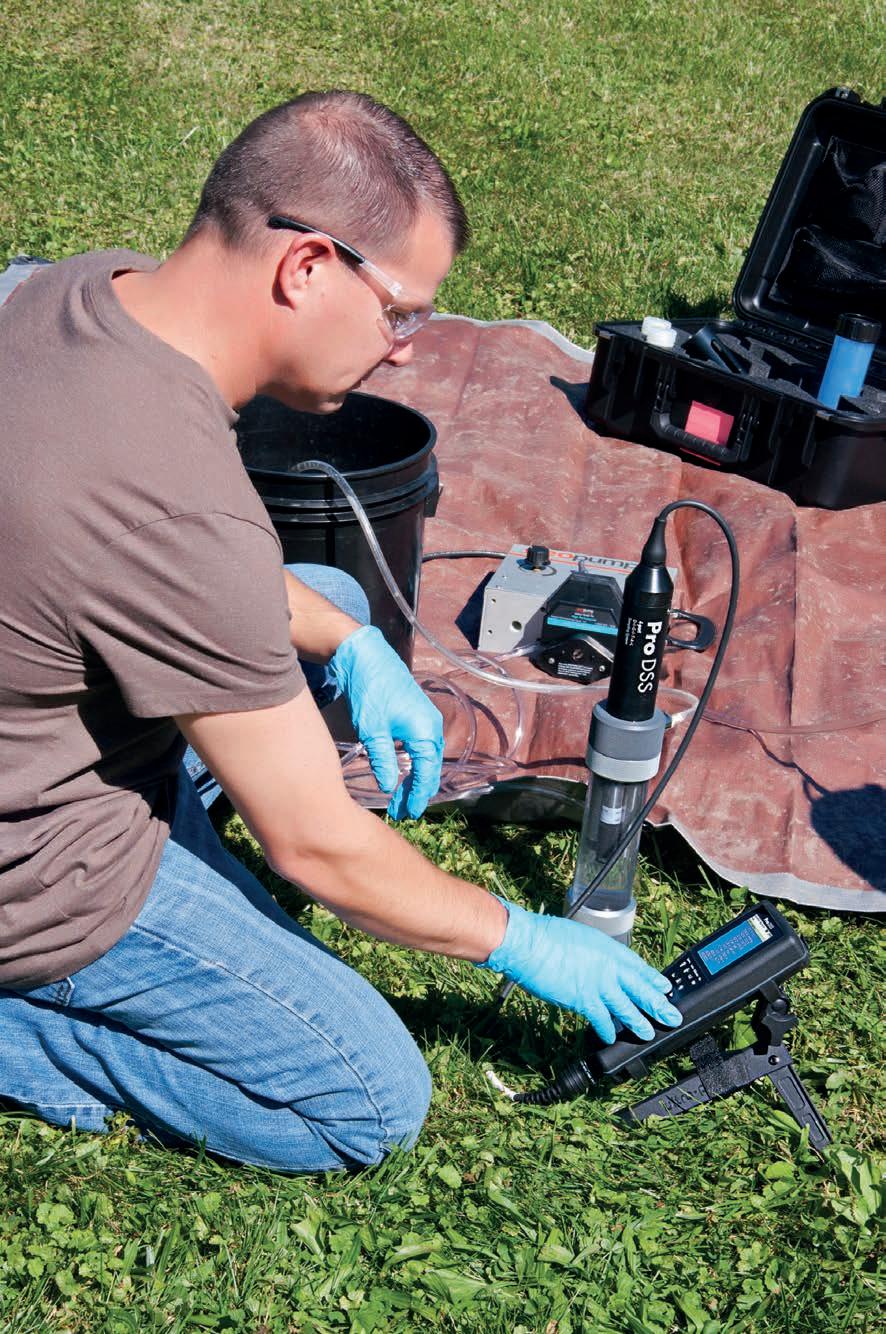
There are many projects where groundwater needs to be monitored, along with surface water. Such
road tunnels, where the groundwater needs to be measured inside the tunnel, and the water outside the tunnel needs to remain high quality.
An example of this is the Tyne Tunnel in North East England. Ten years ago, a second tunnel was built to account for the increased road traffic in the region. The original tunnel was designed to handle a daily traffic flow of 24,000 vehicles a day but carried 38,000 per day.
With that in mind, the project managers purchased five buoymounted, real-time automatic water quality monitors (AWQMs). Xylem installed the systems to ensure that
screen of the YSI ProDSS ensures that all data can be easily understood.
the water quality in the River Tyne in Newcastle.
Xylem was contracted to provide continuous monitoring data from five locations in the river. It did this by setting up a cloud web viewing access to the key stakeholders to which the data was transmitted in real-time. The AWQMs were installed around 12 months before the commencement of dredging operations so that ‘normal’ water quality conditions could be established. The standards were based on differences between water quality measurements upstream and downstream of the dredging
operations. This allowed the impact of the dredging operation to be distinguished from background variations.
All
Each YSI buoy is fitted with a YSI EXO multiparameter water quality sensor designed to operate in unattended and challenging environments. These systems continuously measure dissolved oxygen, turbidity, and temperature in addition to current speed and direction. The turbidity measurement is critical because it is a surrogate for suspended sediments and contaminants.
The AWQMS raised alarms on a few occasions. These alarms arose primarily because of high turbidity in the overflow from the dock. When the alarms sounded, an email was automatically generated and sent to a mobile phone on the dredger. Dredging would stop until water quality had returned to acceptable levels.
Xylem was delighted that the data contributed to the project’s success. Monitoring water quality in a tidal estuary in various conditions was challenging. The unique anti-fouling technology of the YSI EXO was a huge advantage in extending the deployment time and reducing maintenance costs in these aggressive conditions.
Xylem has completed several projects in which the company has been contracted to supply monitoring data. Darren Hanson
from Xylem said, “This is a growing trend because we have invested in the resources necessary to fulfil contracts of this nature effectively and because recent advances in communications and internet technology have enabled us to transfer live data to customers’ desktops with far greater speed than has ever been possible in the past.”
Xylem has worked to ensure that its solutions come together to integrate smart and connected technologies. It has hundreds of years of accumulated experience in problem-solving through its staff and seeks to empower their clients to deliver transformative outcomes to its end users.
Part of building these data sets


Pairing data sets with a specific location ensures that trends can be detected early.
together is using the right sensors in the right place. With the Tyne Tunnel Project, the YSI EXO2 and EXO3 multiparameter water quality sensors were perfect companions to the smart buoys. The EXO sensors provide an array of data on water quality while remaining properly calibrated throughout their time in the water. They are designed for long-term use and can be integrated into any system.
The staff at Xylem understand the importance of monitoring groundwater and surface water. They have combined their experience to provide a continuous and comprehensive water quantity and quality record. Their instruments generate reliable data in real time so you can work efficiently and reduce costs. Xylem understands the challenges of working in natural environments and builds high-quality devices to handle the most challenging situations.
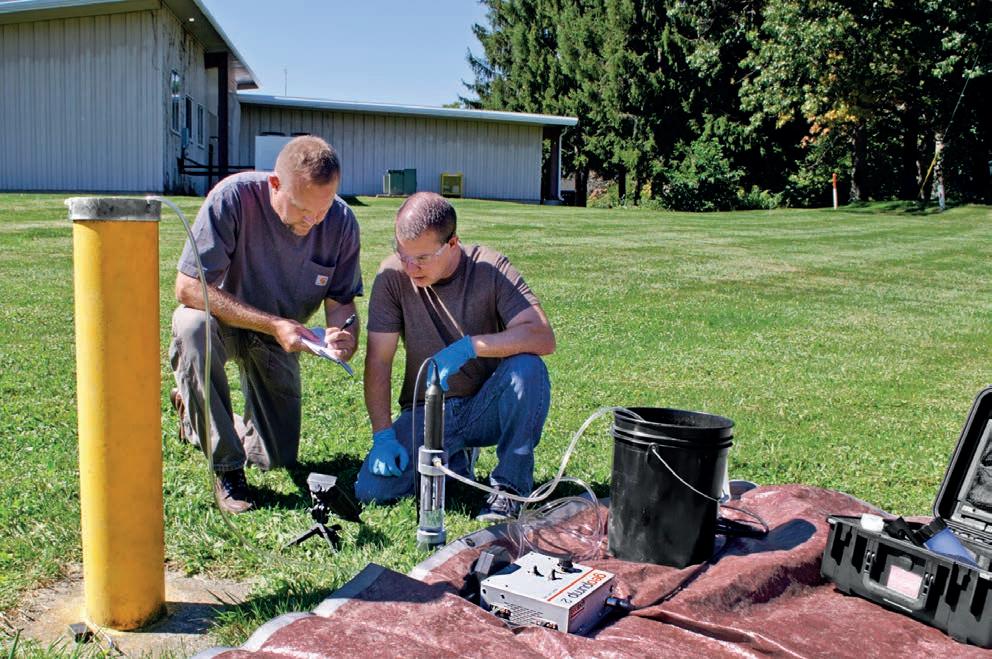
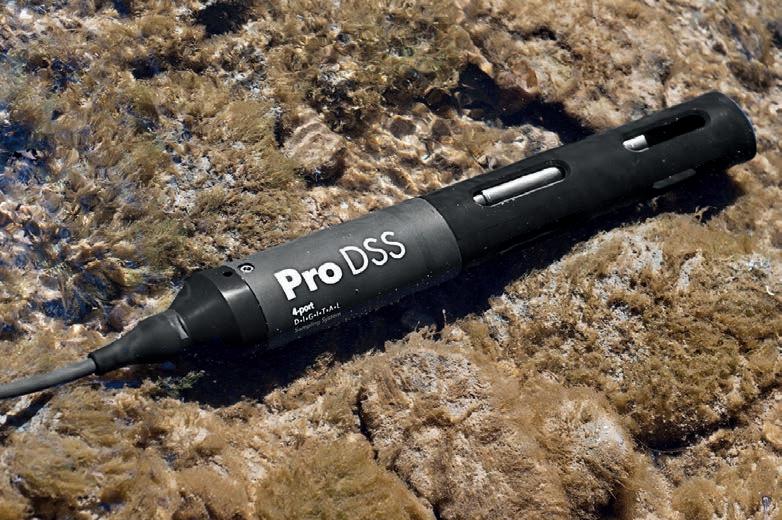
The YSI ProDSS has a low profile but handles any environment with ease.
To find out more, go to www.xylem.com/en-au/ and www.ysi.com/prodss
While Australia is blessed with an abundance of natural resources, water is not among them. Which is why it is crucial for Australia’s water network to explore more sophisticated and effective methods of treating water so that it is safe to drink.

























































































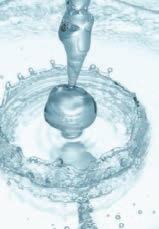


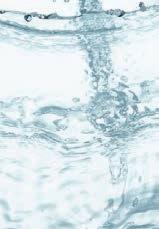
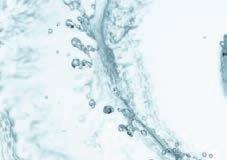


This is one of the core goals of ifm, who are working with Australian wastewater treatment companies to streamline their operations and make them more efficient through the integration of digital sensor technology.
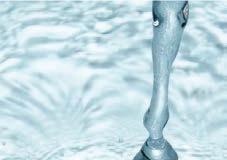

This white paper discusses the challenges around water treatment and how ifm is working with industry to address these. It also highlights the partnership between ifm and Australian wastewater treatment specialist, Aerofloat, and how ifm’s sensors and easy-to-use IO-Link connectivity solution has saved time and costs for Aerofloat’s customers.
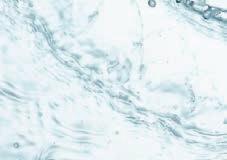

Getting rid of forever chemicals like PFAS out of Australian waterways is an ongoing research question. Cheng Zhang, a researcher at the University of Queensland, has created a reusable substance that could help remove them.
Per- and polyfluoroalkyl substances (PFAS) have become a problem in water across the world. Numerous research teams are taking different approaches to remove it from the water. Some PFAS are effective at resisting heat, stains, grease, and water, making them useful chemicals for various applications. These applications include stain and water protection, photographic materials, cosmetics, and sunscreen. Because they are heat resistant and film-forming in water, some PFAS have also been used as effective ingredients in fire-fighting foams.
In Australia, the historical use of PFAS in fire-fighting foams has resulted in increased levels being detected at airports, defence bases, and other places where firefighting training has been conducted. Increased environmental levels of PFAS have also been found in some industrial areas, effluent outfalls, and landfill sites.
The greatest concern of PFAS is highly mobile in water. It does not fully break down naturally in the environment and is toxic to many animals. While understanding the human health effects of long-term PFAS exposure is still developing, there is global concern about these chemicals in the environment.
Dr Cheng Zhang from the University of Queensland (UQ) is one of those researchers investigating a new way to remove PFAS from water. His paper on the topic was published in October in the high-profile
Angewandte Chemie International Edition. The paper was titled “Efficient Removal of Perfluorinated Chemicals from Contaminated Water Sources Using Magnetic Fluorinated Polymer Sorbents.”
Originally from Shandong in China, he has lived in Australia for more than ten years. He has enjoyed the research environment at UQ, as well as the living environment in Australia.
As a National Health and Medical Research Council (NHMRC) CJ Martin Research Fellow (2019-2022) and the recipient of a Discovery Early Career Researcher Award (20232025), Zhang is working hard to make a difference.
“I am a polymer chemist, by my research. I only started studying
water management in the last two or three years. However, it is how I started focusing on PFAS,” said Zhang. “Having said that, I have been studying this style of fluoropolymers for over ten years.”
Zhang started his academic life in materials science. His studies in this field got him into studying real-world problems with realworld solutions. The opportunity to remove contaminants from water, such as PFAS, attracted him to move sideways from materials science to polymer chemistry.
What his research has found Zhang and his team focused on capturing PFAS efficiently and selectively. Each PFAS molecule has a hydrophilic “head” and a long, hydrophobic “tail” that contains carbon-fluorine bonds. The carbonfluorine bond is one of the strongest single bonds in nature. That bond gives the molecules persistence in the environment and their “forever” moniker. Legacy PFOA and
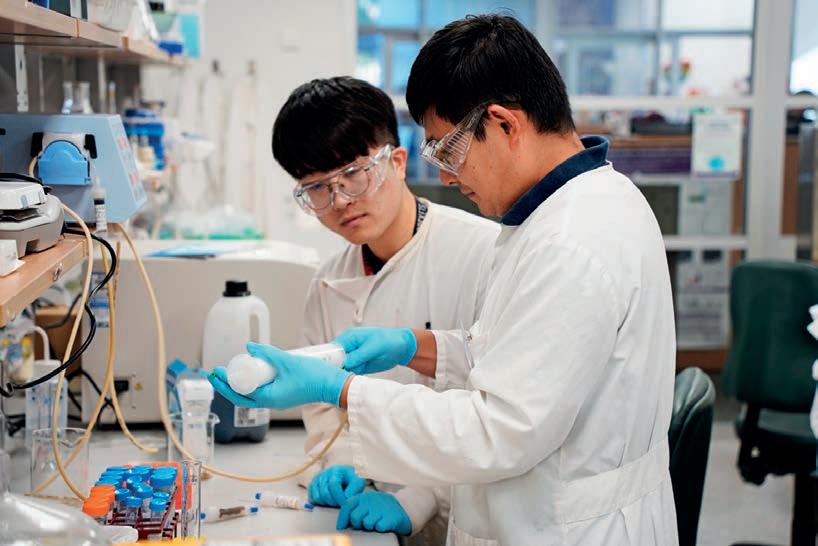
PFOS, as well as emerging GenX, which are the focus of most water treatment efforts, can persist in the environment and may pose harm.
On that basis, Zhang started investigating the capture of PFAS using a unique polymer sorbent. His research found that their nowpatented polymer could grab hold of PFAS and be re-used multiple times. It is also efficient and selective.
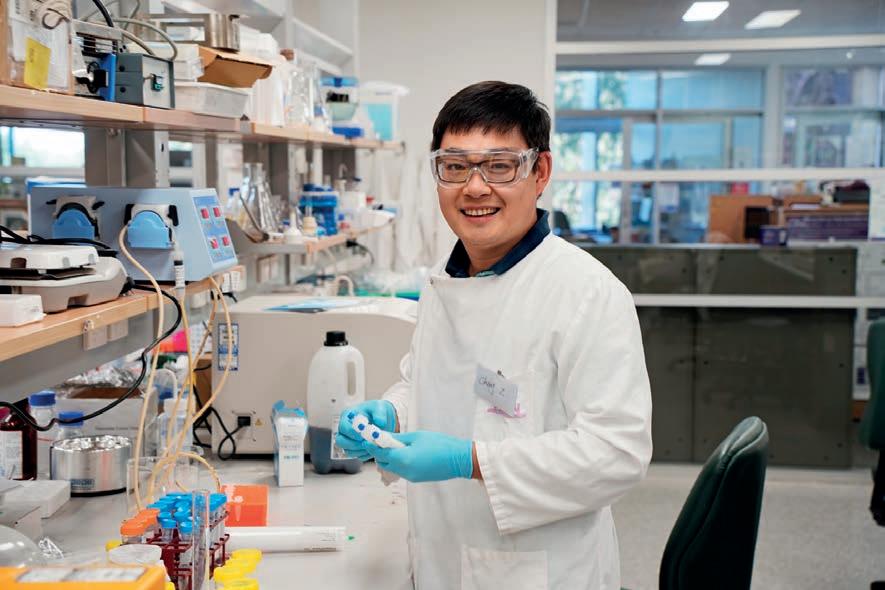

“The efficient treatment of PFAScontaminated water is becoming an essential consideration for establishing water sustainability in Australia,” Zhang said. “Our product addresses the issue of extensive PFAS pollution in Australia and will deliver
His masters and PhD students are working together to advance the technology. They believe in the importance of collaborating with industry partners.
“Industry partners have been very interested in the technology. Our
a low cost, especially considering it can be reused multiple times.
Compared to any other substance, it is over ten times more efficient than activated carbon,” said Zhang.
“That’s a massive advantage of our technology. It is also an area of research that we are targeting – increasing capacity, improving selectivity, and reducing cost.”
One industry partner that has been
water and environmental industries and local communities.”heavily involved in the research is the industrial corporation Chemours, a spin-off company from Dupont. As the producer of Teflon, Nafion membranes, Krytox lubricants, and Opteon refrigerants, they produce a significant amount of PFAS.
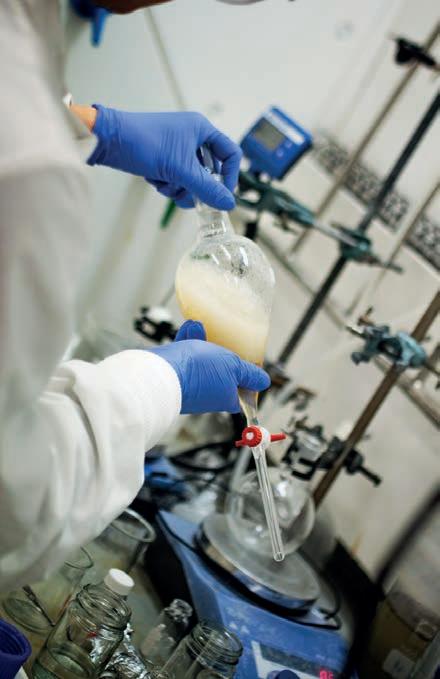
“One possibility is that they can develop a large-scale production facility, given their manufacturing lines in the United States. Chemours has supported us a lot over the last two to three years, and we have a good relationship with them. We have also secured funding from the US Department of Defence and The University of Queensland’s Knowledge Exchange and Translation (Kx&T) ECR Funding. Hopefully, we will be able to use their production lines,” said Zhang. “Once we optimise the materials production procedures, I think they will be happy to move forward on that, as we should be able to generate plenty of revenue.”
There have been several different techniques looking at methods of capturing PFAS. Activated carbon is the most commonly used technology and has been broadly used by our industry partner Chemours for PFAS removal. However, the carbon sorbent has low efficiency, is non-selective, and is non-reusable.
Zhang acknowledged this and other research occurring over the past couple of years. He pointed out that one of the biggest issues for most research teams in this field is that they must operate with concentrated levels of PFAS.
“In the real world, levels of PFAS concentration tend to be very low and even much lower than the nonfluorinated organic and inorganic species. The advantage of the polymer we have developed is that it can selectively and specifically
recognise and grab PFAS. It makes things a lot easier and more realistic. Because our technology focuses on low concentrations of PFAS, the polymer can grab onto more of it,” said Zhang.
He also acknowledged that different techniques could work together to maximise the removal of PFAS. The opportunity to solve a real problem inspires Zhang.
“I think that I am lucky to have identified this real problem and focused on the root cause of the contamination in the environment. Being able to work in related fields where I am creating new materials that solve real societal problems,” said Zhang.
Another area that Zhang is noted for is his experience in communicating his scientific achievements to a broad audience. As a young researcher that collaborates with industry, he has had to learn how to use non-technical language to explain his project.
“Taking part in Fresh Science was an excellent experience,” he said.
“At one point, I needed to explain my research in 100 words or less. That was a challenging experience but revising my language so that industry partners could understand was fantastic. The willingness to understand the different backgrounds of my audience helped enormously. All the training and competitions were great at helping me understand what I was saying and how to express my research to a broad audience.”
Moving from the focus of publishing papers to communicating with a wider audience is an important skill. Zhang acknowledged that he would continue to develop this skill as he grows as an individual and a researcher. He is also a material
Zhang’s focus on the root cause of contamination has been key to his progress.
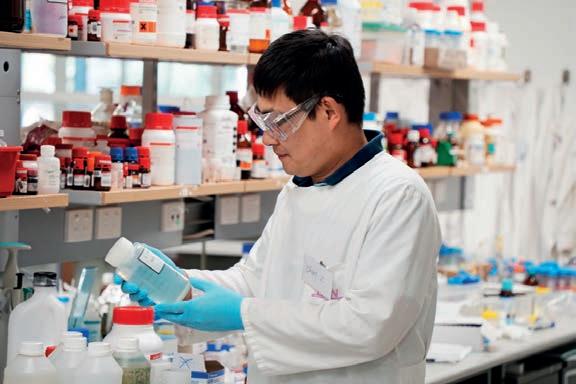
scientist working in energy storage and medical fields.
“I’m trying to find partners to collaborate with in those two fields.
Cheng Zhang’s reusable sorbent can be reused at least ten times.
Fortunately, I now have experience from my time studying PFAS. That has given me a good base of knowledge to explain my scientific research and how my research career can help industrial partners,” he said.
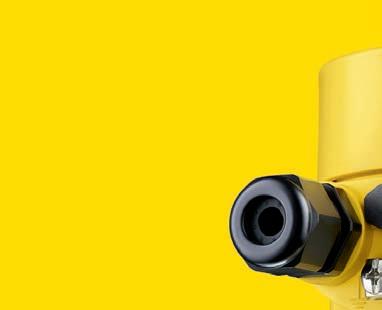
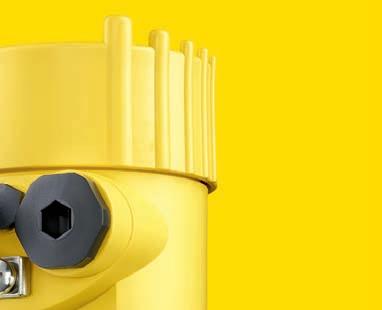

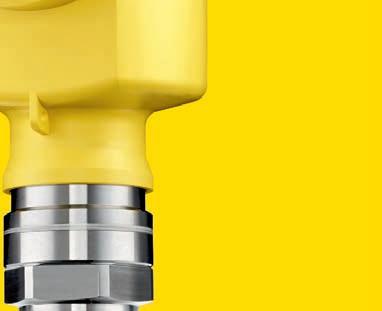



Huan Liu is a PhD student at the University of Technology Sydney (UTS). Her cutting-edge research uses a by-product from wastewater treatment for sludge disposal.
Treating wastewater in Australia produces 1.4 million tonnes of sludge, which must be treated and then disposed of. The process is responsible for 50 per cent of the total operating costs of wastewater treatment plants. PhD student Huan Liu has developed a new treatment technology that would reduce the amount of waste by 15-40% and recover energy from the sludge itself. Liu’s technology would result in an end-product that is a safer biosolid for fertiliser. Her technology relies on a by-product of wastewater treatment. The closed-loop methodology ensures that fewer resources are used in the process. But who is this woman that has made a ground-breaking difference in wastewater treatment?
Liu is originally from a small city near Xi’an in Shaanxi Province, China. She started her academic career at Northwest University in China. Liu then completed her master’s degree at Shaanxi Normal University. After finishing her master’s degree, Liu started working as an environmental engineer. Her primary focus was oil sludge and sewerage sludge within the solid waste treatment.
“This experience motivated me to go further within sludge. In my working experience, I realised that there are many gaps in research and applications. I wanted to find new technologies in sludge treatment,” said Liu.
When looking to do her PhD, Liu received two offers from different Australian universities. She wanted to study in a robust environmental engineering institution and felt Australia’s environment would be more conducive to her studies. Liu found her way to the Centre for Technology in Water and Wastewater at the University of Technology Sydney (UTS).
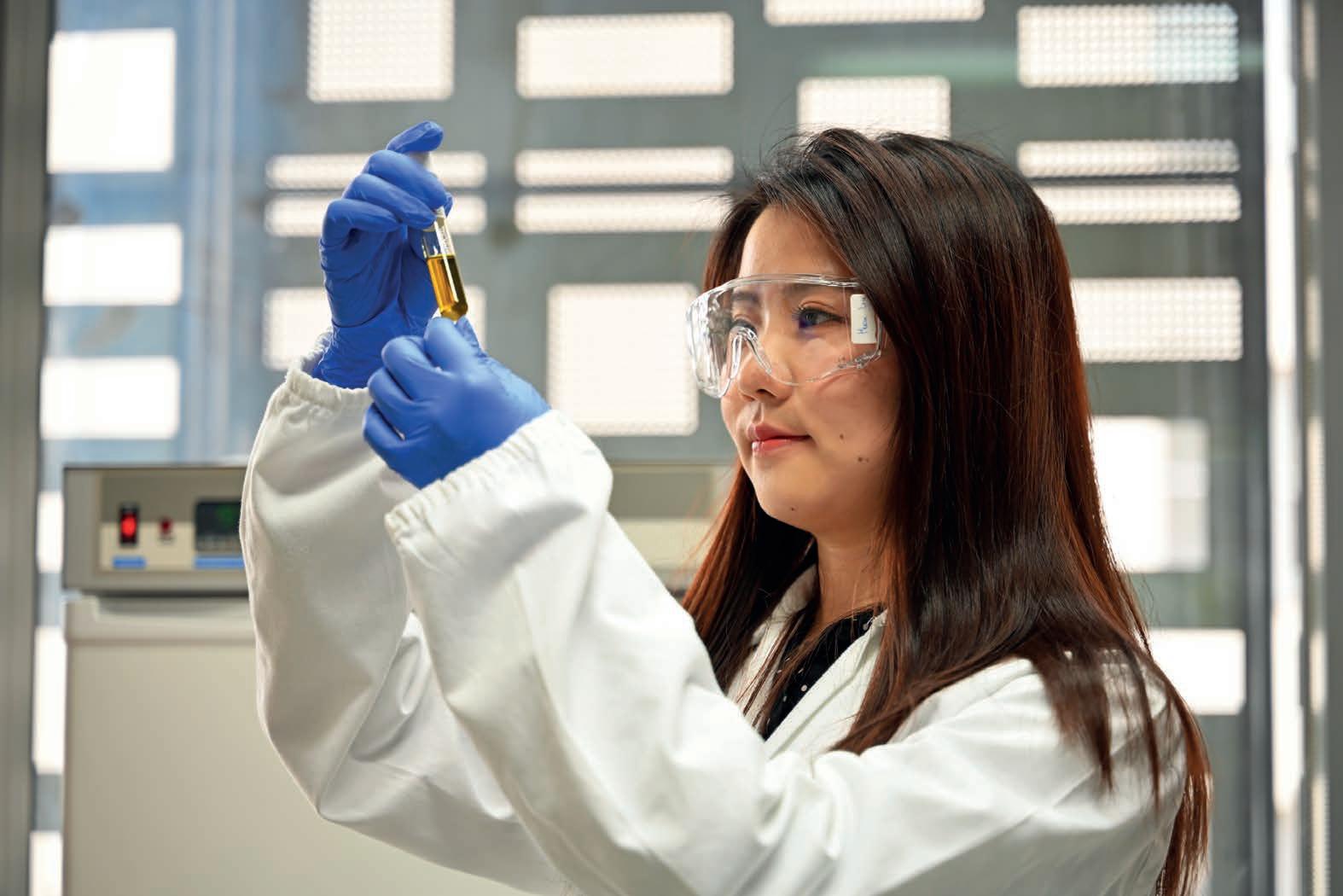
Liu is studying under Professor Qilin Wang, an Australian Research Council Future Fellow. She has found him to be an inspirational leader, with him being appointed as a Professor in Environmental Engineering only seven years after receiving his PhD.
“Professor Wang is my principal investigator. He’s very passionate about his work, supportive and responsible for his students,” said Liu. “I have learned a lot of professional knowledge from him about wastewater and sludge. His career has inspired me, particularly in promoting myself to academics
and industry. I’ve seen how he has received funding from different groups, so I want to model myself on him.”
New technology results from luck and collaboration
Liu has developed technology to improve antibiotic-resistant genes and pathogen removal, enhancing anaerobic sludge digestion and boosting the dewaterability of digested sludge.
“I was doing some lab work focusing on the wastewater treatment process. I found that one of the by-products was biocidal for bacteria. I thought this unique by-product could be used in sludge treatment to break down bacteria in sludge. When I tried the idea, it was successful, so the technology came out well,” said Liu.
The process is also much more efficient at removing pathogens. Liu showed a 60 per cent reduction in pathogens and a 20 to 70 per cent reduction in antibiotic-resistant genes compared to traditional procedures.

According to the New South Wales Environmental Protection Agency, the residue waste could achieve Grade A biosolids. That would reduce the health risks of using the treated sludge as fertiliser, creating an additional revenue stream for water authorities and local councils.
“Instead of being a contaminant for wastewater treatment plants, the waste by-product becomes a useful part of the process,” she said.
Industry partners key to progress Partnership and cooperation have been essential to Liu’s research. The water industry has been active in working with researchers across Australia. Liu thanked Water Research Australia Limited, South East Water and the Australia Research Council for supporting her research.
“Not only is the water industry
important for providing us with funding, but they also provide us with research materials,” she said. “We need sludge and wastewater samples to do our testing. It would not be possible without the support of our industrial partner. We cannot get these materials, and they can provide the samples regularly.”
Liu also appreciates the industry’s role in explaining what they are looking for in her research. She explained that they have been clear about their immediate needs, which has helped her broaden her mind. It has given her several practical areas to look at in her research.
She praised UTS for its focus on
the commercialisation of research outcomes. While Liu’s technology is still in its earliest stage, she is working on developing a patent for it. Ideally, her technology will be pushed to a commercial level in the future.
Huan Liu testing her technology that is designed to help dispose of sludge.
“UTS has provided me with an outstanding platform for research,” said Liu. “For example, we did an industry project involving removing antibiotic-resistant genes. A project like this can only be completed with the help of an institution like UTS and industry partners. The platforms that UTS provide have been fantastic for researchers such as myself to develop my skills.”
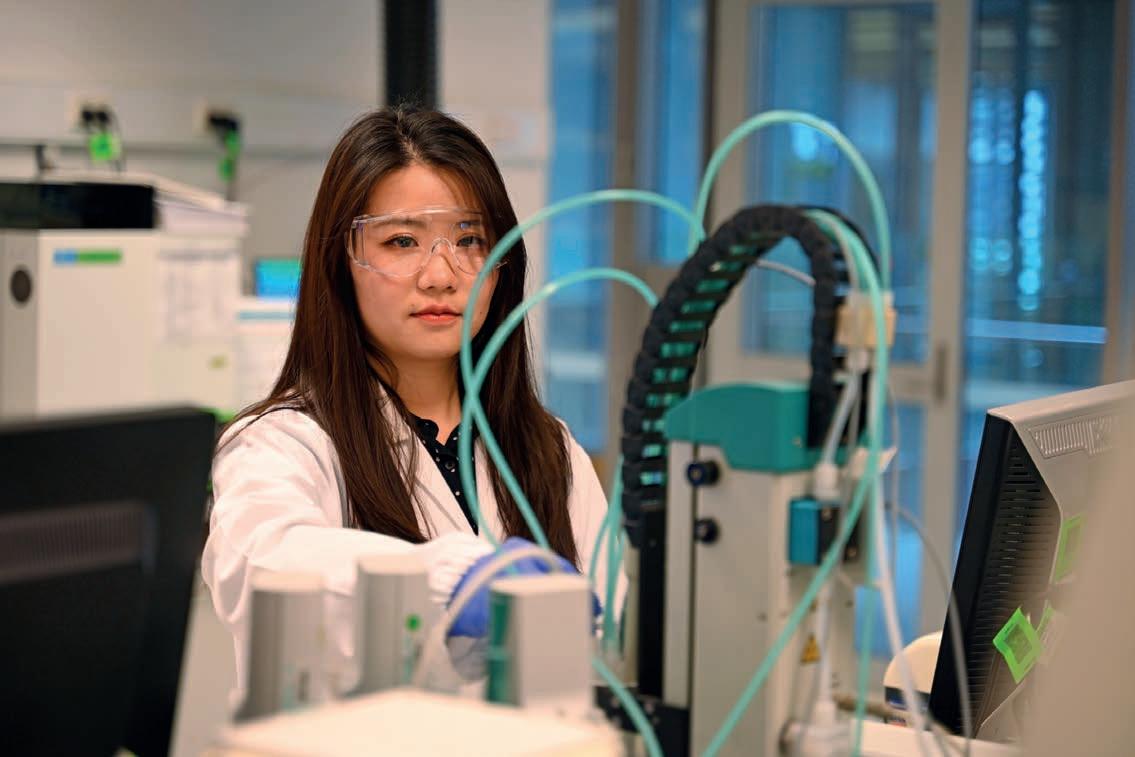
This experience motivated me to go further within sludge. In my working experience, I realised that there are many gaps in research and applications.
“ ”
In the eyes of Liu, there is enormous potential in developing technology for the water industry, particularly for wastewater treatment plants.
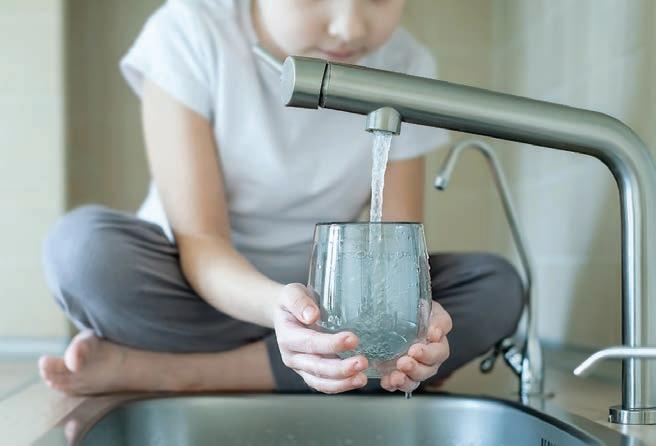
“I noted an Australian-first project that saw wastewater turned to energy, which will support the country’s energy demands,” she said. “I’m also really excited by the possibility that the technology I have developed could bolster the energy recovered from sludge, further supporting the energy grid. That’s a tangible benefit for the public.”
Liu spoke about the potential of biochar in Australia. She believes her focus on biochar provides more opportunities for Australia.
“I have only focused on the biochar produced by sewage sludge. The technology is not widely used in Australia, but in Japan, they rely on pyrolysis to produce biochar,” said Liu. “This is the way they treat the sewage sludge.”
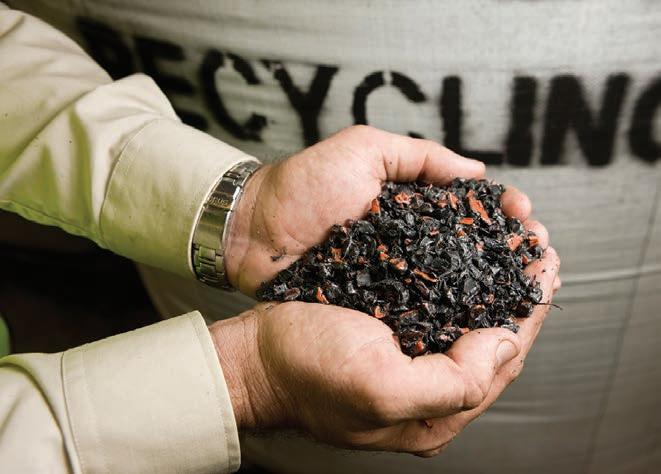
Pyrolysis is a technique where a material is heated above its
decomposition temperature. That temperature will see chemical bonds broken down in the molecules. These fragments can become smaller molecules or combine to produce residues of a larger molecular mass. Some small trials and demonstration plants exist in Australia, particularly in southwest Western Australia, Melbourne, and central Queensland.
“The biochar produced because of pyrolysis needs to be dried first, so the solids content needs to be as high as 90 per cent. This is different from hydrochar, which operates from a slurry,” said Liu. “Having said that, there is undoubtedly potential for hydrochar and biochar -. But the hydrochar and biochar could hardly work together. They use different raw materials and production processes while generating different char properties.”
Beyond the commercialisation of her technique, Liu has two potential avenues for expanding her research.

Huan Liu has found her experience in Australia to be positive and enriching.
“Firstly, I want to focus on the mechanism, performance and application of my technology,” said Liu. “I want to understand how it works from a biological and chemical point of view. Conducting more experiments to investigate the mechanisms will almost certainly provide a broader pathway towards commercialisation.”
Her second area of focus is to expand her research into the water treatment process. A new idea has been developed in her team to reduce sludge production in wastewater treatment instead of treating sludge after the fact. The preliminary results of her research in this area are positive, so Liu wants to conduct further experiments in this field.
“I believe there is the potential for more energy and cost savings by reducing sludge production in wastewater treatment,” said Liu. “We have two ways to reduce sludge production. One way is to produce light sludge, reducing the original volume of sludge. The other way is to improve the technology behind sludge reduction.”
Liu’s original research in Australia focused on reducing sludge after it has been through a wastewater treatment plant. She now wants to focus on reducing the amount of sludge that enters a wastewater treatment plant. In her eyes, it would reduce the energy requirements for the wastewater treatment plants, thereby saving them money.
Liu’s goal is to become an excellent researcher and engineer in the future who can advance the science and practice of urban water management.
Liu is coy about her future in the field.
“I have some new ideas, but it is too early to say what they are.”


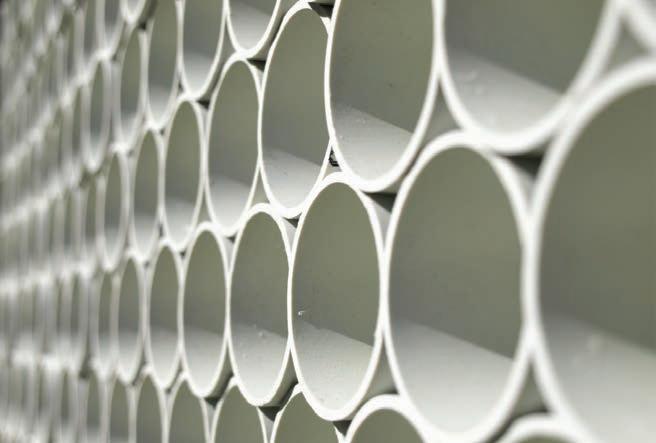
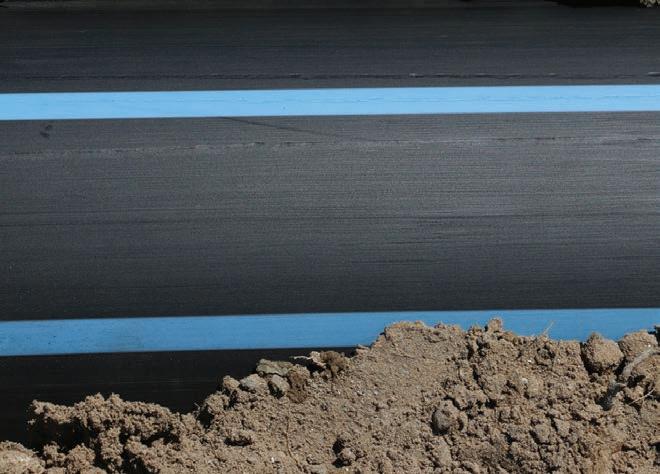
Coliban Water has taken a step change in its approach to customer engagement ahead of its 2023-28 Pricing Submission.
Inside Water spoke to Managing Director Damian Wells to find out more.
Damian Wells is the Managing Director of Coliban Water. Having grown up in the small town of Merbein in northern Victoria, he has made his home in Bendigo. He was always around water as a child. His father was an irrigator and grape grower, so Wells spent much of his formative years around the Murray River. He watched his father fix sprinklers, prepare the irrigation, and all water-related issues.
in water. I have worked in lots of different aspects of water. I started in water quality and environmental flows. Then I worked in catchment management and moved on to
operations management for the rural water business and as an environmental regulator at EPA Victoria. Ultimately working at Coliban Water as the Managing Director is probably my dream job,” said Wells.
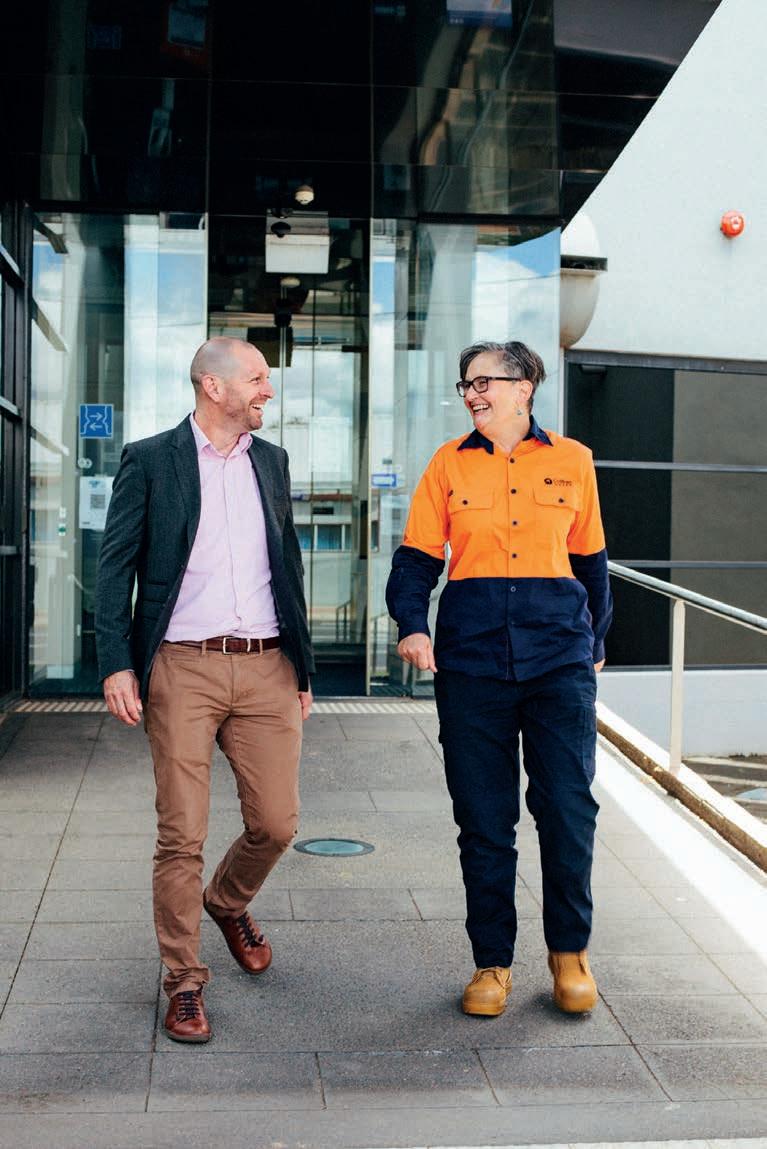
Water and the community
something for the community and supporting people.
“My parents were certainly a big role model in that regard, and my wife is one of the most generous, selfless people I have ever met. They have all had a big influence on me in this regard. I believe Coliban has had a long customer-oriented and focused culture,” said Wells.
Wells and Coliban Water want to build on the legacy of others when it comes to a customer-focused culture. With that in mind, Coliban Water has proposed doubling its financial investment in its hardship program from a current budget this financial year of $285,000 to $570,000 per year from 2023.
developing good
“Fairness has been a big part of our focus, and it came up a lot in our Pricing Submission works,” said Wells.
As part of its engagement with the community, Coliban Water took a step change in its approach. Like some other water corporations around Victoria, Coliban Water selected 32 people from across the region to participate in a Community Panel. The goal was to get a deeper understanding of what the customer base needed. This deliberative engagement process represented a cross-section of customers and their views. Every member contributed their time, experiences, and energy to the process. The Community Panel came together for five days over five months to consider Coliban Water’s services and pricing. They provided nine recommendations that the Board ultimately accepted.
“This sort of deliberative engagement process is an arm’s length community panel, in that it was independently recruited and facilitated at arms-length from the
Board and management,” said Wells. “We discussed the outcomes and recommendations with the Board. As Board Directors and Executives, we are often trained to try to control things, so it takes a lot of courage to embark on a deliberative engagement process.”
“The Community Panel did a huge amount of preparatory work. They spent the first couple of days listening and learning to grapple with what needs to happen for water services through the region for the next five years,” said Wells.
The Community Panel focused on the need for Coliban Water to invest in its asset base.
“Many of our assets are very old and desperately need renewal,” said Wells. “They are undersized relative to the population that they serve. We need to reform our capital program. We proposed increasing it from about $150 million over five years to $435 million. That’s a significant change, so the panel discussed this at length. They had to weigh up the question of intergenerational equity.”
Coliban Water learned that customers are okay with smooth and modest increases in prices over time, as opposed to dramatic spikes in prices. The panel recommended that Coliban fund most of its growth in capital expenditure through debt while also passing on a modest price increase.
The Community Panel also spoke a lot about fairness. There was, and still is, a strong view that while investments must be made, no one must be left behind.
“Supporting customers experiencing vulnerability is a key part of what Coliban Water stands for. This increased investment will give us more opportunities to assist more customers across our region whilst
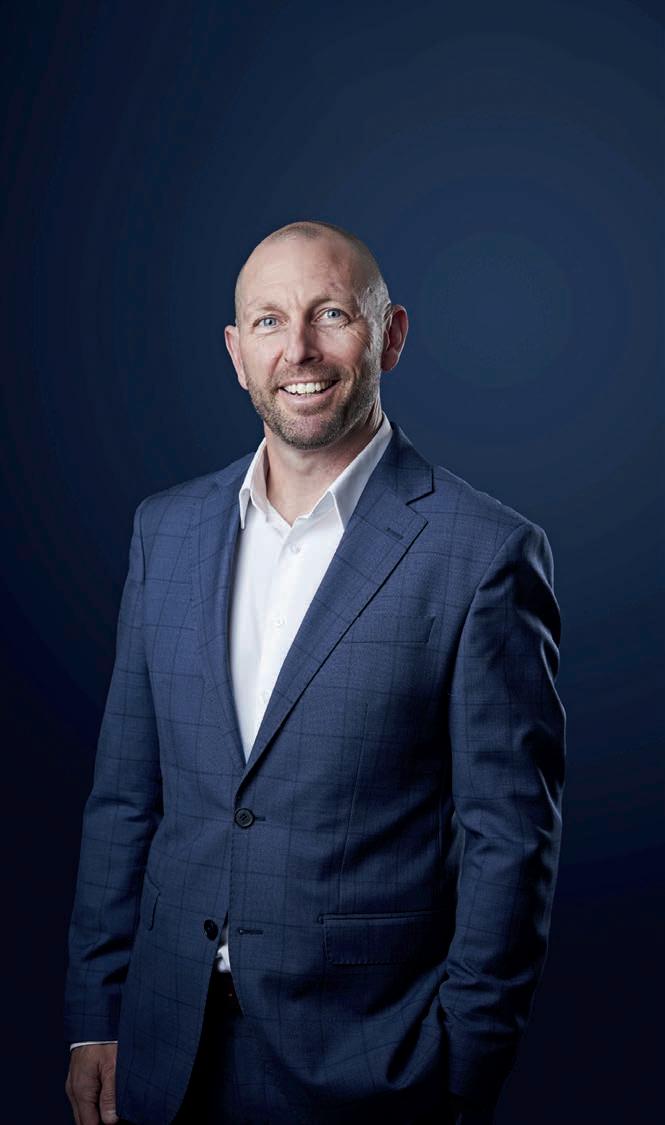
having the quality assets to underpin our services.”
One thing to note is that the engagement and learning that Coliban Water has done for the 2023-28 Pricing Submission is not limited to the Community Panel. Wells spoke about engaging with welfare providers, human services agencies, Traditional Owners, and regional local governments.
“We got letters of support from the local branch of Salvation Army and the Dja Dja Wurrung Traditional Owner organisation,” he said. “We also got letters of support from local governments in our region.”
He also noted that the region’s water and climate literacy levels are strong. When web portals, pop-up stalls and surveys were offered, 86 per cent of respondents said Coliban Water had struck the right balance in its proposal. Wells admitted that he was pleasantly surprised at the high number.
“I think people get it, in that climate change is significant. They know the population is growing because they see all the new developments. They see the new houses and ask if there is enough water. Do you have the right assets to serve this? To have such positive feedback from the community is encouraging,” said Wells.
Coliban Water provides water and wastewater services to 49 towns across 16,500sqkm in North-Central Victoria. It services rural and urban areas from Cohuna and Echuca in the north, to Kyneton and Trentham in the south. Coliban Water manages, maintains, and operates 35 reservoirs and water storage basins.
and acknowledge the dispossession, loss and harm experienced by Aboriginal people,” he said. “We support Aboriginal enterprises wherever possible, a commitment our directors and staff hold.”
Coliban Water’s directors and executives have completed cultural competency training. A recent cultural immersion run by Djaara was a highlight in addition to other
Supporting customers experiencing vulnerability is a key part of what Coliban Water stands for.
”
Coliban Water has been rolling out digital water meters throughout its region for a few years. All the small towns have installed digital meters, while Bendigo will have them over the next 18 months.
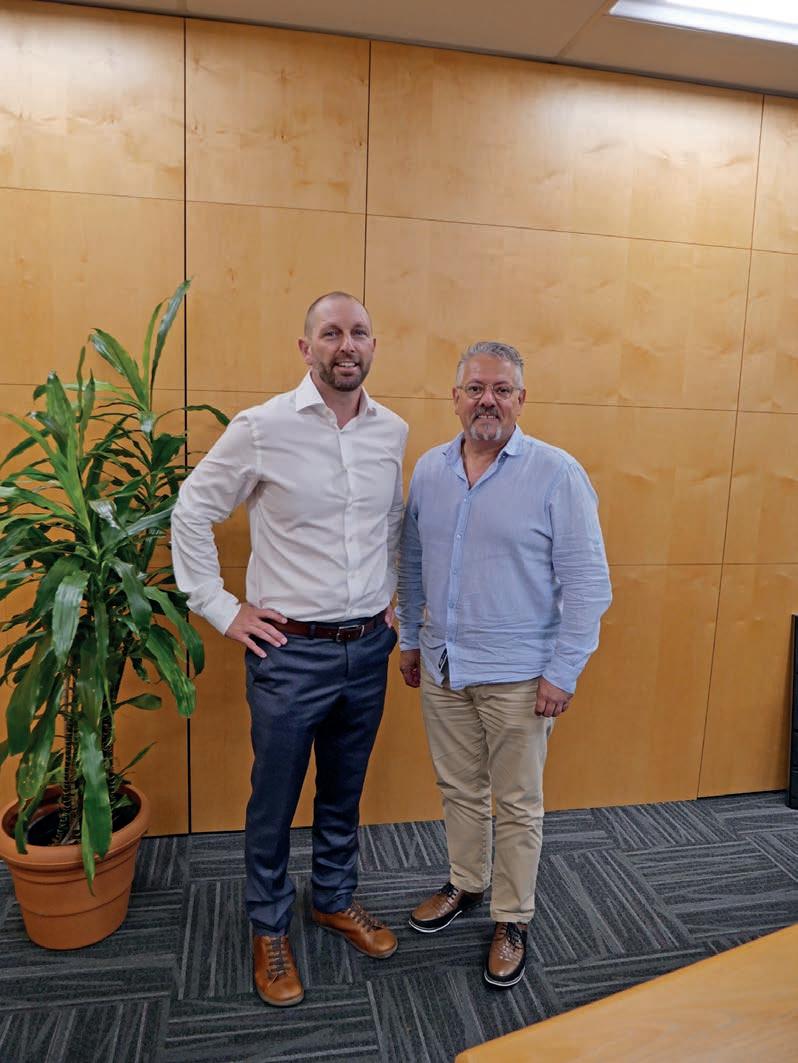
Wells said that the benefits were being seen already.
“There have been huge water savings in that we can see where there are irregularities in customer water consumption. That almost certainly means a leak on the customer’s side of the meter,” he said.
“Notifying customers of that means they can intervene early, get a plumber in, and fix that leak. It saves money, heartache, and water, so it’s great for network efficiency.”
Digital meters also help Coliban Water understand network demand far better than before. It has helped them plan infrastructure needs and target their water network investment.
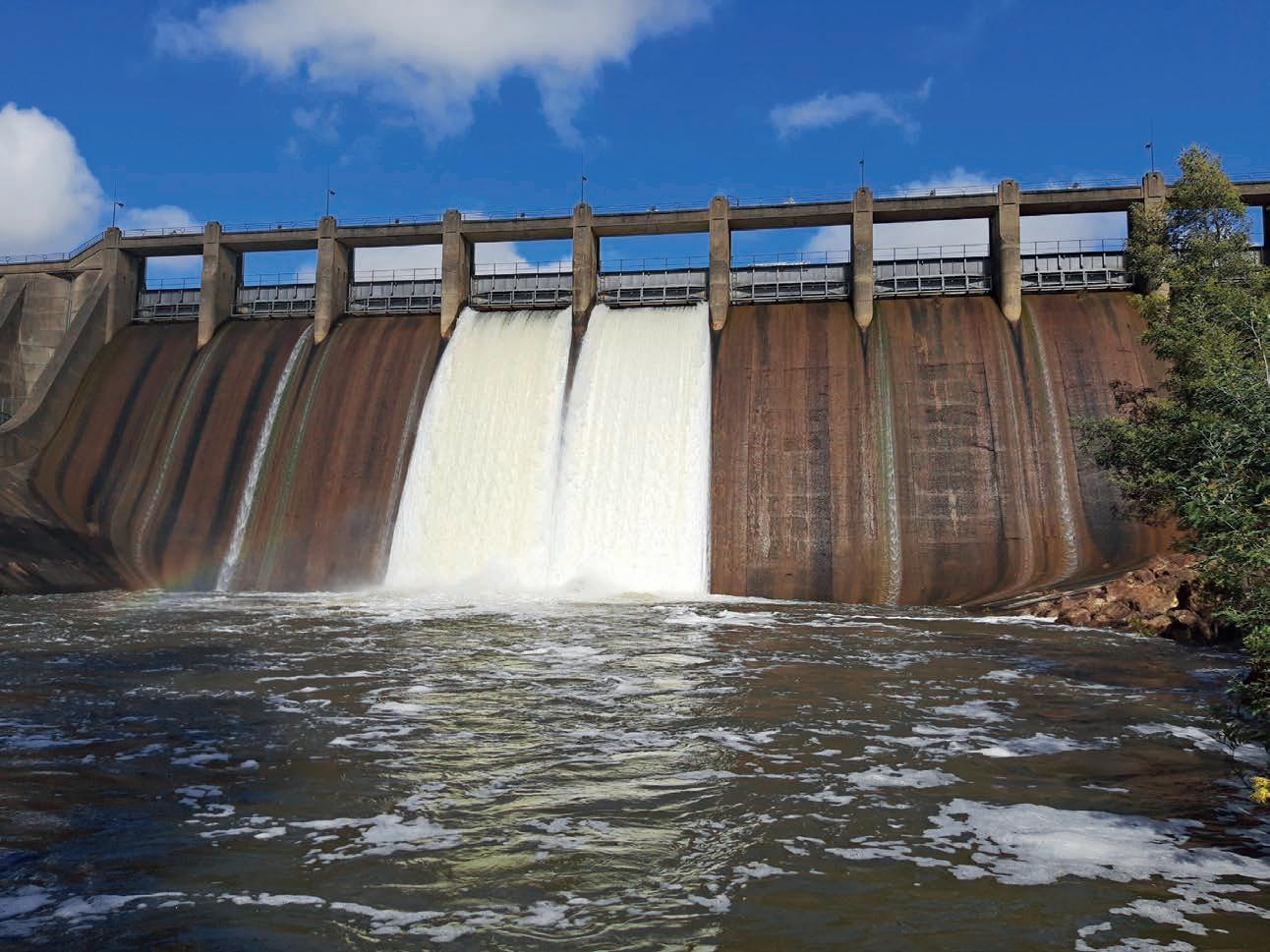
“If people can better understand their water use and volumes, they can change their behaviour accordingly,” Wells said. “The benefits are incredible. We could even offer timeof-use pricing, offering discounts on water overnight to fill tanks or incentivise automatic watering systems further.”
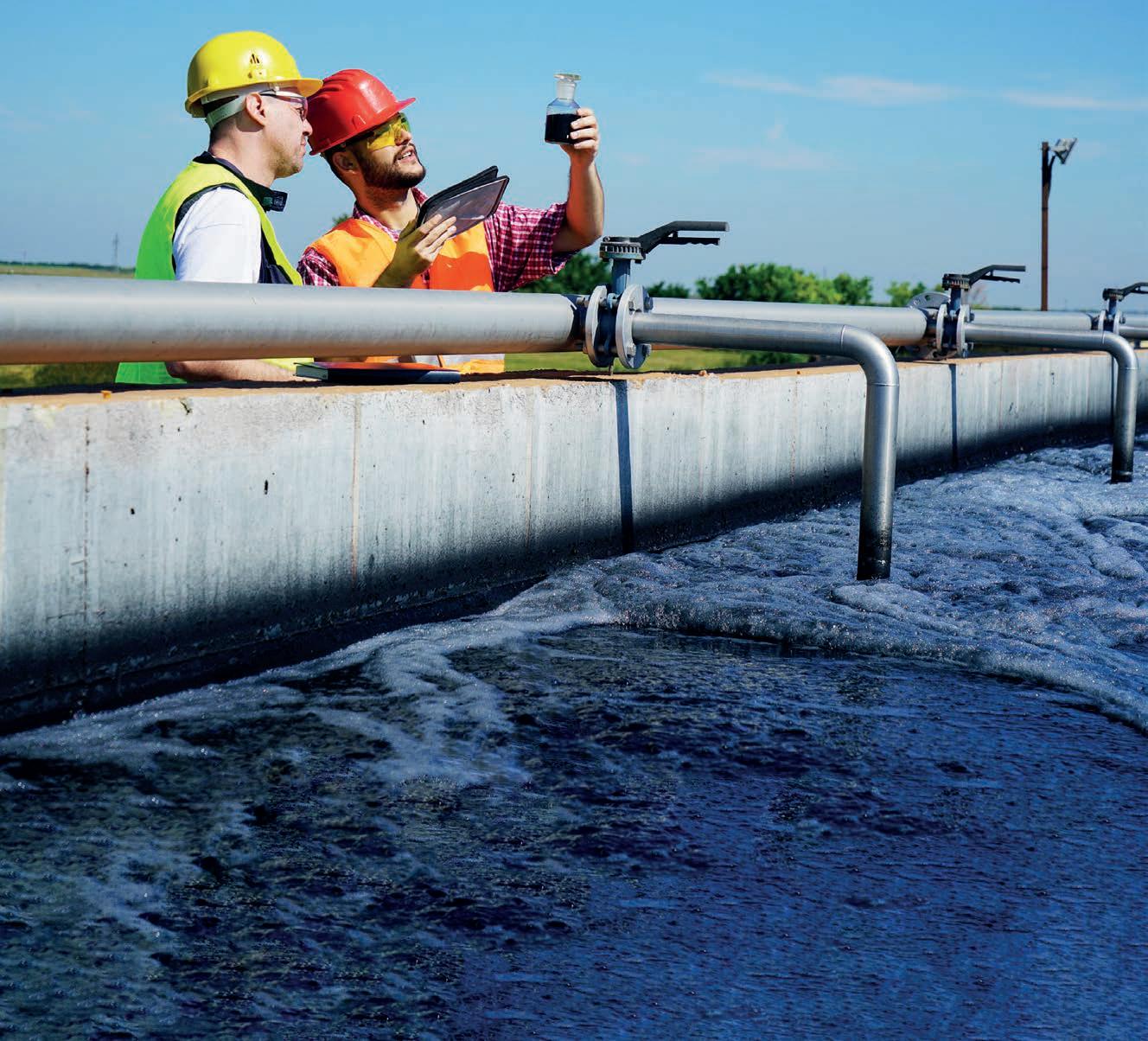 Lauriston Reservoir spilling excess
Damian Wells with Rodney Carter, CEO of Dja Dja Wurrung
Lauriston Reservoir spilling excess
Damian Wells with Rodney Carter, CEO of Dja Dja Wurrung
SUBSCRIBE TODAY
Inside Water is a new multi-platform publication for the Australian water industry. It is focused on the people, products and technology that enable sustainable and innovative management of Australia’s water resources. Visit www.insidewater.com.au, select Subscribe and use our easy online form to subscribe today!

www.insidewater.com.au
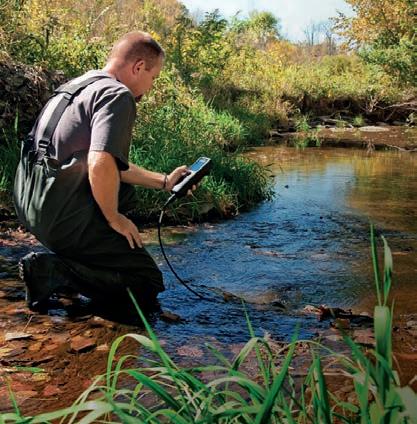
Faced with growing environmental challenges, for more than 160 years, SUEZ has been delivering essential water and wastewater services that protect and improve peoples’ quality of life.
With local roots and proud history in Australia, the company has carved out its place as a leader in water infrastructure. It is creating cycles for life for its people, customers, and communities.

A name synonymous with innovation, SUEZ is a driven, purpose-filled organisation. It conveys a desire to support its customers through ecological transitions towards net zero while ensuring water resiliency. The company thinks outside the box to ensure that the planet we live on is a place our descendants will be proud to live in.
SUEZ understands that every drop of water is a precious resource and will work to make sure communities have reliable access to clean water and sanitation services.
The proper use of water is a critical issue in SUEZ. To achieve this and to ensure that its customers get
the most value out of their asset management lifecycle, the company offers its clients an array of services across the water and wastewater sectors. As it works to create cycles for life, SUEZ’s commitment to the circular economy and sustainability remains strong.
SUEZ understands its purpose in Australian society. Its local teams are rooted in their communities and intimately understand their customers’ needs. Both locally and globally, SUEZ is committed to providing people and the planet with the resources for a shared future. With teams unified in their knowledge and passion for their work and culture, SUEZ is committed to water conservation and creating value from wastewater. The company collaborates to promote responsible behaviour among its
SUEZ Australia and New Zealand staff installing new systems at the Noosa Wastewater Treatment Plant.
staff, partners, and clients. True to its thirst for innovation, SUEZ has increased its investment in research and development by 50 per cent as part of its circular economy solutions and makes the best possible use of Australia’s finite resources.
One area that SUEZ is known for is being a trusted partner for circular solutions in water and waste. Since its inception, the company has developed a fundamental understanding of the needs of its clients. Its expertise in water and wastewater supports clients in managing complex projects on any scale.
Fundamental to SUEZ is its culture of partnership. At its core is working with its clients to generate environmental and social value. An example of this is the upgrade of the Boneo Water Recycling Treatment Plant. South East Water appointed John Holland, SUEZ and Beca to the project. They were tasked with delivering an innovative, safe, and sustainable water recycling process for the Mornington Peninsula.
The project will incorporate lowenergy nutrient removal and energy
recovery processes to help South East Water achieve its emissions reduction target of 45 per cent by 2025 and will have the potential for the plant to become carbon positive. With the plant’s construction completed, SUEZ worked with its partners to modernise it. The company has utilised several innovative technologies, including optimised anaerobic digestion, breakthrough technologies in wastewater treatment processes, Nitrite Shunt and anammox sidestream. All these technologies are designed to reduce South East Water’s reliance on grid electricity and improve capacity to serve the
current and future needs of the community and environment.
The outcomes achieved through this project will also contribute towards achieving the United Nation’s Sustainable Development Goals by minimising the impact on our environment, reducing emissions and working towards achieving carbon neutrality by 2030.
The SUEZ Strategy SUEZ‘s strategies are built around its core strengths.
SUEZ has the expertise and knowhow in water and wastewater. It builds on its project management skills, particularly when it comes to complex projects on a large scale. Taking a collaborative approach, SUEZ has a partnership culture ingrained in its
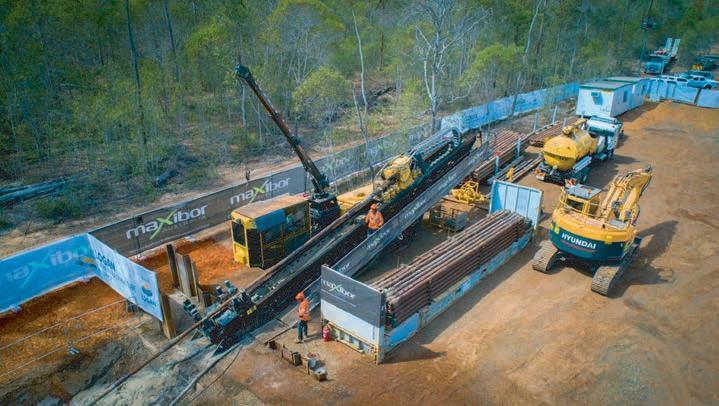
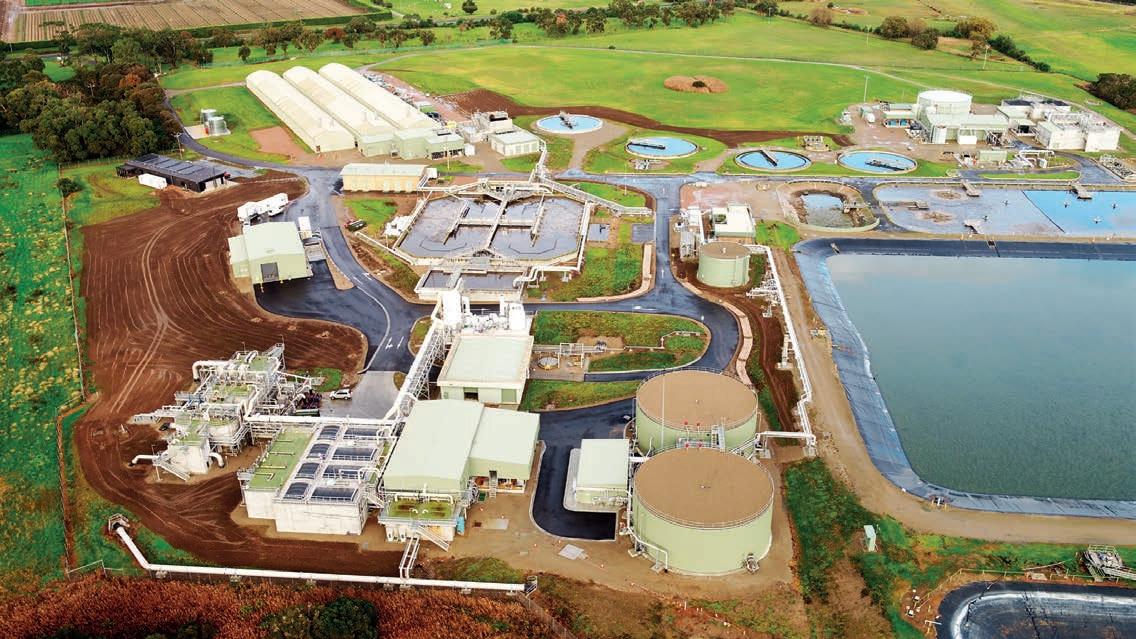
DNA. It comes from its commitment to delivering high-quality solutions and services. It also understands the value of maintaining long-term relationships with its clients.
Each multidisciplinary team puts their ingenuity to the test at every opportunity to serve society. They are driven and seek to make a difference by creating solutions that benefit every segment of the community for environmental and societal challenges.
As Australia and the world move faster towards a circular economy, the company’s step-change strategy is built to achieve this and is underpinned by three central pillars.
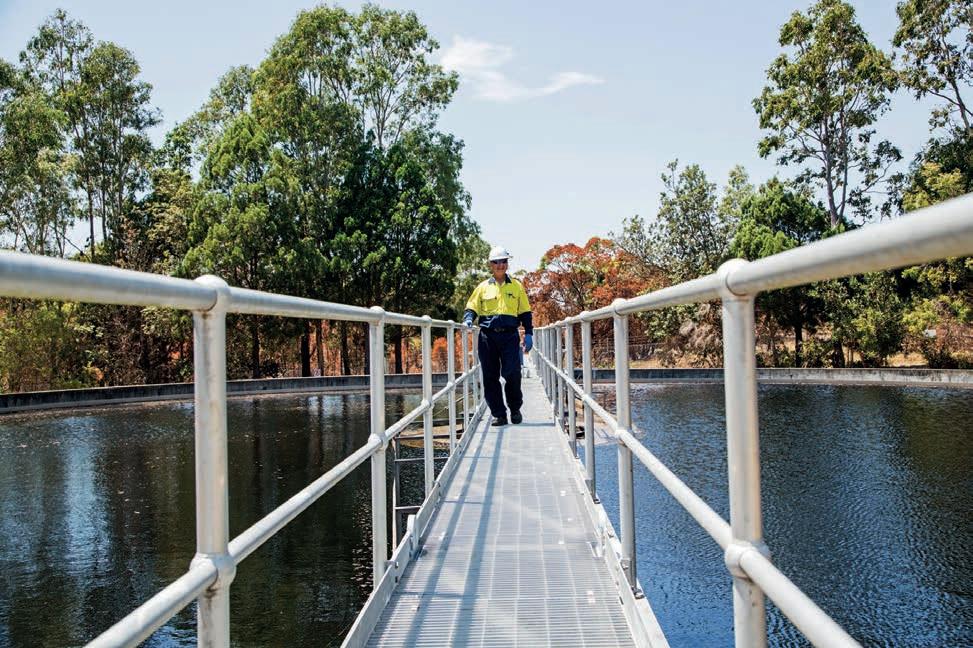

One pillar focuses on its core business. SUEZ is always looking at the value chain of wastewater,
water, and corollary services. It also examines its core markets that combine resilient and mature markets with an appetite for innovation and high-growth emerging markets.
A second pillar shows how SUEZ differs from others. It differentiates itself through its value propositions for its customers. SUEZ integrates its construction and operational expertise with its role as a digital, end-user experience and innovation leader. This is all collected under the umbrella of ambitious commitments that are proven to support people, the planet and nature.

The third pillar focuses on value creation for its clients. SUEZ looks at all its projects to prioritise cuttingedge technologies, digital solutions, and scalable services to maintain its competitive edge.

So why should companies choose SUEZ for their business? What makes it the right fit?
It’s vital to remember that SUEZ has passionate and committed teams, and they want their clients to succeed. They will enable clients and their businesses to become better.
First, it will ensure that clients can provide water and wastewater solutions to their communities by delivering resilient and innovative solutions. SUEZ will implement actions and bring solutions that will allow clients to grow and improve their quality of life. Through digitisation, SUEZ offers its clients innovative water and wastewater management models. It helps its customers exceed their standards in terms of water quality, recycling, and energy recovery.
Second, SUEZ aims to create value for its customers over the entire lifecycle of its assets and services. They want their clients to extend the operations of their assets with technology and continuous innovation. This approach makes the assets a resource enabler. In the eyes of SUEZ, all these products have value. They also aim to optimise water production and management.
Finally, SUEZ is shepherding its clients forward in the ecological transition, along with its client’s endusers. Being a partner means working with their end users to develop a sustainable lifestyle and protect nature. SUEZ provides a far-reaching set of water solutions. These solutions and services are enhanced with intelligent digital solutions to support responsible behaviours.
SUEZ wants to help users take an active part in preserving their environments.
For more information, head to www. suez.com/en/australia-new-zealand





Maxibor has taken steps to overcome the environmental challenges facing society. It aims to be a leader in the HDD industry and be part of the global impetus to achieve better environmental outcomes.
THE ENVIRONMENT IS the “E” in ESG, the acronym for Environmental, Social, and Governance. Each category of ESG has numerous subcategories, allowing each business or investor to contextualise ESG relative to their goals and values. Maxibor is among the leaders in horizontal directional drilling (HDD). Their HDD sustainability initiatives enable asset owners and principal contractors to respond to community demand for demonstrated action around the ESG environmental principles. The company’s collaborative approach provides asset owners across the water and sewer, rail,
mining, defence, fuel, sea cable, data centre, hydrogen and renewables sectors the means to demonstrate evidence of sustainable infrastructure installation practices.
Climate Change
HDD is an integral part of climate change adaptation action to mitigate the increasing frequency and impact of fire, wind, flood, inundation, drought, and rain bombs. Simultaneous disasters in multiple locations stretch the ability of infrastructure asset owners, emergency services personnel, and resources to respond to these events promptly and effectively.
electricity and telecommunications underground in times of extreme and higher frequency climate changeinduced events provide certainty of supply. They are safely away from the above-ground impact of extreme weather events.
Having infrastructure underground also increases community safety and reduces the recovery effort to reestablish essential services, as is seen along the east coast of Australia and inland in the eastern states.
HDD has a low
Design and constructing long and larger diameter HDD bores are where Maxibor can add value to climate change mitigation projects. Its design expertise in long, challenging pipeline installations and the capacity of its maxi-rigs like the Gallagher 660e, American Auger 660, and Vermeer D330x500 provide a turnkey solution for infrastructure asset owners on these projects. The involvement of the company’s HDD expertise in projects at the concept and early design stages is where its innovative solutions and experience will optimise project value.
HDD is the “go-to” solution for smaller projects. The recent floods have emphasised the importance of not creating future problems by digging up existing road pavement to run utilities across roads. This weakens the trenched section of the road and the surrounding pavement, as water can enter once the “seal” is
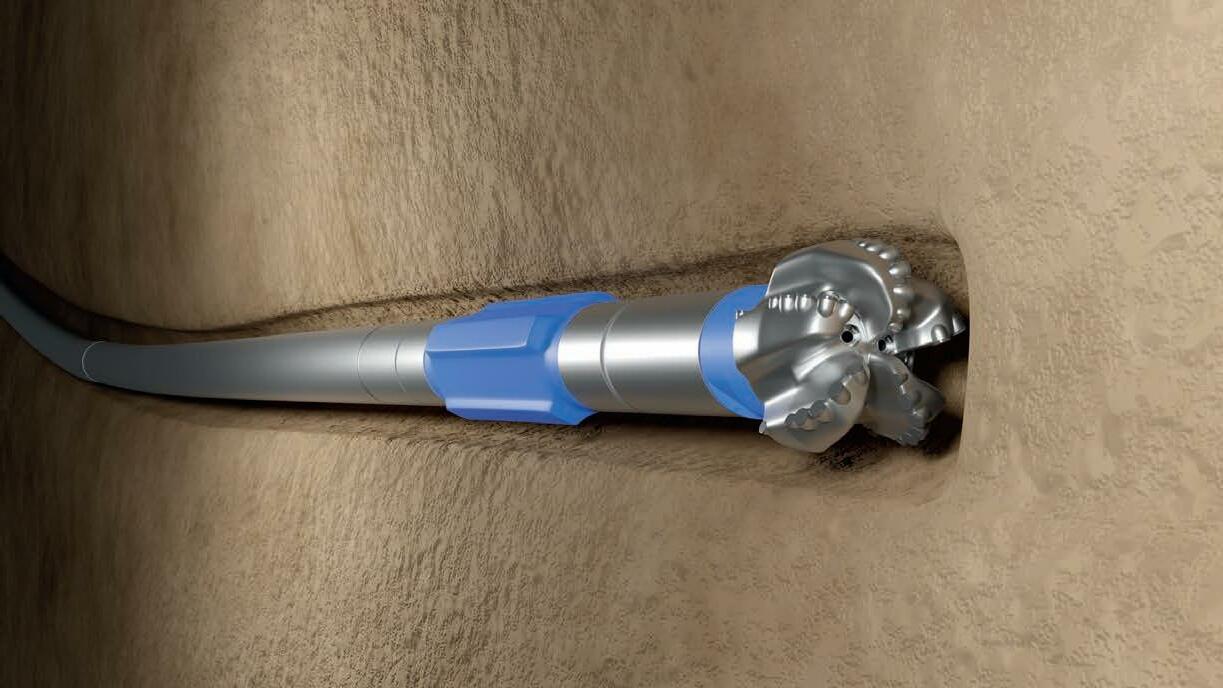
Broader and deeper potholes are the consequence. Using HDD to underbore the road to install utilities or repair is a more sustainable asset management solution with a lower whole-of-life cost and safer roads.
HDD also provides solutions to those sectors with too much water. The mining sector has mines filling with excess water, impacting the safe operation of the mines. HDD, with its extended bore capability
and powerful pumps, provides a means to access the water from another direction and divert it to an alternative location.
Similarly, where water and sewer asset owners have water storage areas full, HDD provides a relatively straightforward solution to divert excess water at high rain event times to another path or location to mitigate short-term damage to community assets.
It is incumbent on all industries to reduce carbon emissions. The use of emissions-friendly electric rig spreads can be provided by Maxibor with the Gallagher HDD660e maxirig (The Hulk), powerful pumps and drill mud recycling system assists in a cleaner and lower noise delivery of HDD services. Such an HDD delivery solution is suitable for wellestablished metropolitan areas.
For carbon emissions to be reduced by the civil construction industry, the way we deliver projects needs to select more environmentally friendly methods. Changes in behaviour around design, construction methodologies and equipment used are required. Maxibor’s electric HDD maxi-rig spread and carbon emissions measuring model are examples of how the industry changes its behaviour.
Ageing infrastructure is an increasing issue across Australia. This is particularly so in the water sector, where the negative environmental impact of fluid leaks from ageing infrastructure is unacceptable. HDD is a vital part of the replacement solution to prevent ecological damage and preserve limited resources.
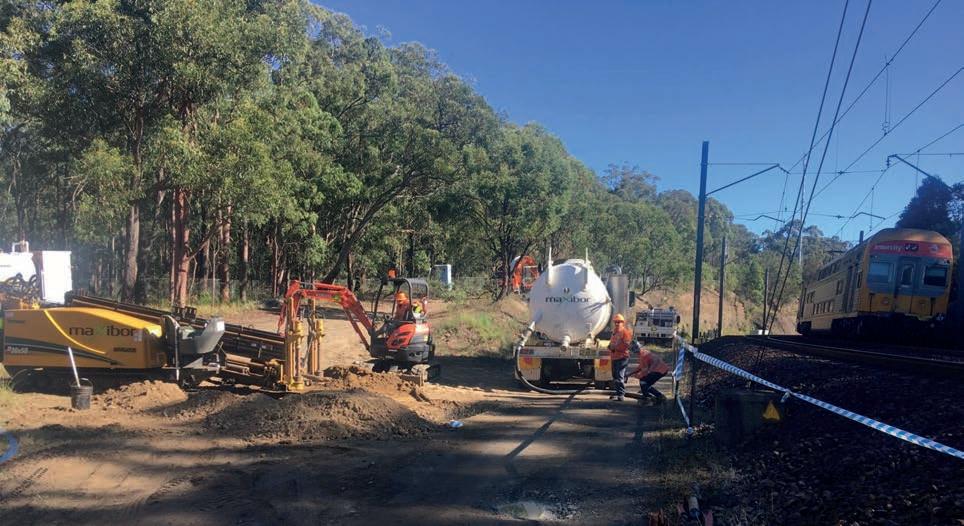
As HDD can undertake its work
at a greater depth than open-cut methods, it is less likely to interfere with existing services. Nevertheless, it is essential to utilise modern services and location equipment to confirm drawings. Using fit-for-purpose steering equipment is also necessary when completing the pilot hole for each bore. All this helps to avoid the pollution of the local water supply and surrounding environment.
Good design in the planning stage with quality geotechnical information and experienced HDD drillers also reduce the underground environmental risks. Preparing and implementing a drill mud management plan will help ensure that the fluid drill materials used are appropriate for the local environment.
Improved drill fluid technology is providing products being better able to address bore hole challenges. Ingredients to address bacterial odour from the drilling mud and unstable boreholes, such as those encountered in water-charged sands, reduce the frequency and extent of unwanted outcomes from HDD projects.
Improved drill fluid disposal practices also reduce the waste that must be transported from the site. Products are now available that solidify the water-based drill fluids on site. This reduces the quantity of
HDD techniques are focused on a smaller footprint.
waste required to be disposed of and the number of vehicle movements for disposal to a licenced facility.
Maxi-rigs like the Gallagher 660e are designed for long pipeline installations.
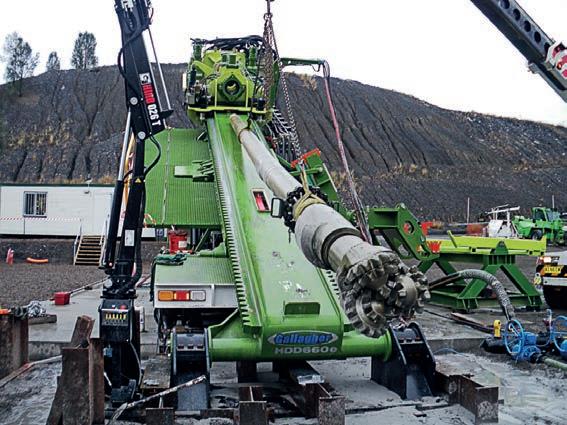
HDD benefits the environment, especially compared to traditional open-cut trenching and excavation methods. A smaller footprint and the installation of underground pipelines underground with minimal disturbance of the above and surrounding landscape avoids impact on sensitive areas that need to be preserved for environmental or cultural reasons.
For more information, visit www.maxibor.com.au
Hydroflux, an Australian water treatment specialist for groundwater remediation, has developed a ZeroBrine membrane process utilising HyPURE NX nanofiltration
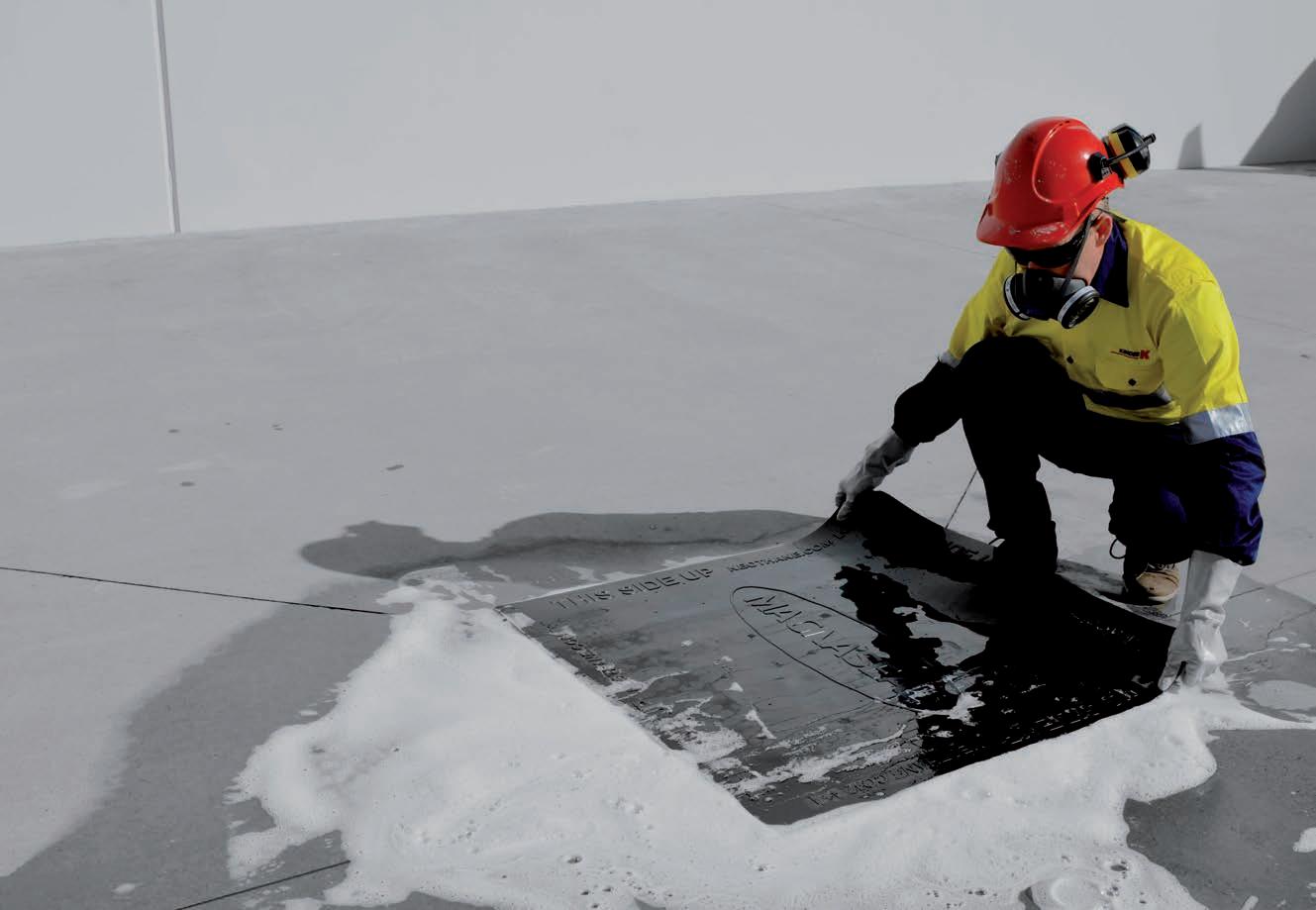
a global phase-out of these products. While PFAS compounds are not manufactured in Australia, they are still in use and are present in a range of imported consumer products.
One of the primary sources of PFAS contamination is firefighting foams. The sale and use of PFAS firefighting foams are banned in South Australia, and New South Wales introduced a range of restrictions in March 2021.
Due to its mobility and persistence, PFAS contamination in the environment from firefighting foams, alongside other sources, are widespread across Australia. The current EPA national environmental management plant for PFAS recommends treating PFOS to 0.00023 µg/L (0.23 ng/L) and PFOA to 19 µg/L before environmental discharge.
Hydroflux has developed a new process to treat PFAS in groundwater. The process can be implemented on new and existing GAC, IX and SAFF systems to reduce operating costs for treating long and short-chain PFAS. The technique also provides environmental benefits through a reduction in energy use. It also avoids the use of pre-treatment chemicals required for traditional filtration processes.
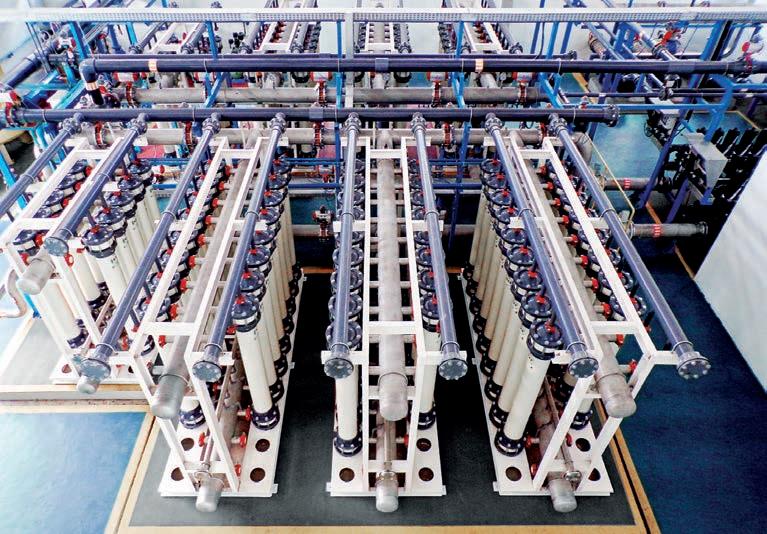
PFAS is a group of synthetic chemicals known as per- and polyfluoroalkyl substances. The hallmark of PFAS compounds is their series of carbon-fluorine bonds, which form part of the “backbone” of these chemicals. The backbone is typically combined with a carboxylic or sulfonic acid functional group.
There are some notable exceptions to this, such as Gen X compounds. The high energy required to break the carbon-fluorine bonds within PFAS substances means they are virtually indestructible, making them ideal for various industrial uses. These products have been used in everything from firefighting foams and Teflon to grease-resistant coatings in carpets and chip packets.
The major challenge with these compounds is that they do not break down in the environment, leading to bioaccumulation within animals and humans.
PFAS molecules are also highly mobile due to their hydrophilic carboxylic acid and sulfonic acid functional groups, enabling them to travel thousands of kilometres in groundwater and surface water.
The combination of their ability to bioaccumulate and mobility has led to
Currently, many treatment technologies are used to remove PFAS from the surface and groundwater. Many of these solutions are only functional on a small scale. Alternatively, these solutions treat highly concentrated waste due to the high energy requirements to operate at extreme temperatures or pH ranges to break down C-F bonds.
Several proven treatment methods exist, including activated carbon (GAC) and/or ion exchange (IX) adsorption and foam fractionation. These technologies have proven effective at PFAS removal when incoming concentrations are high. However, the level of reliability reduces at very low concentrations (1-5 ng/L) while operating costs increase. All technologies also struggle to remove short-chain compounds such as PFBS.
Reverse osmosis and nanofiltration membranes remove PFAS compounds, even at low incoming
concentrations (1-5 ng/L). However, managing waste brine creates a serious and currently unresolved challenge.
HyPURE NX ZeroBrine nanofiltration process for PFAS removal
Hydroflux has developed a process that exploits the benefit of the physical barrier to PFAS compounds offered by nanofiltration membranes without the challenge of handling waste brine.

The ZeroBrine process utilises the company’s HyPURE NX system fitted with NX Filtration direct hollow fibre nanofiltration membranes at its core.
The NX Filtration dNF40 and dNF80 membranes are effective at removing PFAS compounds. The pore sizes and unique nanocoating in the membrane are structured to retain PFAS and other organic pollutants while allowing dissolved inorganic salts to pass through.
The HyPURE NX ZeroBrine process can also be retrofitted to existing GAC, IX and foam fractionation systems to provide improved treatment performance, reliability and savings in operating costs. The membrane provides a barrier to remove a range of PFAS compounds.
Removal rates of various PFAS by NX unique 400 DA and 800 DA hollow fibre nanofiltration membranes.

One benefit of the HyPURE NX system is that it removes a broad spectrum of other contaminants in a single process, meaning that other targeted treatment systems do not need to be provided. Some of the many compounds removed by the HyPURE. NX system are:
• Heavy metals, including Zn, Pb, Fe, Mn, Cu, Cd, Cr, As


• Chromium VI (< 1 µg/L ANZG 2018 95 per cent SPL)
• Dissolved hydrocarbons
• Pathogens
• Microplastics.
To find out more, visit hydrofluxindustrial.com.au
Pots and vases are not the first thing to come to mind when measuring groundwater levels. The VEGAWELL 52 and its ceramic measuring cell seek to change your mind.
“THE CERAMIC MEASURING cell is the beating heart of the VEGAWELL 52,” said Tony Scarborough, New South Wales Business Development Manager for VEGA Australia. Scarborough spoke about how the VEGAWELL 52 can impact industries across the country.
The device is a hydrostatic submersible level sensor. The measuring cell detects minute changes in hydrostatic pressure. The pressure increases or decreases depending on the filling level in the vessel. That pressure is converted into an output signal by the integrated electronics. Ceramic-capacitive and metallic measuring cells are used to detect the pressure in hydrostatic pressure measurement.
Scarborough said that the VEGAWELL 52 could also measure temperature, is unaffected by foaming, and is infinitely adaptable to different container sizes.
“The ceramic measuring cell
the water above it. That is called the height or head of water. In fairness, it can measure any liquid in which the VEGAWELL 52 is submersed; there are no limits to what it can do,” said Scarborough.
The ceramic cell is designed for long-term use and minimal maintenance. They are constantly compensating for atmospheric pressure changes using a breather tube that goes from the end of the cable to the back of the cell.
“That way, any changes in atmospheric pressure can be accounted for. Users can also electronically zero the sensor, so there is always a consistent pressure measurement,” said Scarborough.
Advantages of ceramic measuring cell
One of the major benefits of ceramics is that they are inert substances. Generally, they do not react with anything else.
The VEGAWELL 52 works on the principle of hydrostatic pressure.
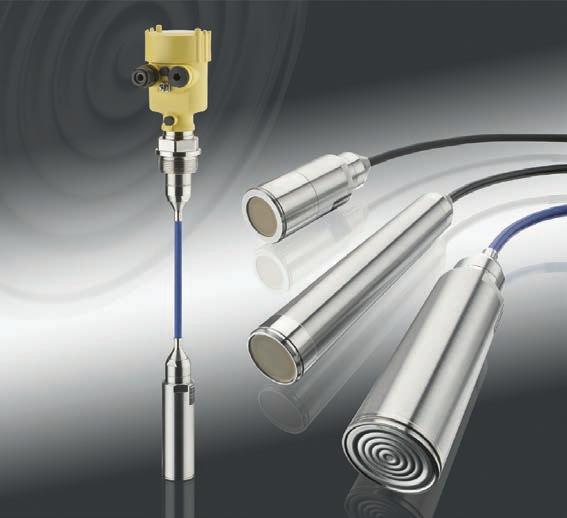
highly resistant to corrosion and chemicals,” said Scarborough. “Given the potential for large amounts of contaminants and wide range of granules of other materials, the ceramic measuring cell will last longer than other measuring cells.”
The ceramic measuring cell is also designed with a higher overpressure limit. Most products are built to handle three to four times the maximum pressure without compromising the device. The VEGAWELL 52 can manage more than 200 times the overpressure.
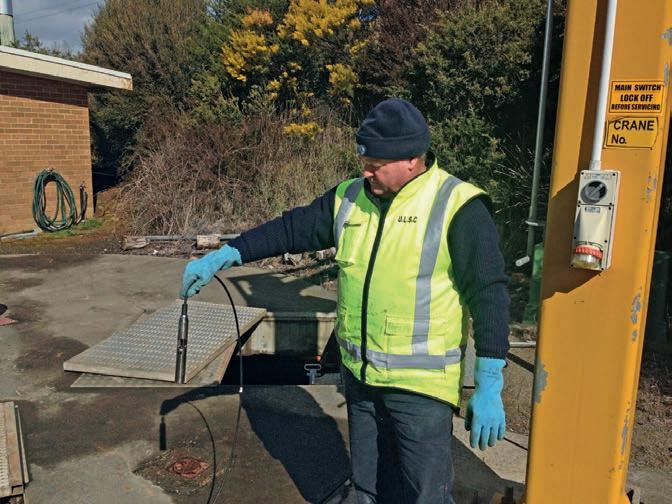
The VEGAWELL 52 has been in service for more than 20 years.
the VEGAWELL 52
The VEGAWELL 52 has been used on several underground road tunnels, particularly in New South Wales, Victoria, and Queensland. Of note is the role that the VEGAWELL 52 has played in the NorthConnex project in Sydney.
“The VEGAWELL 52 is intrinsically safe, as it can manage the potential for toxic and combustible fumes. This is always an issue for underground road tunnels,” said Scarborough. “That is because they run parallel to the roadway and operate underground.”
The unit integrates with other devices to manage water levels throughout any system. When looking at groundwater management in a project like NorthConnex, each VEGAWELL 52 is connected to a sump, traditionally above a ventilation shaft of up to 600 metres in length. These shafts are drilled parallel to the road itself. The sumps are all connected to a water treatment plant at one end of the underground road.

“Water levels can be monitored to operate the pumps by measuring the water collected in these shafts. For example, the pumps may wait to turn on when the level in the collection sump reaches 50 per cent. The pumps may remove water until the sump reaches 25 per cent,” said Scarborough.
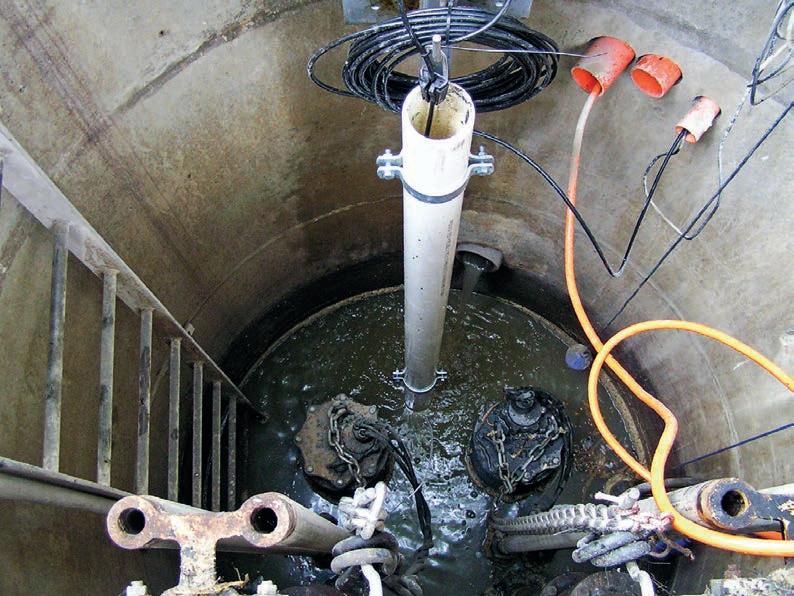
Traditionally, the VEGAWELL 52 functions through a controller supplied by VEGA Australia. In the earlier stages, the controller was an on/off switch with a couple of relays connected to the unit. More commonly, the VEGAWELL 52 is connected to a programmable logic controller (PLC). The most common controller is the VEGAMET 391, optimised for the water and wastewater industries.
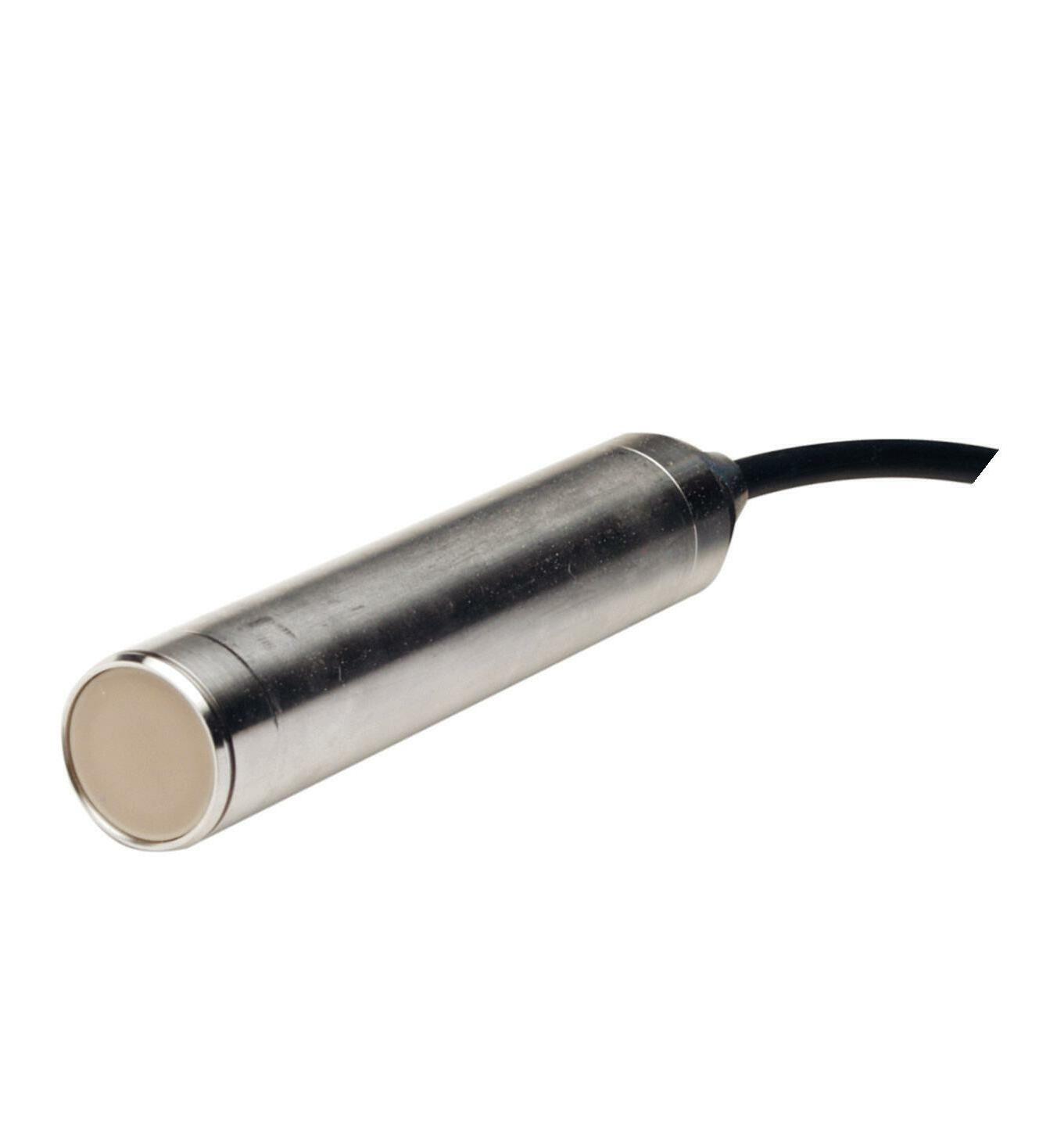
What makes VEGAWELL 52 better?
The cable used in the VEGAWELL 52 is designed for long-term use and low maintenance. The cable is made of PTFE, which is a derivative of Teflon. It is designed for chemical resistance and flexibility, making it suitable for any groundwater situation.
“We also sew Kevlar strands through the cable sheathing,” said Scarborough. “That gives the cable excellent tensile strength, particularly for deep bore level measurement.” Scarborough also highlighted the
The pressure sensor for the VEGAWELL 52.
Placing the VEGAWELL 52 in a wet well.
importance of built-in over-voltage protection in the VEGAWELL 52. This covers lightning strikes or voltage surges.
“This is more common than people may think,” said Scarborough.
“The VEGAWELL 52 is traditionally submerged in a liquid or water. The potential for one to be struck by lightning depends on where it is deployed. This is most common for above-ground water reservoirs. It does not happen as often, given that most reservoirs are closed to the open air. However, it can happen for open-air water dam level measurements.
It’s not just about the groundwater While the VEGAWELL 52 is for groundwater, it has many functions across multiple fields.
“As long as it is submerged in some water, it is doing its job measuring water levels,” said Scarborough. “It could be used in ponds, lagoons, or basins. I know that some clients use it for rainwater harvesting, river levels and managing sewage levels.
The applications continue to grow as users explore its functionality.”
For more information, visit www.vega.com/en-au
Leeton Shire Council has installed its first large flock of Taggle Cockatoo telemetry devices to monitor water pressure, lift station levels, river heights and rainfall.
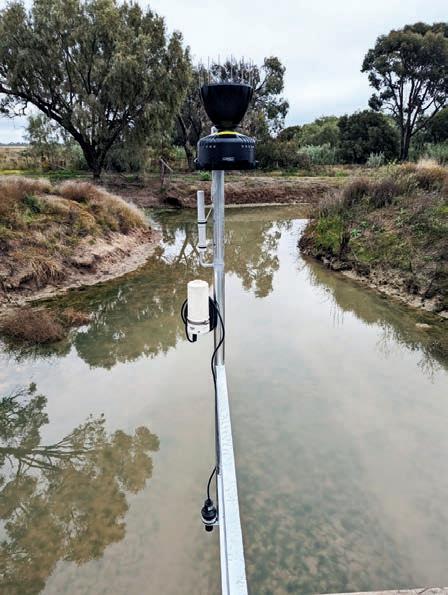
LEETON SHIRE IS in southwest New South Wales. It is 584km from Sydney, 470km from Melbourne and 371km from Canberra. Leeton is the birthplace of the Murrumbidgee Irrigation Area and was purposely built as part of the Murrumbidgee Irrigation Scheme.
Understanding Leeton means understanding its climate and its relationship to the Murrumbidgee River. Leeton has a semi-arid climate with hot, dry summers and cool winters. The maximum average summer temperature is 32°C, and the maximum average winter temperature is 15°C. The average annual rainfall is 457mm.
The Murrumbidgee River provides vital irrigation water and feeds the Ramsar-listed Fivebough and Tuckerbil Wetlands. These wetlands play an essential part in the local ecology. Up to 174 bird species have been recorded in the Wetlands during the warmer months. Many of these bird species are migratory birds from the Northern Hemisphere.
The council is the water utility and authority for about 4500 people and the sewage provider. In the words of Gerard Simms, the IT Manager of Leeton Shire Council, said, “Leeton is the ideal Goldilocks size for trialling new technology”.
“We are small enough to deploy new technology through our network fairly easily. At the same time, we are not big enough to have too much bureaucracy to slow things down,” he said.
With water central to Leeton Shire, it takes its water monitoring seriously. With that in mind, Leeton went to market three years ago for smart water meters. After
rolling out the smart meters from Taggle, conversations took place around other radio network uses. Taggle’s IoT solutions provided opportunities to look at different use cases to understand the water and wastewater networks through a more comprehensive array of sensors. This is where the Cockatoo telemetry device came into play.
The Cockatoo is Taggle’s recently released versatile telemetry device. It can accommodate a range of sensors, protocols, and radio technologies. The Cockatoo can address unique or specific requirements and challenges. Leeton Shire Council wanted
to monitor water pressure in its reticulation network and issue early warning alerts in response to rising levels in lift stations. It also pairs rain gauges with ultrasonic levels sensors to provide an additional early warning for rising water levels during heavy rainfall.
“One of the biggest benefits of the Cockatoo is that they are batterypowered. The lack of electrical work means that we can install them anywhere and place them somewhere that is unlikely to be vandalised,” said Simms.
The Cockatoo collects the data, which is then processed and delivered via Aqualus Vision, Taggle’s IoT visualisation platform. This platform enables remote visualisation of assets and resources with early warning alerts to inform decisionmaking and to quickly address any issues.
Expertise
Simms has been with Leeton Shire Council for four years, having spent several years in the IT industry. He has a clear understanding of how the system works.
Over time, developers had put pump stations at the end of every street instead of building main trunk lines back to existing pump stations. Some of these pump stations are overgrown septic tanks with a submersible pump – they may only serve one or two houses.
“It’s hard to justify the SCADA investment for that situation, so we needed to find something that would give us full visibility of the system at a lower cost. We wanted to reduce the risk of having unknowns in the system,” said Simms. “One of the biggest problems with automation is that unless you have 100 per cent coverage, you do not know what you do not know. If staff are not looking at every pump station, we will not
enormous challenge. Taggle worked closely with Leeton Shire Council to provide all the water and sewage operators with one platform to find all their data.
“Having one source of truth meant that any alarms come from one place. We wanted to make the system as simple as possible for the end users,” Simms said. “That worked really well.”
What has Leeton Shire Council learned?
The most important thing for any such investment is what a council can learn from the sensors. In the case of Leeton Shire Council, they have learned some trend information from different pump stations around the network. It included trends that they had never known about before.
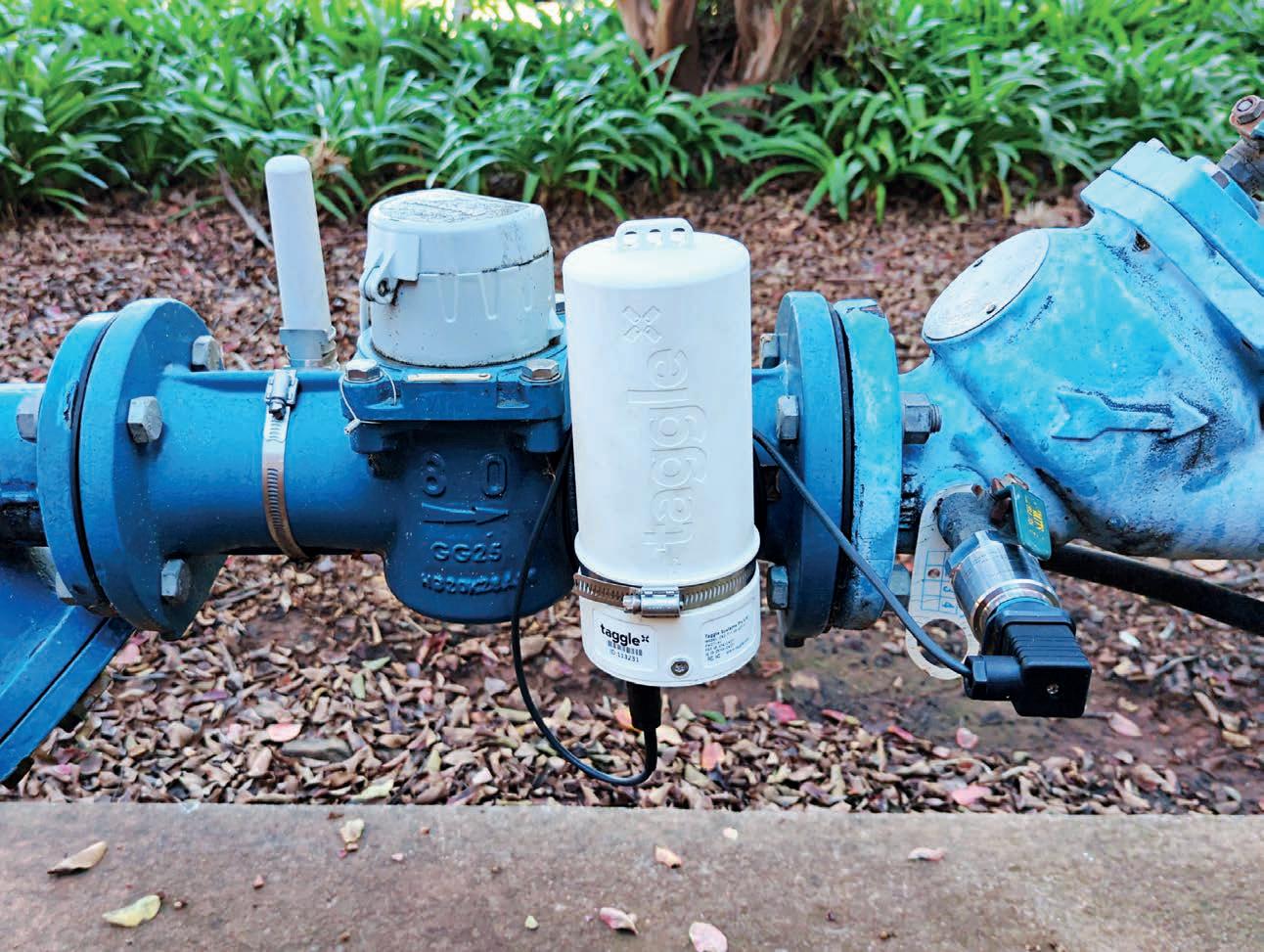
“We discovered that one pump station hooked up to a sports ground would reach a critical level that may need action, every second Sunday. This occurred at about 5:30 in the afternoon every second Sunday during winter. We figured that it’s the showers and toilets all being used at once after the game,” said Simms. “Ninety-nine per cent of
Monday, all that water is gone.”
Simms added that the pump station is probably an overgrown septic tank that needs to be upgraded at some point. However, the more important issue is how to invest capital appropriately. Finding this trend and having this data will help Leeton make that decision.
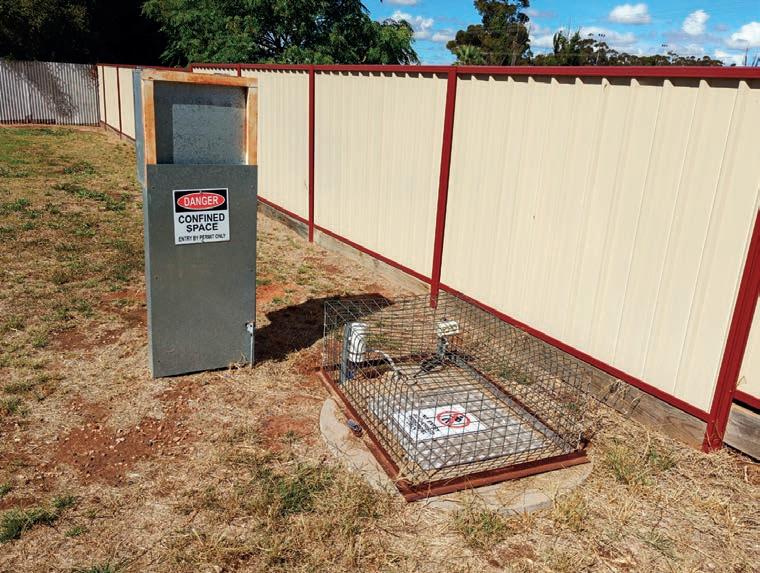
A lift station in Leeton Shire
time to act early on issues.
The Cockatoo devices have given Leeton Shire Council the knowledge to manage its water and understand its flows. The more it learns, the better it will understand its future capital investments.
For more information, get in touch
When pumps and sensors are spread over a great distance, troubleshooting can require long trips to disparate places. What if data from those remote critical assets could be collected and monitored before setting out?
REMOTE ACCESS TO machinery and assets in the field has never been more critical. About 5 per cent of machine data is transferred to a local controller, with the remainder lost. Ideally, an organisation could capture that data to optimise its installation. However, it is expensive in terms of costs and time.
Technological advancements and developments have created new pathways to gather accurate data from sensors in real time. Users can make time-critical decisions with the right systems, saving time and money.
What service can provide this?
This is where ifm steps in. It has a new product called Sensor2Cloud. Sensor2Cloud technology allows the collection of process data from the sensor. That data is sent directly to the cloud. No connection to a
controller, computer, or company network is needed.
The Sensor2Cloud can be used to monitor and evaluate remote locations. These locations include machinery and processes that are not connected to company infrastructure. The Sensor2Cloud system can even be connected to assets that don’t even have power connected.
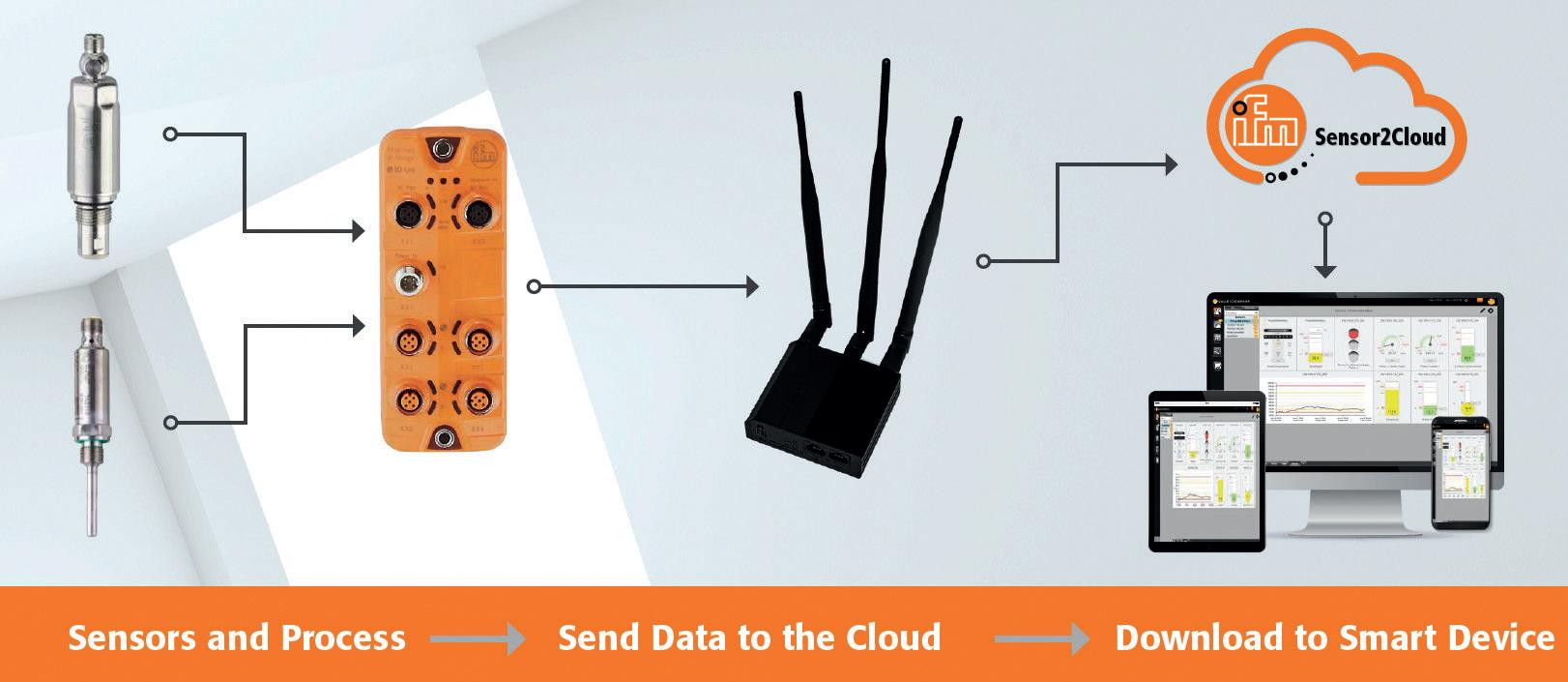
The Smart sensor data is sent directly via a mobile network to the cloud and can be viewed on a webbased dashboard to visualise and analyse cloud data.
What does Sensor2Cloud do differently?
The first thing about the Sensor2Cloud system is that it is simple to set up. Once you mount it and connect it to the system, it is ready to go. This plug-and-play
ifm’s Sensor2Cloud is simple to set-up and user-friendly, as it collects process data from the sensor and sends it to the cloud
setup is designed to operate within any operating system.
Second, the data is transmitted over 4G to the cloud. This allows small businesses to be flexible and manage their sensors while allowing larger businesses to operate them separately from their IT networks. There is also no need to create a stand-alone system for devices. It can all be accessed from any smart device or computer via a multi-factor authentication process.
Third, ifm has designed Sensor2Cloud to be user-friendly. Users can customise the information they see, so they know what to do when alerts come in or if there appears to be something wrong. That information is critical for reducing labour and maintenance costs.
Who is using Sensor2Cloud?
ifm has been a partner with a food and agri-business enterprise that operates in 60 countries. The company supplies food and industrial raw materials to more than 20,000 customers across the globe. The company is among the world’s
largest suppliers of cocoa beans, cocoa products, coffee, cotton, and rice.
When it comes to the company’s Australian markets, it farms almonds and grows cotton. Its primary growing region for almonds is in northwest Victoria. That is because it is usually dry and sunny, with plenty of water for irrigation from the Murray Darling River. Its almond farm has 28 pump stations in Victoria, with an additional 18 in New South Wales, on the other side of the river.
The pump stations vary in size and location. The pump stations can hold up to seven pumps and are generally connected to 250kW motors. All the pump stations are located next to the Murray River or near large dams on its farm. The dams are for water storage, forming a link between the Murray River and the irrigation channels for the almond trees.
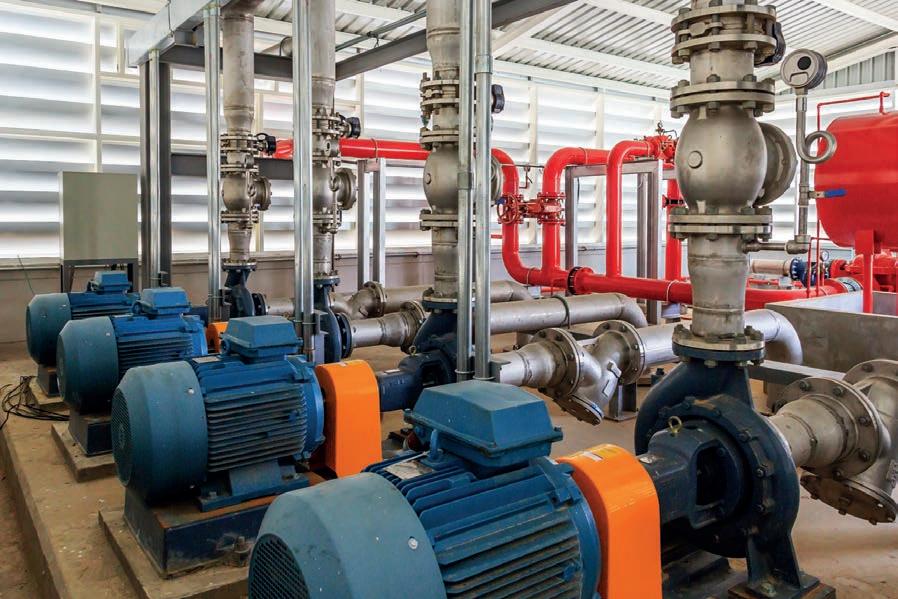
The business must always keep an eye on the irrigation pumps. Any irrigation pump’s failure is directly linked to the company’s almond yield. If it were to lose water for a few days, the trees would become stressed, and the yield quality would drop. The pumps also operate the fertiliser system, so failure is not an option. These bigger issues come before the general maintenance needs, cavitation, bearing wear and tear, and mechanical issues.
When ifm was working with the customer, the farm used a different product for condition monitoring. It had also invested in vibration units for one area of its almond farm connected to the cloud via WiFi.
What was the customer looking for?
ifm learned that the enterprise was looking for several things. First, it wanted something user-friendly that used a traffic light level of warning. Green is good, yellow is a warning,
and red is bad – many such setups operate using this system.
It also wanted a cloud-based system to remove the task of software maintenance. It had commissioned a series of 4G towers throughout the farm, so it would be easy for the data to be sent from the sensors to the cloud. It would also use its irrigation suite at the front end and integrate its vibration units into a common platform.
Another key consideration is ensuring that employees get the information that they need. An efficient system of email notifications was set up to ensure this goal was achieved. Farm technicians would
Sensor2Cloud can be used to collect and monitor data from remote critical assets.
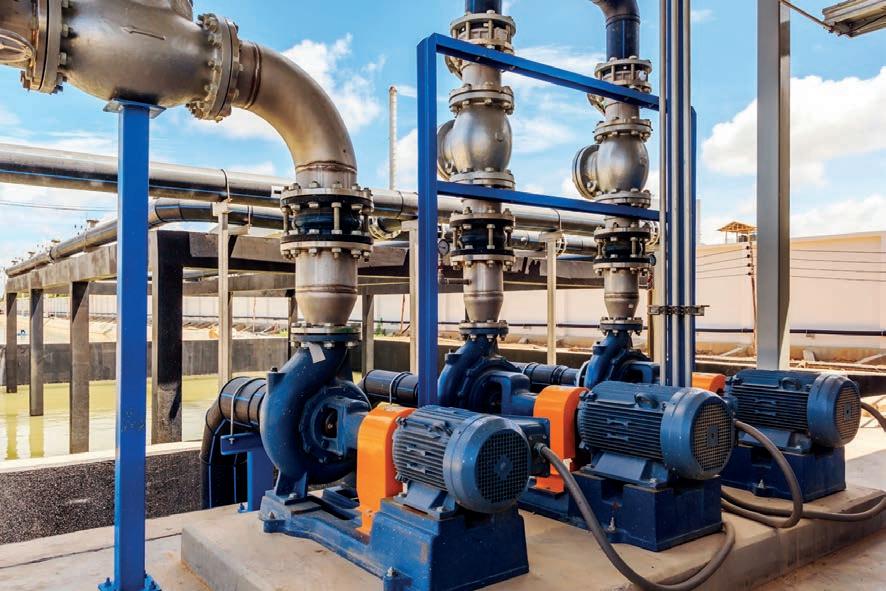
IT team would look at the irrigation suite of traffic light problems, and the maintenance team would have detailed graphs and trends to observe through the Sensor2Cloud package.
Users can customise information so they know what
The business found that Sensor2Cloud was a reliable product that integrated into its internal systems and provided local customer support. The cost structure suited the company’s cash flow, with the subscription model providing budgetary ease and improved financial forecasting.
For more information, visit www.ifm.com/au/en/au/
There is no such thing as a one-size-fits-all solution to the floods experienced yet again in Australia. But a common approach can help mitigate risk and prepare for the future.
THE FEEDBACK FROM water managers around recent flood events has been characterised by shock and awe. It has been about how stormwater infrastructure can cope with the levels of water that submerged parts of Byron Bay and Lismore, Brisbane, and Sydney in recent times. There is no single solution for issues resulting from extreme weather events like those experienced recently. Not only are councils trying to control unprecedented volumes of water, but solutions also depend heavily on local conditions and challenges.
“It’s a mistake to walk into a council area and assume they all have the same problems and they all should be taking the same approach,” said John Weaver, Contracts Manager at pipeline infrastructure company, Interflow. “It depends on the age of the area, on population growth, ground type and much more.”
“Newcastle, for example, is an old city with stormwater problems amplified by earthquakes. That’s very different to a newer area like Camden. A town like Dubbo has problems underneath the highways because of subsidence. In other towns, stormwater problems are caused by a build-up of silt in the pipes. Do we assume there is no solution? Absolutely not.”
The secret to success can be shared between water managers everywhere. It means using recent events to create greater awareness of Australia’s stormwater infrastructure and the condition of underground assets. Furthermore, it involves utilising modelling to plan future
developments of water infrastructure and residential and commercial buildings.
Stormwater management in the future
“Look to New Zealand for an excellent example of preparation for the effects of climate change on water infrastructure,” Weaver says.
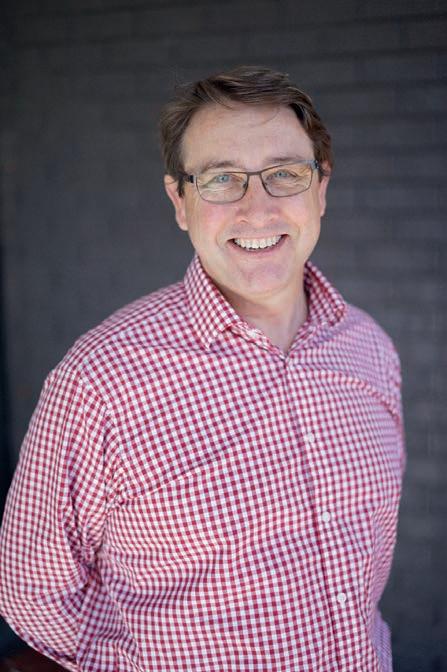
“Asset owners and town planners are focussing management strategies on flood events increasing and rising sea levels.
“They’re doing a lot of modelling. They want to ensure that if there are future land developments or growth corridors, they fit into what’s predicted to happen with water.
“In Australia, our focus has been on water security, on getting ready for the next drought. It’s correct to focus on water security. But at the same time, increasingly regular and extreme rainfall events also deserve attention. Directions filter down from the Commonwealth to the states and asset owners around water security. These are typically mandated. They provide an excellent model for us to manage increasingly challenging stormwater issues successfully.”
Outside of emptying dams and preparing communities, there is little that can be done in the way of an emergency response to such flood events. According to Weaver, the focus should instead be on developing greater awareness of the current state of existing infrastructure. Water managers can
also put management plans that extend their useful life and improve their performance.
“There are two sides to innovative and successful asset management,” Weaver said. “One is around building new assets. The other is around what to do with existing assets. For example, a major authority we work with is about to embark on a huge renewal program. We’re working with them and a few other contractors to develop options to renew their assets without increasing the chances of flooding.
“That works very well – taking an asset owner’s good ideas and running them through a review program that includes advice from highly experienced contractors. This ensures that the solutions are as good as they can be. Knowing their infrastructure’s real-time, current condition is the most powerful insight for a water manager.”
Gradually, all stormwater assets are
deteriorating. If a water manager constantly monitors those assets, they will know when they require maintenance. They will enjoy certainty around the order projects should be carried out. It allows them to engage with specialist contractors to plan and design solutions that extend the assets’ lives while improving their performance.
Such insight means asset owners will know when a swift response is required to ensure public safety. An example has been experienced in work contracted to Interflow by
restoring a failing section of the pipeline running beneath a popular and busy outdoor recreational space. It also means custom solutions can be designed and developed well before they become catastrophic. In this situation, they are undergoing a bespoke renewal of the stormwater drainage culvert running beneath the bustling Brisbane Corso. Interflow’s unique structural relining of the culvert, which was exposed to the Brisbane River’s rising tides, meant costly cofferdam construction could be avoided while all structural requirements were met.
spillway for stormwater.
a 50-year extension of life for a vital culvert running beneath a busy street within the Sunshine Coast Council was achieved. Without any traffic, telecommunications, electrical or water disruptions, the unique solution involving the installation of a glass-reinforced liner eliminated the need for excavation, enabling a 25 per cent cost reduction.
Before the major flood events of the last few years, many Australian councils were already facing the realities of water infrastructure assets built before 1970, beginning to reach the end of their life cycle.
An Infrastructure Australia report identified ageing infrastructure as a critical issue across Australia. External pressures included a growing population, a rise in single-person occupied dwellings and increasingly frequent extreme weather events.
Water managers face an infrastructure cliff while simultaneously experiencing a rise in community expectations driven by flood and associated weather events. According to Weaver, a proactive approach must begin with definitive insight into the condition of all parts of the infrastructure, informed by advice and input from those who have been there before.
Stormwater spilling out of a pipe into a spillway.
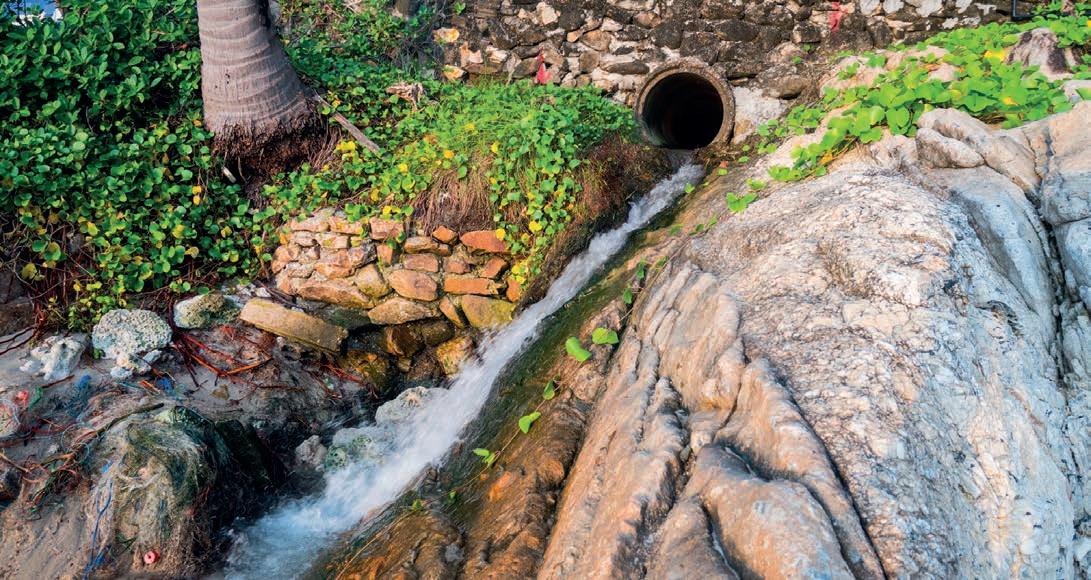
For more information, visit www. interflow.com.au
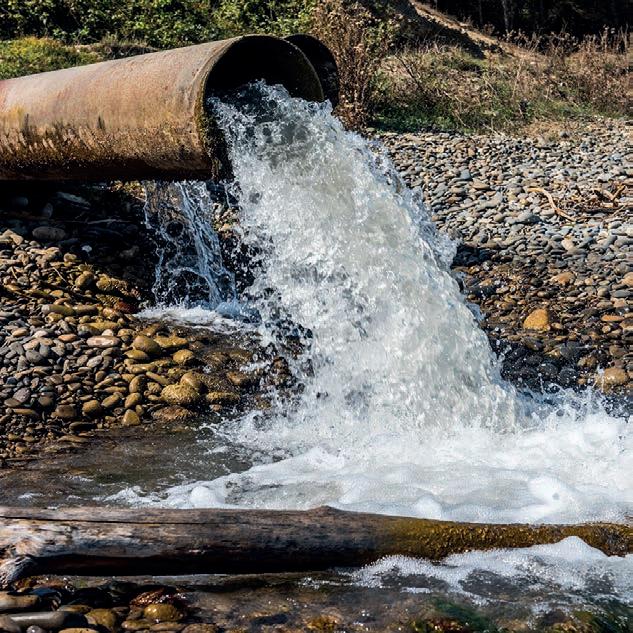
It’s hard to comprehend the vast network of plastic pipelines installed and in operation in Australia and around the world.
Most plastic pipes are buried and remain in service for more than 100 years. Today’s plastic pipeline systems are still in their first life cycle. They deliver essential everyday services and utilities to homes and communities. This includes providing drinking water, gas, and electricity to homes, protecting the network of cables that deliver internet and other services, irrigation systems essential for growing food and carrying away sewerage, rainwater, and stormwater, and protecting communities and the environment.
The Plastic Industry Pipe Association of Australia (PIPA) is the peak industry body representing manufacturers and suppliers of plastics pipe and fittings, plastics resin suppliers, plastic fabricators, pipeline installers, rubber seal ring manufacturers, and training and certification bodies.
“When you look at the three key principles to a circular economy –designing out waste and pollution, keeping products and material in use, and regenerating natural
systems, plastic pipe systems align with all three. You can see why they are the preferred choice to replace and upgrade other pipe materials worldwide,” said PIPA’s Executive General Manager, Cindy Bray.
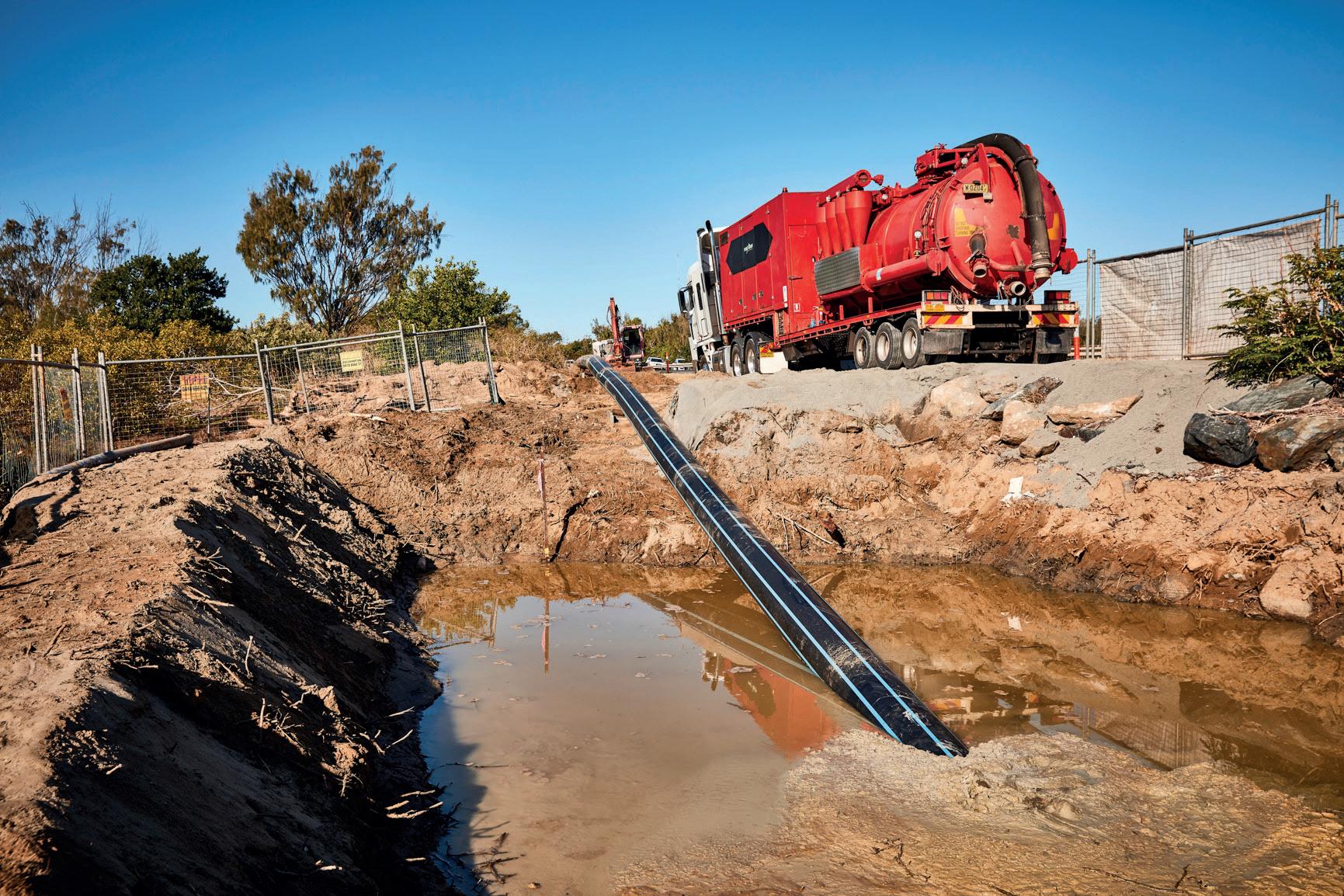
Plastic pipes are engineered products designed to last The plastic material used in manufacturing pipes is planned to be robust, reliable, and recyclable. They are intended and designed to last a long time. The engineered polymers used are stable materials, and these properties are suitable for a product such as pipes when a long-life expectancy is required.
“Some people may be surprised by the production plants for manufacturing plastic pipes are relatively simple,” she said. “No combustion or chemical reaction is required; therefore, no smoke or emissions are produced.”
The main inputs are plastic pellets or powder and electricity. Production equipment is electrically
powered, and heating is electric as temperatures are relatively low to melt the plastic. This results in a clean and enclosed process. Scrap or re-work material generated in the manufacturing process is re-used, designing out waste. Suitable post-consumer and preconsumer materials can be used to manufacture non-pressure plastic pipes.
It’s essential for pipes manufactured with recycled content to conform to the relevant Australian Product Standards, just as pipes manufactured from virgin materials do. Plastic pipes must be fit for purpose due to their role in society, regardless of their composition.
Part of the circular economy is to design a product that can remain functional without requiring excessive maintenance or repair when installed correctly under normal operation over its lifetime.
“For plastic pipes, it is intended that they can be installed and not require any maintenance or repair for decades, unlike other materials,” said Bray.
Plastic pipes withstand the forces
What role does plastic pipes play in peoples’ everyday lives?Preparing plastic pipes for installation.
they are subjected to. They do not corrode or crack, resist chemical attack, resist abrasion and maintain a smooth bore for easy fluid flow and better hydraulics. They are also designed not to leach secondary material into the fluid flow, which is important for drinking water applications. Plastic pipes are safe for the people and the planet.
Many studies have been conducted in Australia and around the world showing the long-term performance of plastic pipes in operation, showing no chemical degradation and the pipe’s integrity still intact. These studies can be found on the PIPA website.
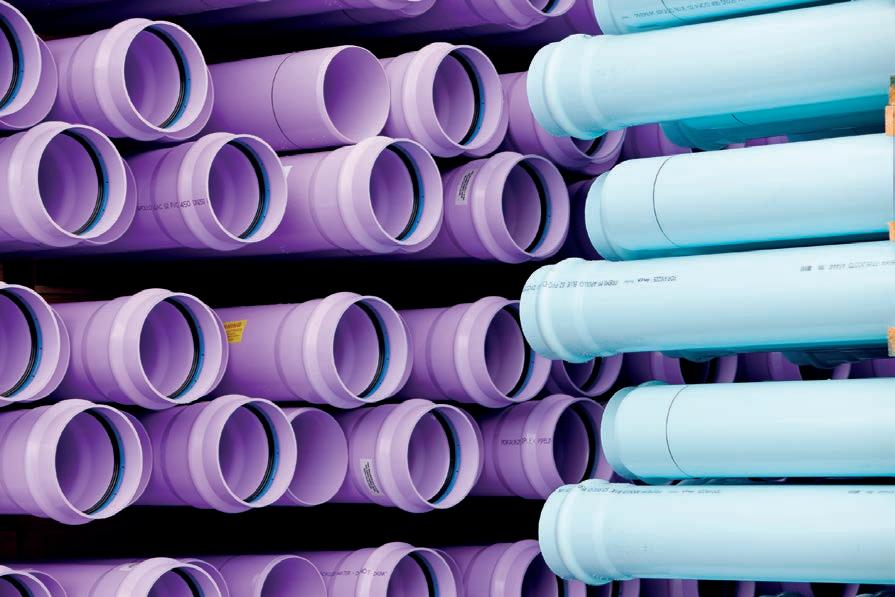
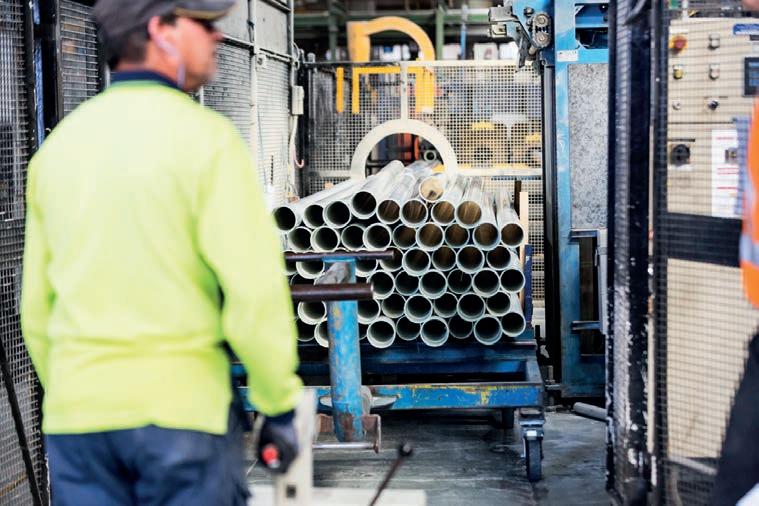
“Plastic pipes offer clear advantages regarding chemical resistance over other pipe options. They are not affected by soil environments that are highly corrosive to metal and concrete,” said Bray. “They are not affected by compounds that form in wastewater, such as acids that rapidly degrade iron and cement lines pipes, making them the ideal choice for long-term infrastructure. They also have the lowest overall failure rates in water infrastructure compared to cast iron, ductile iron, steel, and asbestos cement.”
The lighter weight of plastic pipes compared to other pipe materials can have advantages during transportation, including increased pipes per truckload and installation. For open trench installation, plant equipment is minimised compared to heavier pipe materials, which can increase lay rates and reduce CO2 emissions. The versatility of plastic pipe systems allows for the option for trenchless installation as well, particularly with polyethylene pipe. This allows for fewer disruptions during the installation or repair of existing pipelines allowing flexibility and cost-effective installation and lowing the impact
on the environment and community, according to Bray.
Plastic pipes’ long-term, leakfree integrity prevents water loss, protecting the health of sensitive waterways and minimising flood risk. As a leak-free system, they eliminate the effect of erosion around the system. Plastic pipes have the flexibility to cope with soil movements and subsidence and protect the natural pH of streams and estuarine environments, reducing the likelihood of algal blooms and fish kills.
As part of the industry’s commitment to sustainable practices, PIPA and its members aim to recycle the maximum amount of usable plastic pipe and other suitable materials into new plastic pipes. Due to the low volume of plastic pipes in the waste streams, PIPA and its members are taking practical steps to minimise the impact of plastic pollution. Working collaboratively with waste management companies, distributors
Different plastic pipes are perfect for different situations.
of products and specific clients’ plastic pipes at their end of useful life are collected for recycling. PIPA has also established a Plastics Pipes Recycling Program working with various partners across Australia to provide information and locations for end users to deliver their no longer needed pipes and fittings. With other industry stakeholders within the plumbing sector, PIPA has established education and pilot programs to increase awareness about the sustainability of plastic pipes and to develop behaviours of appropriate disposal of off-cuts.
“It is easy to see why plastic is the material choice for pipe and supports a circular economy in a closed-loop system,” said Bray.
“By using recourses responsibility through better design, we are working smarter. We’re committed. And we’re working towards creating a healthier environment and sustainable future.”
Plastic pipes are easy to install and chemically resist corrosion in most forms.
For more information on PIPA, visit their website www.pipa.com. au and visit their sustainability microsite https://pipa.com.au/oursustainability-story/
By gaining a deeper understanding of common corrosion patterns, operators of wastewater systems can choose the right surface coating to extend component life.
When components of wastewater systems corrode prematurely, the consequences can be costly. Operators may have to deal with unplanned stoppages, replace parts before the end of their reasonable lifespan, or pay to repair environmental damage caused by leaks and overflows.
Protective surface coatings for wastewater systems offer a costeffective solution to premature corrosion by extending the life of components and reducing the risk of failure. However, the variety of components and materials used in wastewater management and the broad spectrum of surface treatments available have made choosing an appropriate product difficult.
Understanding common corrosion types in wastewater systems is good for determining what coating is suitable. By learning more about the various corrosion mechanisms and the forces involved, operators can select a surface coating that addresses specific challenges, enhancing effectiveness.
Understanding types of corrosion on metal surfaces
It all comes down to electrochemistry when understanding the different types of corrosion and the reactions between metals and surfaces. An anodic reaction is one where metal is oxidised, releasing electrons into the metal. A cathodic reaction is one where electrons are removed from the metal.
Microbiological influenced corrosion (MIC) taking hold on metal and concrete.
Corrosion occurs when these two reactions occur in the same location on metals. Here are some types of corrosion that can occur on metal surfaces within wastewater treatment facilities.
Pitting Corrosion can occur on carbon steel and cast-iron alloys when the ferric oxide layer is disturbed. The covered areas remain cathodic while the exposed areas take on an anodic reaction, which eventually forms ‘pitting’ and worsens over time. Similar pitting corrosion can also happen with stainless steel, although this is due to variances in levels of oxygen and chloride.
Graphitic Corrosion is seen most when cast iron or ductile iron is buried in acidic soils or exposed to mildly acidic waters. In these conditions, the iron leaches out of the casting into the water or soil, leaving behind a weakened matrix of graphite and iron oxides.
Galvanic Corrosion is caused when two different metals of differing electromotive potential meet each other and a common electrolyte. The less noble metal becomes anodic and sacrifices itself to protect its more noble cathode. Treatment plant operators should look for any zinc galvanised surfaces in contact with unprotected carbon steel where this type of corrosion can occur.
Other types of corrosion that can affect concrete and metals
Microbiologically Influenced Corrosion (MIC) of metals and concrete can commonly occur in wastewater treatment collections and treatment facilities in environments with and without oxygen. The primary form of MIC in wastewater treatment is biogenic sulphide corrosion. A series of chemical reactions lead to the creation of gases which, in
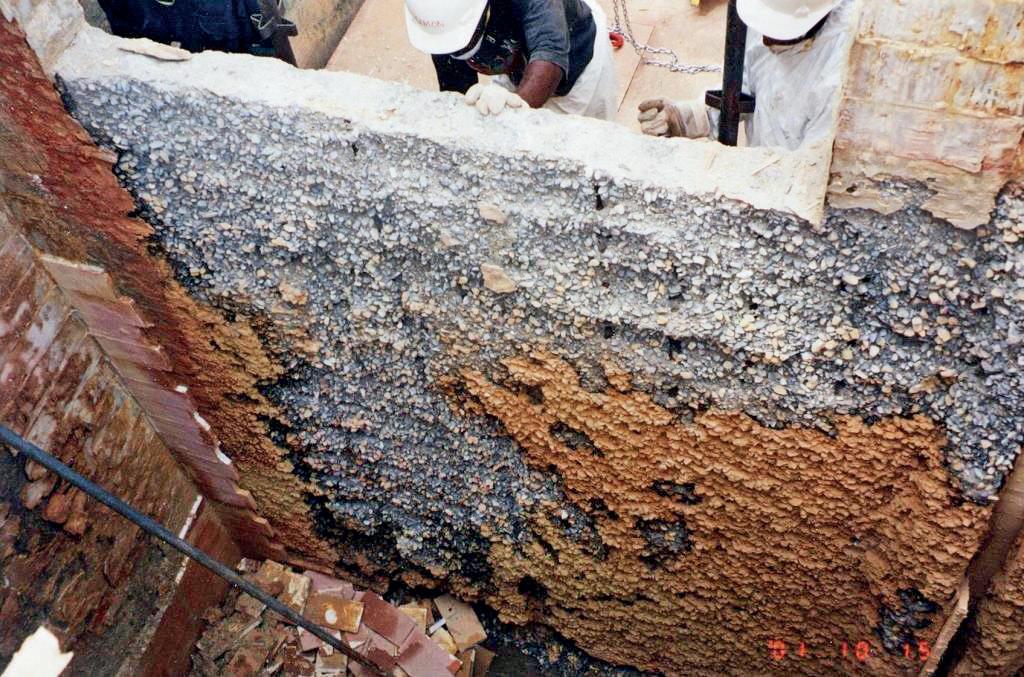
humid environments, form weak thiosulphuric and carbonic acid and a corrosive environment. The corrosive reactions can happen faster for exposed concrete substrates due to their alkaline nature.
Acid Attack on concrete appears like a MIC attack. However, this corrosion type is caused by process chemicals used in wastewater treatment encountering unprotected concrete. These are usually in and around containment and dose mixing stations.
Each type of corrosion can readily occur in wastewater treatment plants and facilities, so it is good to know what the types of environments are or what early corrosion damage can look like. By reacting quickly to damaged surfaces and areas, you can prevent or delay more significant damage from occurring.
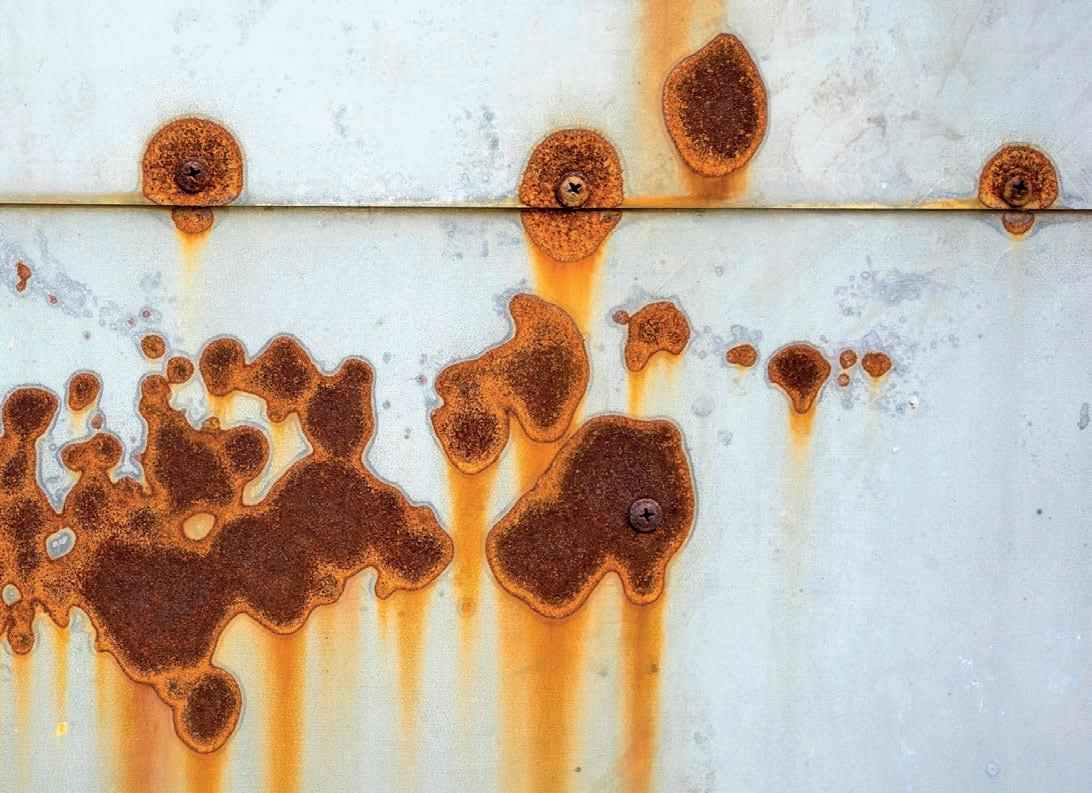
Making the right choice for surface coating
Understanding how corrosion occurs is essential when choosing a longlasting and effective surface coating. To be effective against pitting corrosion, a coating must have high tensile adhesion to resist under-film corrosion. It also needs high abrasion resistance to resist exposing regions that can become anodic. A suitable coating should have low permeability and be generally resistant to thermal and chemical exposure.
Similar conclusions can be drawn by examining problem areas such as graphitic corrosion, galvanic corrosion, microbiologically influenced corrosion (MIC) in metal and concrete, and acid attack in concrete. However, these will each have different tensile, adhesive and permeability properties.
The correct protective surface coating can extend the working life of components within wastewater systems. By understanding the
types of corrosion that parts are prone to, operators can avoid using inappropriate products and zero in on the suitable coating for each application. Coating experts at sealing solutions provider A.W. Company can provide further advice based on individual circumstances
Galvanic corrosion of aluminium can cause significant problems.
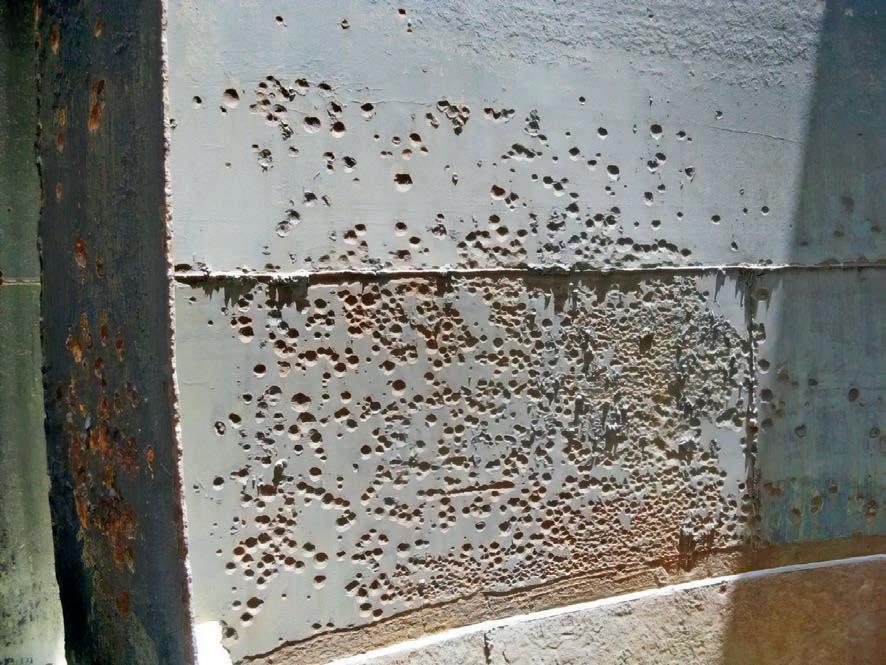
Pitting corrosion on reinforced concrete is
track record of enhancing critical industrial equipment and structures. Its products are engineered to protect metal and concrete surfaces from the damaging effects of abrasion, erosion, and chemical attack.
Iplex has commenced the construction of Stage 2 of the Haughton Pipeline Duplication — one of Queensland’s most significant water projects.
The Haughton Pipeline project is currently Townsville City Council’s number one infrastructure project. It will provide water security to Townsville and its surroundings for the next 50 years. Iplex has partnered with Townsville City Council and the Queensland State Government across the Haughton Pipeline project.
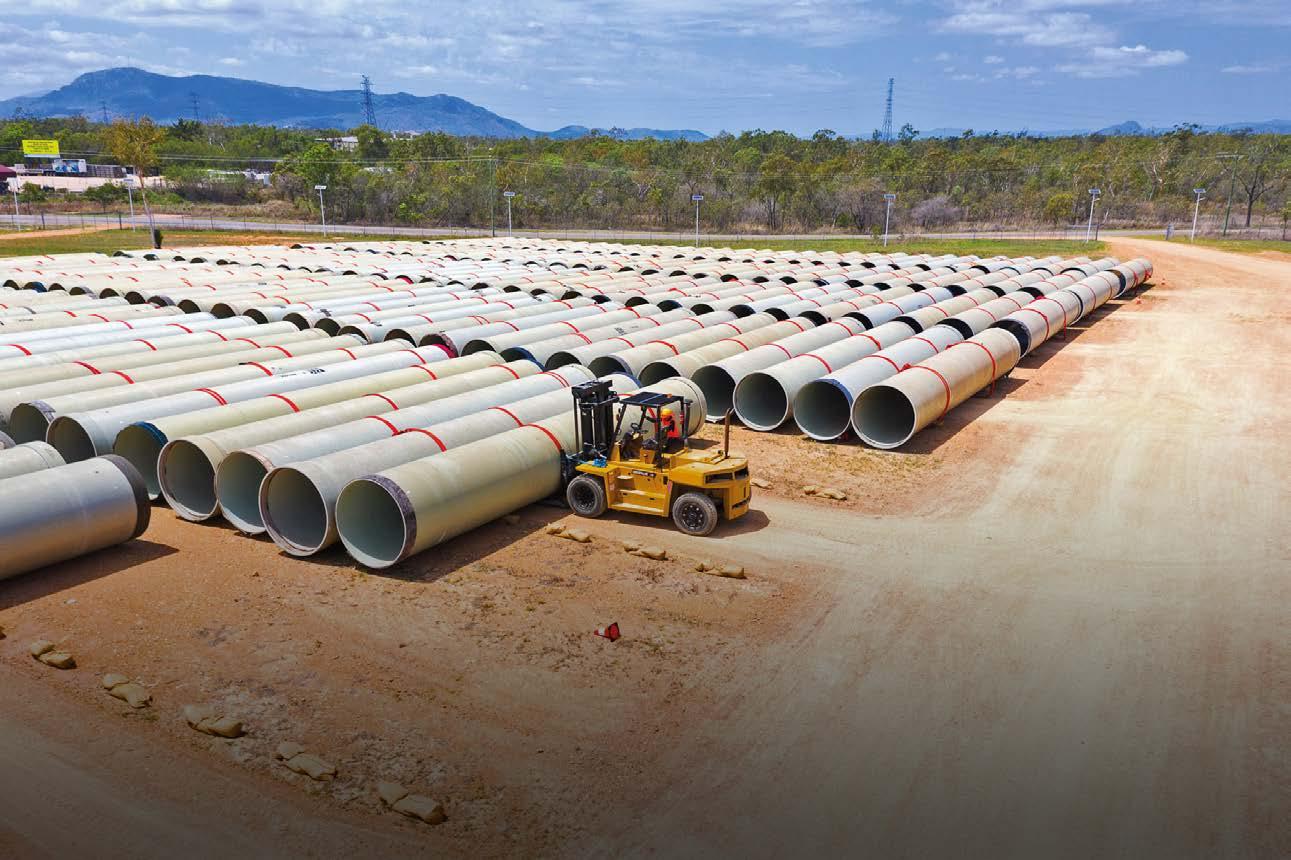
As part of Stage 2, the first batch of 1.8-metre diameter Glass Reinforced Polymer (GRP) pipes has arrived. Iplex Australia will deliver more than 24 kilometres of GRP pipes to complete Stage 2 of the project. The company will continue its long-term partnership with RPC Pipe Systems (RPC PS) for the Haughton Pipeline Project Stage 2.
This is the second major contract to be awarded to Iplex Australia, a subsidiary of Fletcher Building, as part of the Haughton Project, having also been awarded the contract for Stage 1 of the Pipeline in 2018.
Iplex General Manager, Paul Lavelle, was at the port to oversee the arrival
of the first shipment. He was joined by Ann-Maree Greaney (Townsville City Councillor), Les Walker (State Member for Mundingburra) and Aaron Harper (State Member for Thurwingowa).
Three more shipments will deliver the remaining pipe lengths. They will be installed across 28.5km of land, connecting Stage One of the Haughton Pipeline from the Ross River Dam to a new pump station next to the Burdekin River near Clare. When complete, the HPP will provide greater capacity and raw water into the Ross River Dam and augment or “top up” water levels during periods of low rainfall.
Lavelle said Iplex was pleased to continue its role as a chosen water infrastructure partner for the Queensland State Government.
“With the population of Townsville forecast to grow to 282,000 by 2041, a long-term focus on water security for the region is a must,” Lavelle said.
“We are proud to be playing a pivotal role in the development of North
Queensland and the upskilling of the Townsville workforce.”
Constructing the pipeline will deliver on the recommendations made by the Townsville Water Security Taskforce’s final report. It will enable the dam water levels to be managed and provide water security during drought. Once complete, more than 60km of 1.8m diameter pipeline will help to supply raw water from the Burdekin River to the Dam during prolonged drought. It will also deliver 273ML and, ultimately, 364ML of water to the dam daily to ensure residents have access to water.
Earlier this year, Iplex touched on the benefits of being chosen as the GRP supplier for Stage 1 of the $215 million project..
This project included duplicating an existing 36.5 km pipeline to provide a bulk water backup supply for the Burdekin Water Supply Scheme.
Iplex supplied DN1800 GRP pipes, with long radius bends, Air and Scours Valve Tees and specially engineered fittings to deliver 234ML of water per day into the Ross Dam.
The duplication enabled water to
GRP pipes ideal for Haughton Stage 2
Product Manager for Engineered Products at Iplex, Michael Lancuba, said the benefits of GRP are widely recognised.
“GRP is a robust and durable material offering designers a superior alternative to conventional materials. GRP composite technology allows lightweight pipes to be produced with high pressure and stiffness classes for pressure and non-pressure applications.
Compared to metal pipes, GRP is lighter, so you can get away with lighter lifting equipment saving time and money during installation,” said Lancuba.
“But perhaps the most appealing benefit is GRP’s resistance to chemical attack. It can be installed in naturally occurring ground conditions such as acid sulphate soils or saline ground conditions that can be otherwise detrimental to unprotected metal and concrete. This gives asset owners peace of mind over these significant investments.”
A customised solution for a custom project
Customised options, such as tailored pipe dimensions; pipe stiffness; pipe lengths; and joint types, further demonstrate the material’s versatility as a pipeline solution for installations under challenging environments

$274 million, with $195 million of this contributed by the Queensland Government..
André Nunn, Technical Sales Engineer for Iplex Australia, said winning Stage 2 of the project will support 30 direct and indirect jobs in Townsville required to assist with the project.
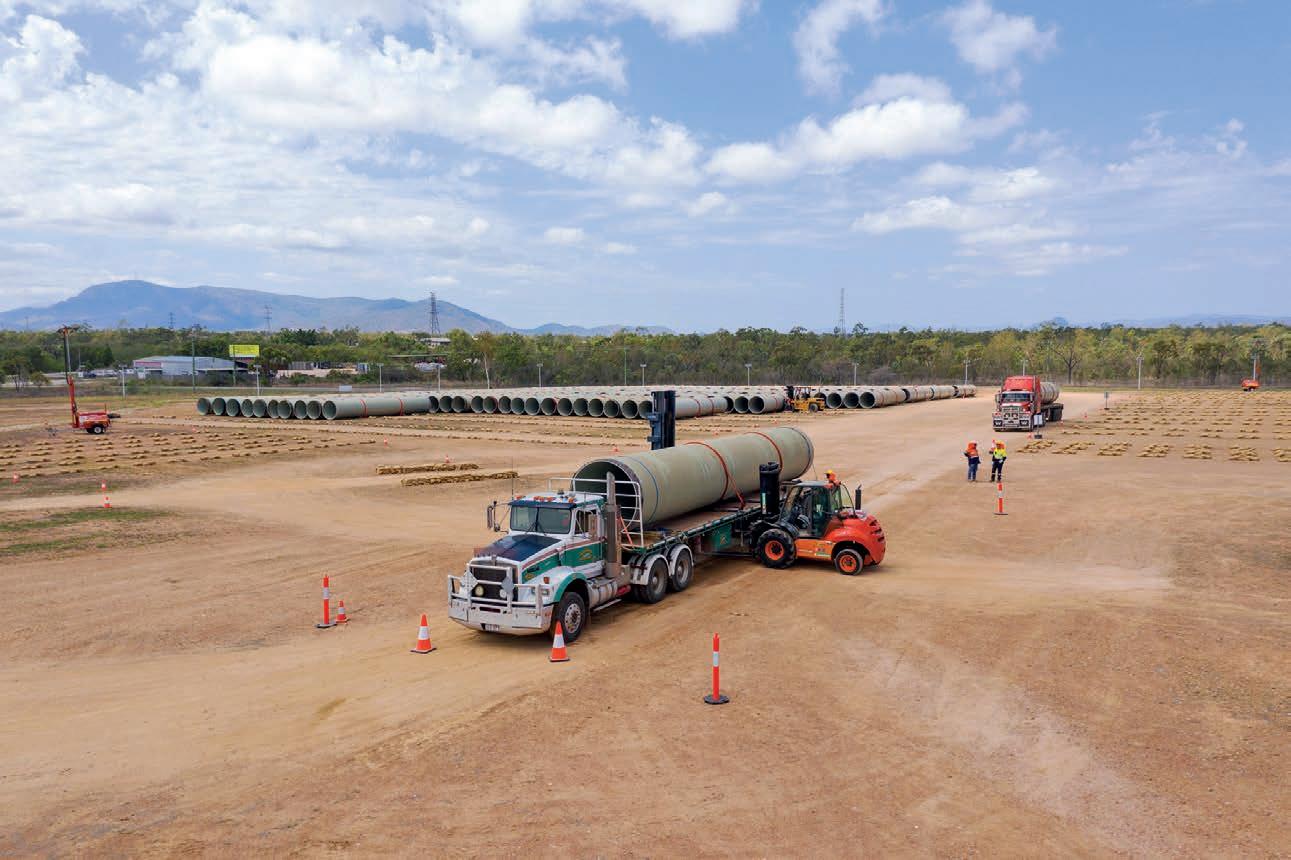
It is vital for lengths of GRP to be lowered carefully into position on site.
capabilities. With over 34 years of GRP experience, Iplex is proud to have supplied thousands of projects spanning thousands of kilometres for both open trench and jacking applications across Australia.”
For more information, visit www.iplex.com.au
Keep safe with the K-Magnaplug
Kinder Australia has the K-Magnaplug, a highly visible product that is optimal for emergency responses and spill containment.
Steel is a conventional and dependable material for equipment. That equipment might be silos, chutes, bins, and hoppers. Steel can also be subject to abrasion, allowing holes to form over time.
“In a tank, it might be corrosion. There might be wear on an elbow in a pipe or pressure when the pipe changes direction,” said Sean Kinder, Business Development Manager at Kinder Australia. “These situations all lead to accelerated wear and potential spills.”
Operators find that valuable products may be lost in spillage. This is especially concerning if the material is hazardous to persons or the environment. Repairs must be performed quickly and effectively to plug leaks.
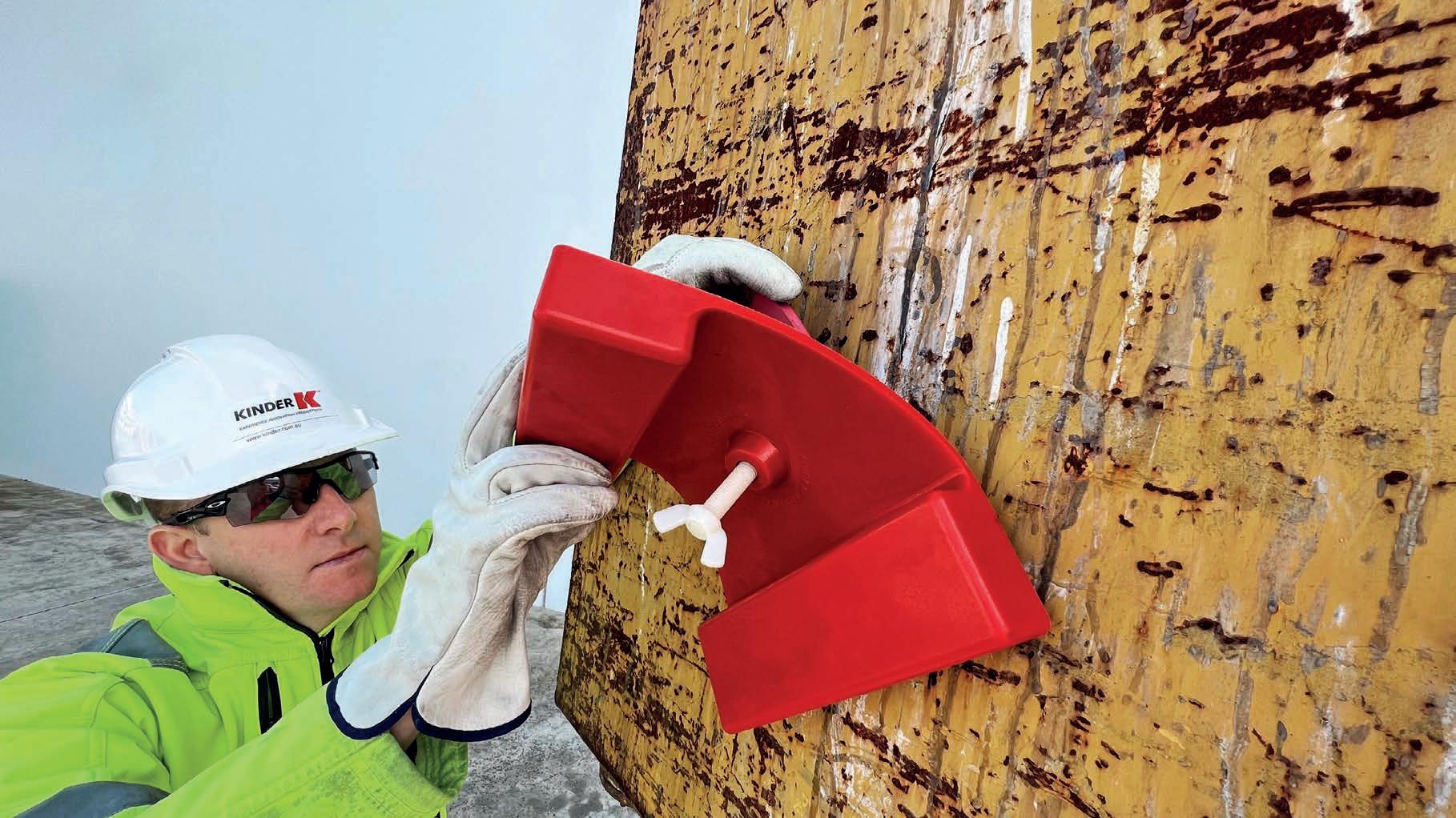
The K-Magnaplug is a reusable magnetically fastened polymer patch. It provides a cost-effective and instant repair method for steel equipment. This highly visible product is a quick and secure means of repairing holes in steel pipes, elbows, silos, chutes, bins, hoppers, and other steel equipment. It is suitable for emergency response and spill containment.
Using a rubber pad on the inside against the area to be sealed, the K-Magnaplug provides a quick and efficient solution to leaks. It allows users to maintain their production schedules until a scheduled permanent repair date. The wear pads can support whatever medium is being sealed.
The rubber pad provide a quick and efficient solution for leaks on metal substances.
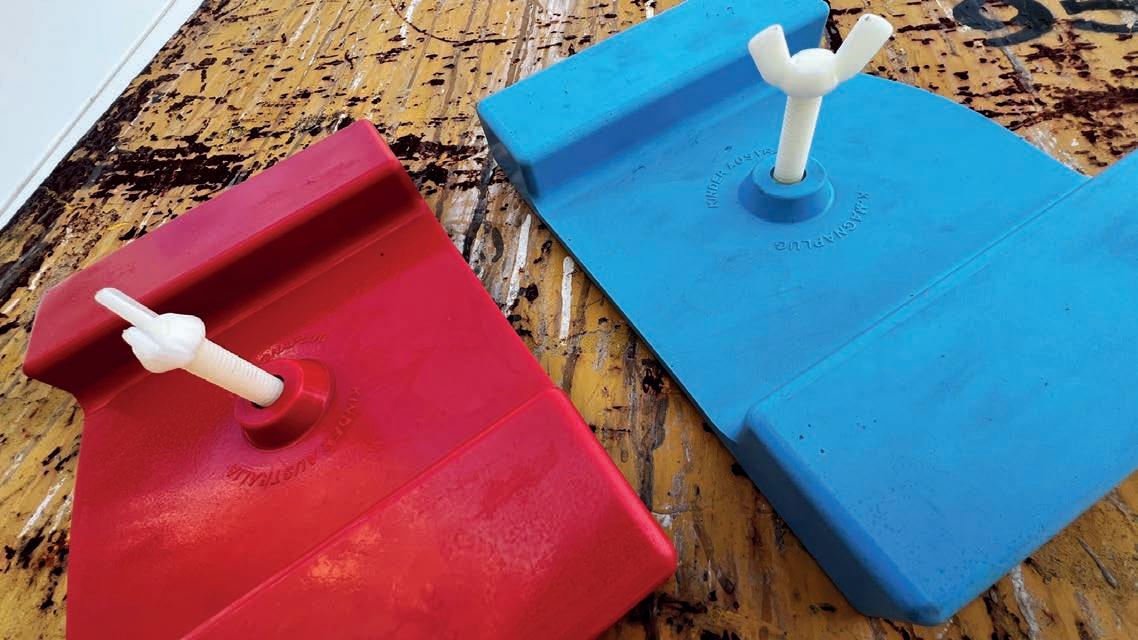
The K-Magnaplug is a reusable magnetically fastened polymer patch. It is a compact solution that covers holes in steel equipment instantly. The solution is safe and recommended for emergencies. It combines tough and powerful magnetic technology with a high wear-resistant engineered polymer skin. FRAS (Fire Resistant Anti Static) is available if required.
They are easy to install and apply to any steel surface. There is no need for tools to use the K-Magnaplug, as it simply snaps on and off as needed. The immediate application of the K-Magnaplug ensures that minimal production disruption is experienced, and corrective maintenance can be planned efficiently and costeffectively.
and efficient solution to leaks, allowing the user to replace as required to keep production going until a scheduled permanent repair date.
It uses a rubber pad on the inside against the area to be sealed. New wear pads are available to resist any medium requiring sealing. No tools or specialised training is necessary for K-Magnaplug as it simply “snaps” on and off.
“With the K-Magnaplug, you don’t have to wait – you just apply the magnetic patch,” Kinder said. “It means you don’t need to use straps, bolts, or welding to secure the patch. It’s much faster to apply.”
Any site with steel fittings and equipment will have peace of mind with K-Magnaplug ready. You can be assured that clean-up and
downtime could be reduced while keeping operators safe.
With its high chemical resistance, flexibility and magnetic strength, the seal remains locked, allowing a site to continue operations as usual.
Installation is a key advantage of the K-Magnaplug.

While the K-Magnaplug is not advised as a permanent solution, the high magnetic pressure allows it to withstand regular operations.
By preventing hazardous and production-impacting leakages, the K-Magnaplug provides a safer and more immediate solution to keep sites up and running.
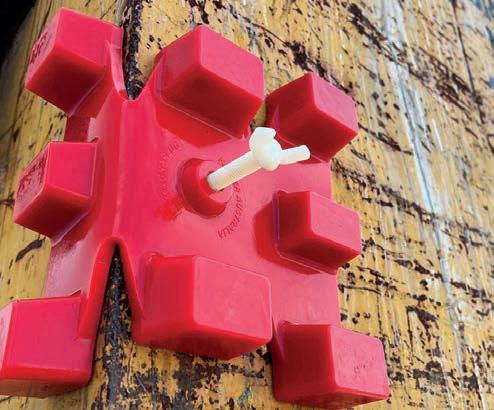
“Due to the high pressures the K-Magnaplug can withstand, it means that potentially the piece of equipment can remain online and operational,” Kinder said. “It doesn’t necessarily mean, in all cases, the site needs to be shut down in the
The K-Magnaplug is easy to install.
The K-Magnaplug is flexible.
short term. Most people would put it on until they can schedule more permanent repairs to the pipe or tank structures.”
For more information, visit kinder.com.au
VicWater has always been committed to providing members with opportunities to come together for thought leadership, professional development, and networking events. With that in mind, it held an Audit and Risk Symposium in early September to cover governance, risk, and assurance practices.
THE VICWATER AUDIT and Risk Symposium took place in early September at the offices of Pitcher Partners in Melbourne. With a full day’s program, attendees had an opportunity to learn from industry experts. The program was also streamed live for those who could not attend.
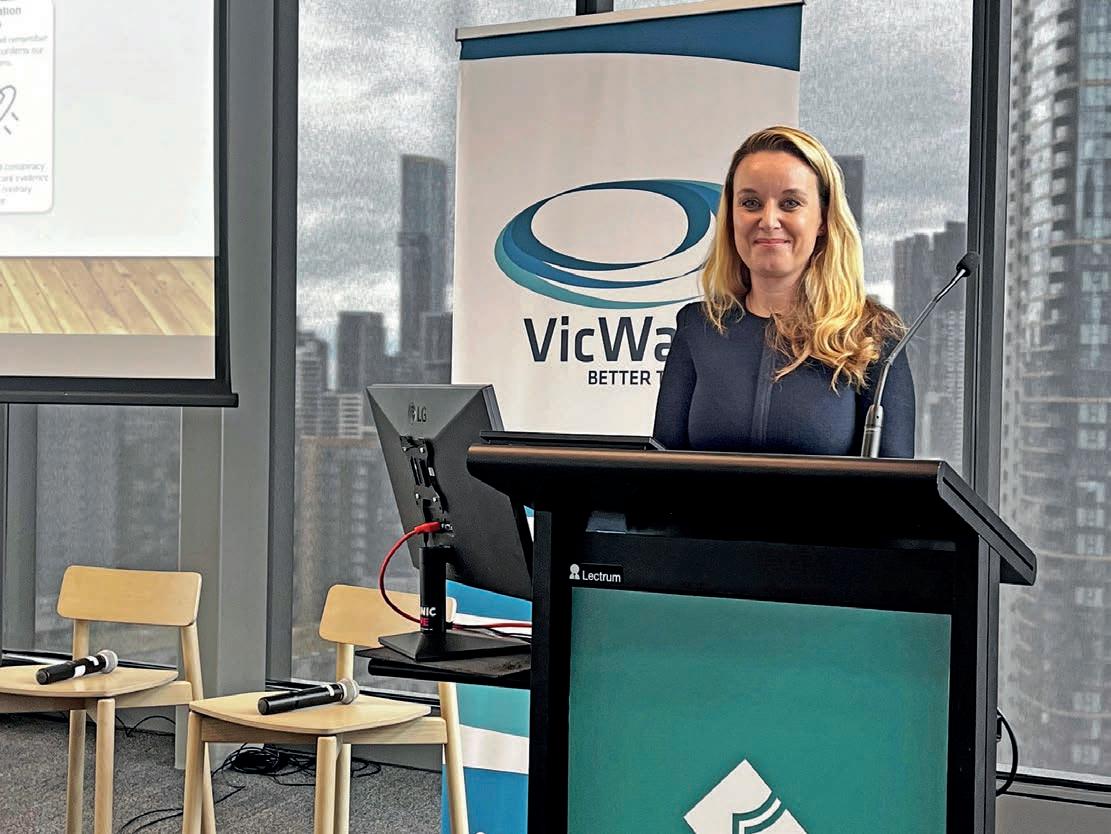
Keynote speaker – Clare Payne Clare Payne is a leading voice on ethics and trust. She has written two books, Matter of Trust – The Practice of Ethics and One – Valuing the Single Life.
of Melbourne. Before the global financial crisis, Clare’s paper, Ethics or Bust, was awarded the inaugural Ethics & Trust in Finance Prize by the Observatoire de la Finance, Geneva. She then founded The Banking and Finance Oath, a Hippocratic-type oath for those working in banking and finance.
In her keynote speech, Payne spoke about how the water industry is highly regulated, but it is also important to pay attention to community expectations. Community expectations are vital to understanding how companies
#MeToo movement, to areas that are legal but not right, such as the findings from the banking royal commission and the dramatic price hike of anti-malarial and antiparasitic drug Daraprim by Martin Shkreli.
Another area she focused on was the role of the environmental, social and governance (ESG) funds in shifting behaviours in financial markets. Payne also pointed out how ethical goalposts are moving all the time.
One of the biggest risks companies face today is losing their social licence to operate. This is decided by the public, with superannuation funds playing a more prominent role in financial markets. Losing the social licence to operate can result in losing market, reputational value, stakeholder disapproval, more reviews and regulations.
Payne spoke about the Edelman Net Trust Score, where its research has distilled everything down to one question: to what extent do you trust the organisation or person to do what is right? It is human nature to trust, but Payne pointed out that we have been taught not to trust people over time. Distrust has become the default through the teaching of stranger danger. Fiftyfive per cent of Australians believe that distrust is the norm. That loss of trust is across almost every level of society, while non-governmental organisations (NGOs) are seen as
Payne pointed out that research has shown 188 known cognitive biases. She recognised that we do not know all those biases, nor do people realise they all exist. However, people should acknowledge that biases exist and their preferences
impact them. Understanding those biases is key to working better with your organisation, stakeholders, and customers.
After a discussion of ethical dilemmas, Payne looked at testing decisions. She recommended three different moral tests. The first is the sunlight test, which encourages people to ask if they want to see a specific decision in the public domain. The second is the respected person test, which asks if a person you respect would decide this. The final test is the other person’s shoe test. In its simplest form, it asks the questioner to put themselves in another person’s shoes to see if it is the sort of decision that would support their lives.
The first panel session of the day focused on current and future workforce risks and challenges facing the water sector in Victoria.
With low unemployment rates, a highly competitive job market and the post-pandemic ‘great resignation’ phenomenon, attracting and retaining talent is an increasing challenge for the Victorian water sector, particularly in executive roles and corporate areas such as IT and finance. There are also serious skills shortages and training constraints for technical and specialist positions in traditional water operations and emerging business areas like energy and emissions. Added to all this is the need to prioritise the health, safety and well-being of the workforce while maintaining essential service provision and productivity.
Goulburn Valley Water General Manager of People and Customers Christina Bassani facilitated the panel. She set the scene by explaining that staff turnover in
water corporations has doubled from the pre-pandemic average of 8-10 per cent to 16-20 per cent.
ASPL Group CEO Kris Grant shared her insights into how businesses should focus on retention and creating internal talent pipelines by making workplaces more diverse and inclusive and providing better learning and development opportunities.
Southern Rural Water Managing Director Cameron FitzGerald talked about how the water sector can work together to promote our collective employee value proposition around positive purpose and community impact.
North East Water Executive Operations John Day raised awareness of the current lack of training providers nationally for water and wastewater operators and the significant risks that this poses for water corporations in carrying out their core functions.
The Audit and Risk Symposium closed with a panel session facilitated by Rob McKie of Pitcher Partners on best practice cyber governance, roles and responsibilities.
The threat of cyber-attacks is real and growing. Water corporations carry significant risk concerning both their IT and OT environments and a successful attack on water assets could have catastrophic consequences for public health
(L to R) John Day (North East Water), Cameron Fitzgerald (Southern Rural Water), Kris Grant (ASPL), Christine Bassani (Goulburn Valley Water).
and safety. With increasing cyber risk comes increasing regulatory oversight and management accountability, and boards and executives are concerned to know that their cyber risk program is adequate and that their organisation will be able to contain, respond and recover from a cyber-attack.
Victorian Government Chief Information Security Officer (CISO) John O’Driscoll and acting water sector CISO Anafrid Bennet provided advice about how water corporations can uplift their cyber knowledge and capability to embed cyber within their risk management framework.
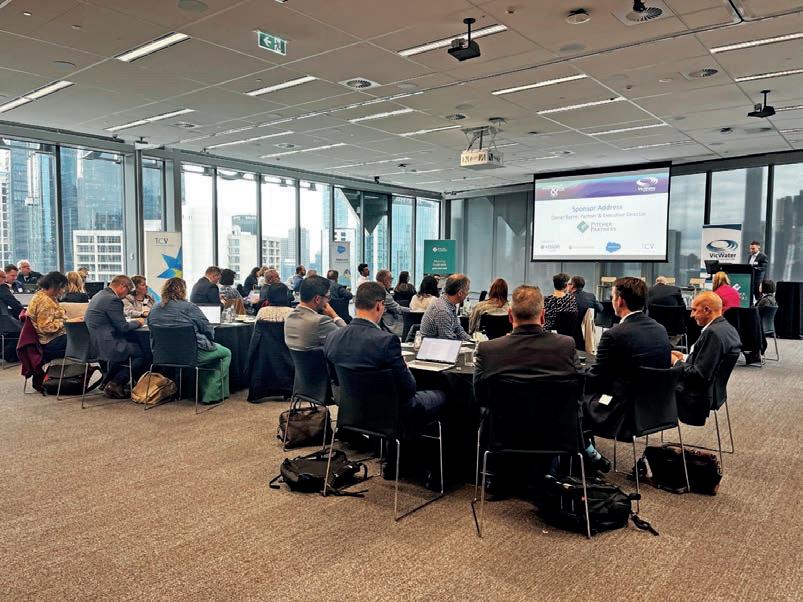
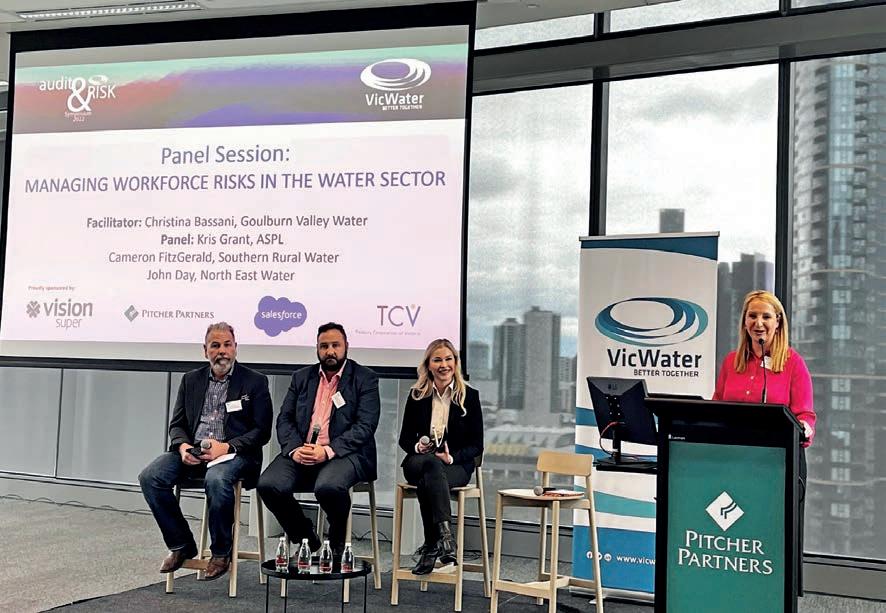
The Audit and
Robert Gregory, Partner at
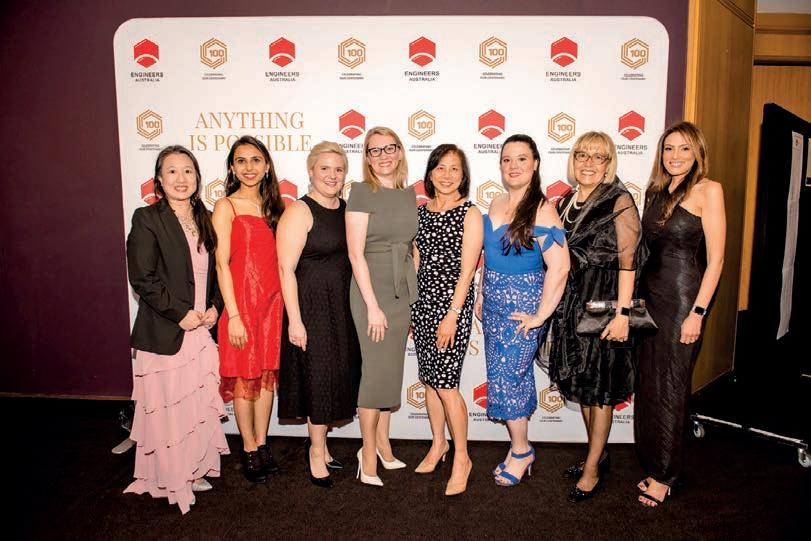
When people think about engineers, they often think of men crunching numbers or wearing hi-vis. However, they find creative solutions to challenging problems, and Zhenya Pavlinova is working on getting and keeping more women in the sector.
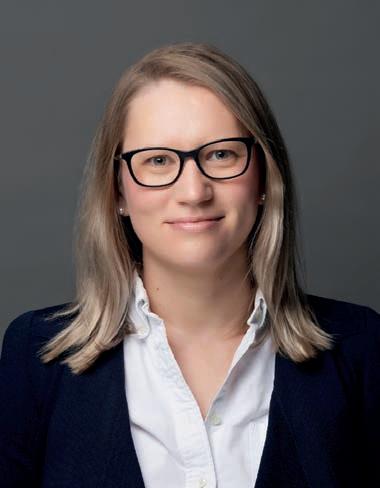
ZHENYA PAVLINOVA IS a highly regarded engineer at multinational technical professional services firm GHD and plays a vital role within Engineers Australia. She is the chair of the National Committee for Women in Engineering (NCWiE) within Engineers Australia.
In terms of her path to becoming an engineer, Pavlinova admits that she was a massive fan of Lego as a child. The opportunity to put things together was possibly the start of her passion for engineering.
“I think my dad was a big kid and used to buy Lego kits. We would spend hours putting them together, and that was fun,” said Pavlinova. “I also remember tinkering with things and trying to pull things apart during school holidays.”
Her work as an engineer
Pavlinova is a firm advocate for engineering being a creative career path. There needs to be more understanding of what engineers do.
“I think that if you were to walk up to a person on the street and ask them what an engineer does, not many would know. Many would probably guess they spend most of their time crunching numbers in an office or wearing hi-vis and a helmet. There is so much more to a career in engineering,” said Pavlinova.
Regarding her career path, Pavlinova is currently the Senior Engineer on the Dams team at GHD. She tends to go to projects where she can learn or try something new.
(NCWIE).
Some members of the National Committee for Women in Engineering (NCWIE).
Who are Engineers Australia?
Engineers Australia is the peak body for the engineering profession in Australia. The organisation was founded in 1919 as the Institution of Engineers Australia. With approximately 115,000 individual members, it is also the voice of engineers.
For more than 100 years, the work of Engineers Australia and its members has underpinned the progress of Australia. Its mission and vision for the future is to continue to advance the science and practice of engineering to benefit the community.
The National Committee for Women in Engineering (NCWIE) is an Engineers Australia community group. It aims to make engineering more inclusive by valuing, supporting, and celebrating the contributions of female engineers.
How does Engineers Australia have an impact on the water industry?
Engineers Australia is committed to working in a way that ensures the
long-term survival of life on earth fairly and equitably. Its Sustainability Policy covers the principles, guidelines and plans it will work towards for the next few years.
In the eyes of Pavlinova, a lot of work is done in the background regarding policy and dealing with different levels of government.
“We also write several think pieces that promote what we are trying to achieve. On a day-to-day basis, we highlight the projects we are working on through our Continuing Professional Development (CPD) program. It is an excellent opportunity for our members to get together and have a robust discussion,” said Pavlinova.
As the Chair of NCWIE, Pavlinova works hard with other committee members to support and celebrate women in engineering. She believes that while there has been growth in the number of women in the field, it has been slow.
“The needle is pretty slow to shift,” said Pavlinova. “In the past ten years, it has shifted by about ten per cent. It’s coming from a low base. On the other hand, the culture of engineering is improving.”
While there have been bumps, companies are getting better at including women in their discussions. Pavlinova acknowledged the importance of female engineers in finding mentors and role models.
Encouraging students to take up STEM subjects is one area that Pavlinova and Engineers Australia is keen to pursue. Engineers Australia is pushing hard to encourage students to take up engineering careers, given current and future opportunities.
“There are a lot of great programs
already out there that encourage children to take up engineering as a career path. It’s a hot market right now, and there’s enormous potential for them in the future,” said Pavlinova.
She believes in science communication to encourage children to study STEM subjects.
Pavlinova takes part in a CSIRO project called STEM Professionals in Schools. The program pairs STEM professionals with teachers to bring STEM subjects to life in Australian classrooms.
“I would regularly catch up with the teachers during school holidays to see what I could teach and how I could fit into their curriculum,” she said. “It can be hard to fit into their curriculum and what the children have already learned. One topic I had was space, and my challenge was to work out what to teach the children and show them what engineers do.”
Of note is Young Engineers
Australia’s role in connecting young engineers with mentors. Pavlinova spoke about the roles that each state branch plays in these connections.
“I’m based in Queensland, and I know that Women in Engineering is looking to run a mentoring event with a sustainability focus,” said Pavlinova. “The Queensland branch has been very active in setting up mentor-mentee relationships, which has been fantastic.”
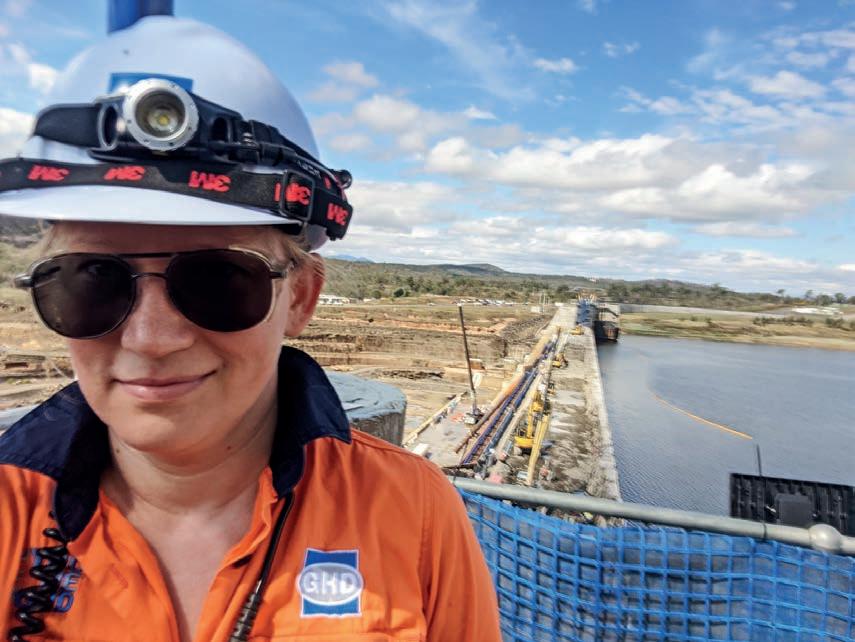
Another group that Pavlinova pointed to is the College of
Pavlinova enjoying her office with a view.
It is one of nine colleges responsible for setting professional standards, providing CPD, hosting regular conferences, and publishing papers. CLM represents engineers who want to become managers or are managers.
Other organisations that support female engineers include Women in Construction, the National Association of Women in Construction (Australia), Women in STEMM Australia, Women in Technology, and Women in Manufacturing.
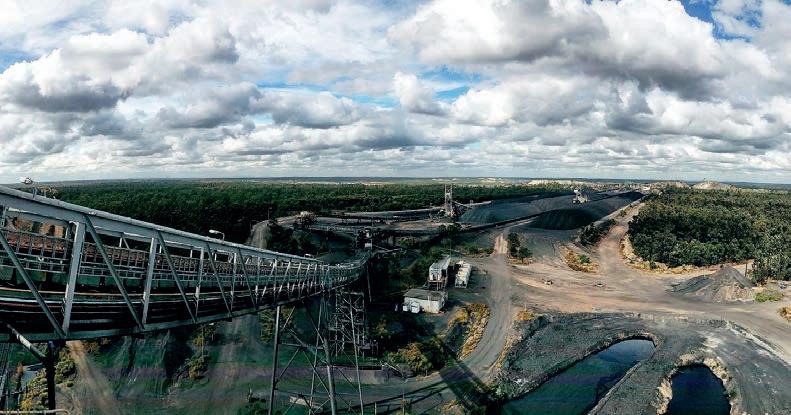
Working in Mackay on one of many coal mines.
“There are many different groups out there running mentoring programs. Ideally, you want to be connected to someone within your field. It’s much easier to make the right connections through a mentor in the same field as yourself,” said Pavlinova.
UNSW Professor Stuart Khan has clarified that the new Australian government needs to focus on six specific areas to fix Australia’s big water problem. Chris Edwards spoke to him to find out why.
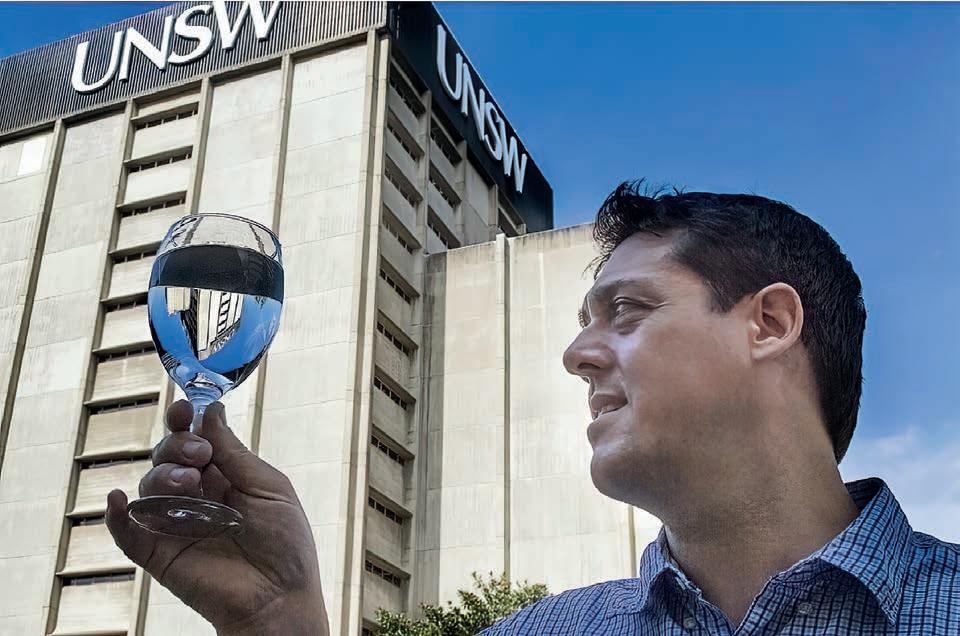
PROFESSOR STUART KHAN is from UNSW’s School of Civil and Environmental Engineering. He has always been interested in water and its use in Australia. Khan grew up in Coffs Harbour, during which time there was a proposal to build an ocean outfall sewage scheme at the Look at Me Now Headland at Emerald Beach. The original plan was to pump secondary treated sewage into the ocean.
”After weeks of protests, the council abandoned the strategy and looked for an alternative. The discussion centred around whether you can recycle or reuse that water,” said Khan.
It led to a new approach by Coffs Harbour Council. They developed a new strategy in which sewage would be treated. Effluent would then be sent inland to farmers as fertiliser, supporting a multi-million-dollar blueberry industry.
Khan acknowledged that he may not have known what he was talking about at the time but the importance of looking after water stuck with him.
“I became interested in water treatment. When I was at university, my initial focus was on chemistry. I became interested in how water treatment processes remove chemical contaminants. I drifted into issues around pharmaceuticals
and hormones, looking at how well advanced and conventional water treatment processes effectively remove pharmaceuticals,” said Khan.
What is the state of water and wastewater treatment in Australia?
Australia has some old wastewater treatment plants, primarily in many country towns in New South Wales and Queensland. Environmental protection agencies established in the 1980s and 1990s started the focus on nitrogen discharge limits. During this time, the wastewater was used to irrigate local golf courses or reused for irrigation. However, the Millennium Drought saw a shift toward recycling water as an alternative supply.
“One of the most effective ways to recycle water is to produce purified recycled water for drinking. That’s a huge step change in quality control, treatment, and risk management issues. There aren’t too many places in Australia that are at that point yet,” said Khan
A challenge for the water industry is adjusting its management strategies to a constantly changing climate. Khan acknowledged that this is an enormous challenge.
“In Australia, where we’ve identified that we’re going to change the way that we manage water, we’re going to do it in a more ecologically sustainable way, work out what’s the right balance of water that goes to productive uses, as well as water that also has great value, remaining in the environment,” said Khan.
Secure the water interests of Indigenous people
Khan has been engaging with members of the remote Indigenous community of Borroloola, a community that lies on the
traditional lands of the Yanyuwa people. It sits on the McArthur River, which features a long tidal estuary to Borroloola. Also, on the McArthur River is a lead and zinc mine.
“Some people support the mine because it provides jobs,” said Khan. “Others oppose the mine because they want good quality water. A fishing ban is now in place because of the high levels of lead in the water. However, there are differing views about where the lead has come from, so the blame is pointed in multiple directions.”
Reform urban water management
Khan highlighted the importance of the National Water Initiative. It required the agreement of the Commonwealth Government and all the states and territories because of the Constitution.
“There are many things that towns and cities could be doing better, one of which is climate resilience,” he said. “We know we are experiencing more frequent and intense extreme weather events. Climate scientists have been predicting that we will have more extreme weather events like droughts, floods, bushfires, and cyclones for decades. Therefore, we must ensure that our water supply systems can continue delivering safe drinking water throughout those events.”
One of the significant challenges facing the Murray Darling Basin is having all the water resource plans completed and accredited. New South Wales was late with almost all of its plans, which means the Commonwealth Government may be obliged to step in and buy back water to make the legislated savings.
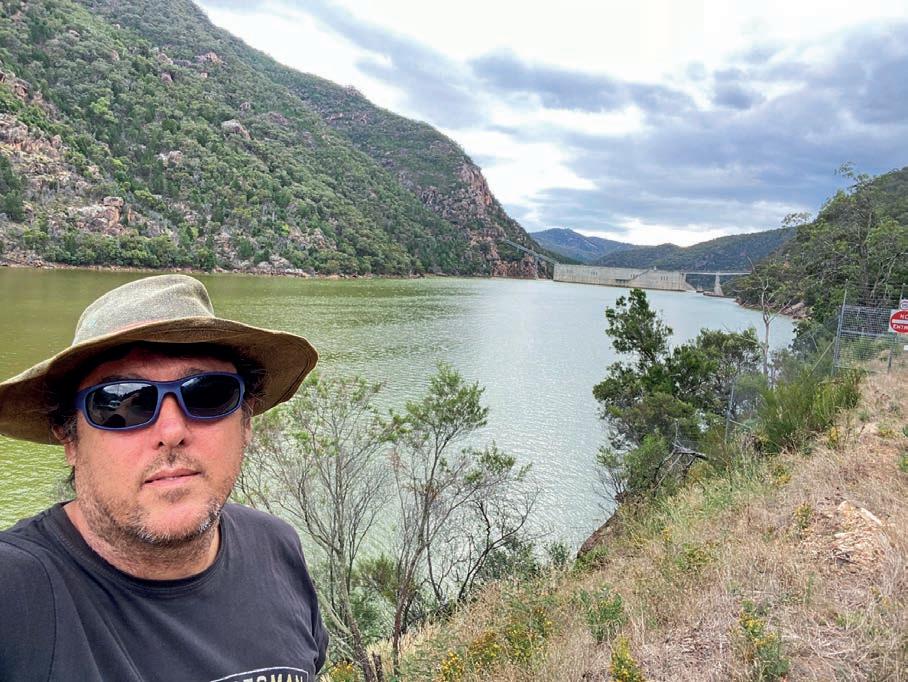
“We must finalise all those water resource plans in New South Wales. It is a slow process, which involves
preparing drafts of water resource plans, sending them off to the Basin Authority, having them reviewed, and then sending them back. It does take time, but ultimately, NSW is behind schedule.”
With the Murray Darling Basin Plan requiring all the legislated water to be recovered by June 2024, there is a need for a secondary review in 2025. Khan noted that this review should be done to ask questions about whether enough has been done, what more can be achieved, and what should be done differently.
“While I would not pre-empt the answers from the review in 2025, I think that new insights, understandings, and appreciations for climate change need to be key parts of that discussion. There will be less water available and more recovery. We will need to think about how we’re going to respond to this sustainably,” said Khan
Khan is not convinced that the existence of water markets is fundamentally a cause of many of the problems people face in the Murray Darling Basin. When the ACCC investigated, its conclusion was not that there are fundamental problems with water markets but that there are issues with some aspects.
“I think that need for reform is probably a little less intense than many think should happen. It’s about
improving and managing the market rather than outright abolishing it,” said Khan.
In the eyes of Khan, a significant change recently is the growing community acceptance of water recycling. The conscious decision to reduce water removed from the environment reflects an opportunity to make better use of the water resources the country has available to it.
“One thing I have noticed is the observable social change towards wanting to protect water quality in rivers. There are active campaigns and state government initiatives to improve water quality in the Parramatta and Cooks Rivers. The goal is to make both rivers swimmable for the first time in decades, and the Parramatta River could have swimmable locations by 2025,” said Khan.
Section 100 of the Australian Constitution states: The Commonwealth shall not, by any law or regulation of trade or commerce, abridge the right of a State or of the residents therein to the reasonable use of the water or rivers for conservation or irrigation.
To finish each issue, we aim to look at the lighter side of water and waterrelated issues. If you’ve seen an amusing story, let us know so we can consider it for the next issue.
Keep coffee in your mug… by drinking out of a wine glass? While we at prefer our coffee cold and with ice cubes in it, we know plenty of our colleagues love nothing more than a hot mug of coffee. However, we know how difficult it is to keep the beverage in a mug when moving from the kitchen to our desks.
In trawling the internet, we discovered that a high school student from South Korea studied this back in 2016 and suggested that one of the best solutions is drinking coffee from a wine glass. This resulted in him winning an Ig Nobel prize. The Ig Nobel Prizes are satirical prizes awarded annually since 1981 to celebrate unusual or trivial achievements in scientific research. It aims to honour achievements that first make people laugh and then make them think.
In fairness to the student, Jiwon Han was studying the motion of coffee using oscillators to simulate the action of walking. He also attached an accelerometer to the top of the mug and walked around to measure the movement of the cup.
Technically, the average coffee cup’s shape is partly at fault. It will make coffee splash around far more than a wine glass. Hence, drinking coffee from a wine glass is a better way to keep all the coffee from spilling.

Han also found that walking backward is an effective technique for decreasing the movement of liquid in the cup. He did acknowledge that it increases “the chances of tripping on a stone or crashing into a passing-by colleague who may also be walking backward”. Office-friendly solutions include holding the cup from the rim, drinking coffee with foam on the top, or having a lid on the top of your coffee. Han said in a TED talk that there are applications in other areas, like keeping oil in fuel tanks.
As a fan of Dungeons and Dragons, one place my characters generally avoid going is the Plane of Water. It has been described as an ocean without a surface. It is one of the four elemental planes (along with Fire, Air, and Earth).
Drinking coffee out of a wine glass - the safest way to transport fluids in the office.
The Plane of Elemental Water had uniform pressure in all directions. It felt like being several feet below the surface of a typical body of water in a Prime Material Plane. It is illuminated with the same soft light of that depth.
The salinity of the water varied depending on proximity to the Negative Energy plane. It tastes of pure salt at the boundary with the quasi-elemental Plane of Salt. It becomes briny as someone moves away and is pure and fresh in the middle.
The water gets warmer and more agitated as one approaches the quasi-elemental Plane of Steam. Pockets of the other elements could be found here, but travellers that required air to breathe needed to make other arrangements.
Plenty of creatures have made their lives within the Plane of Water, with water elementals and water weirds thought to be native to the plane. Among the most feared creatures in the plane are the aboleth, krakens and eyes of the deep (sometimes known as seaholders).
At
SUEZ – your trusted partner for circular solutions in water


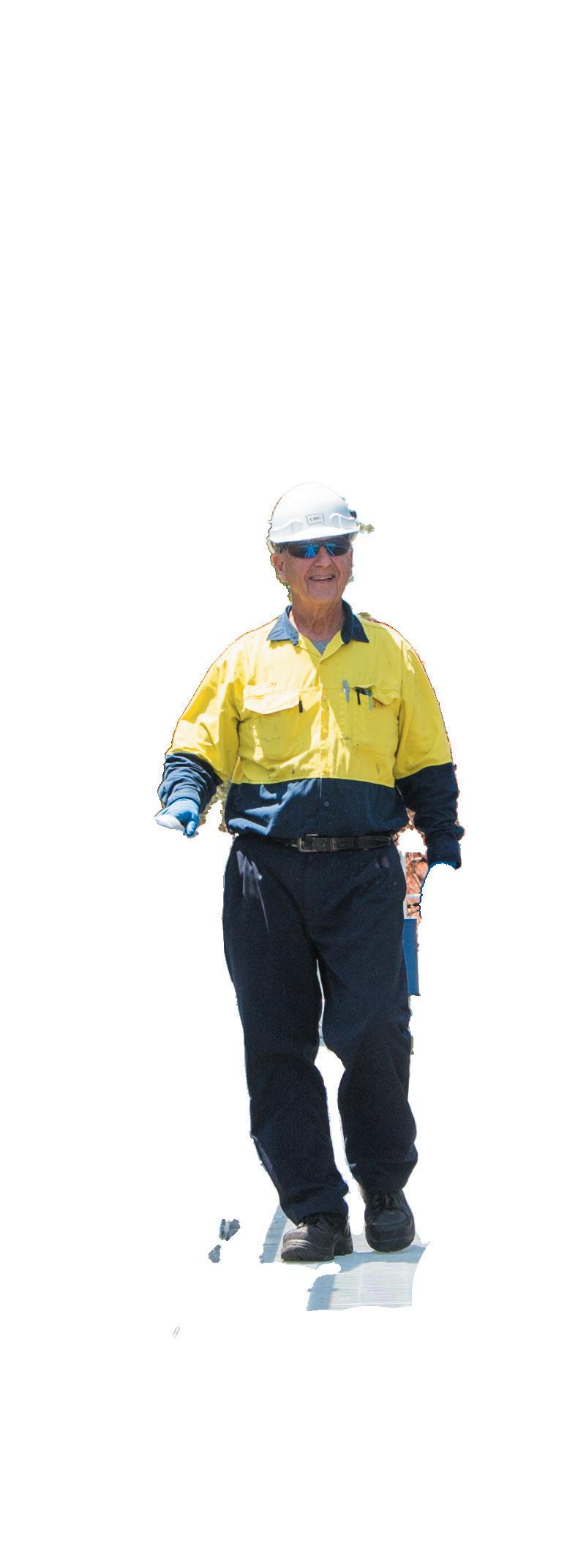
SUEZ, we exist to improve the lives of our communities, wherever we operate in the world.


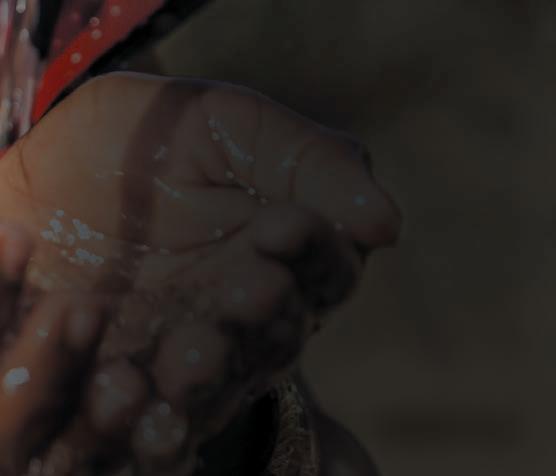


We are a global team unified in a common purpose: creating advanced technology solutions to the world’s water challenges. Developing new technologies that will improve the way water is used, conserved, and re-used in the future is central to our work. Our products and services move, treat, analyse, monitor, and return water to the environment, in public utility, industrial, residential, and commercial building services settings. We also provide a leading portfolio of smart metering, network technologies, and advanced analytics solutions.